
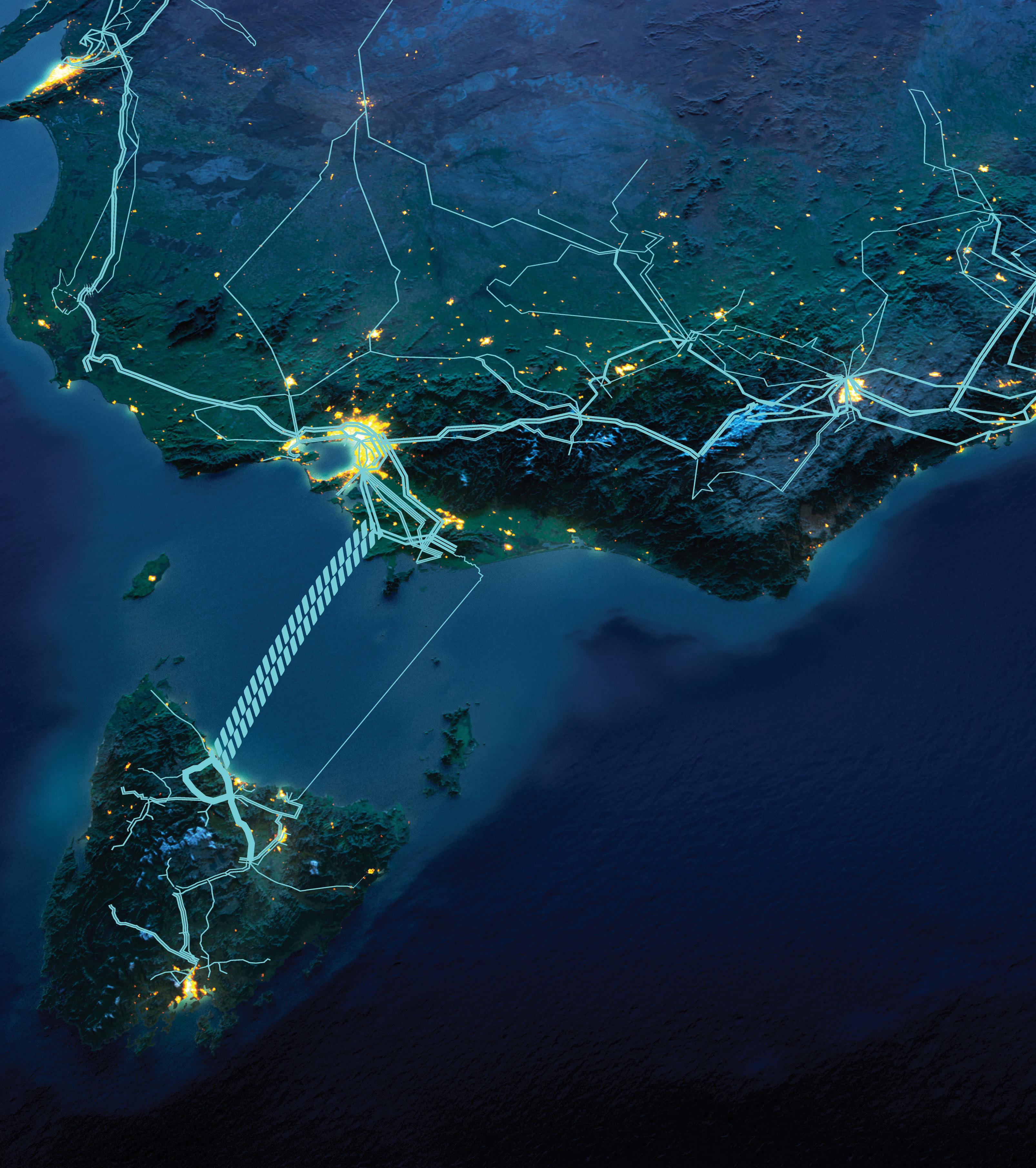
ELEVATING
WATER SEWER ELECTRICITY GAS www.utilitymagazine.com.au Issue #35, August 2022
WATER SECTOR EMBRACES SUSTAINABILITY DIGITAL TECHNOLOGIES
CUSTOMER SERVICE LOOKING AHEAD: THE GRIDS OF THE FUTURE
Perform power quality studies faster and easier.

• Never miss a critical power quality event with the automatic measurement capture system
• Capture fast transients (up to 8 kV), harmonics and other critical power quality issues
• Power directly from measurement circuit without a line cord
Introducing the Fluke 1770 Series Power Quality Analysers.
NEW
Learn more fluke.co/177x-u8


It has been a bit of a hectic time for Australia’s energy utilities with rising gas and electricity prices, outages and high demands causing challenges to the point where the Australian Energy Market Operator (AEMO) announced a temporary suspension of the spot market.
Therefore, securing the long-term reliability of the country’s energy supply – especially as we integrate more renewable sources and decrease reliance on coal power – is of critical importance.
As you can tell from this edition’s cover image, we’re also focused on this challenge and trying to answer the question of what Australia's future energy networks might look like and how we get them there.
One project predicted to have a significant impact is Marinus Link, a proposed 1500MW underwater interconnector aimed at providing the network of the future with ample storage and energy from Tasmania to Victoria’s Latrobe Valley. You can read more about the aims of this project and its current update on page 76.
We’re also covering other aspects of the energy sector, including a move to 100 per cent renewable gas, new virtual power plants, a look at vehicle-to-grid technology, as well as the key insights from our Future Grids panel at the recent Digital Utilities 2022 virtual event.
This issue features a lot of other coverage of this year’s Digital Utilities conferences as the three conferences (Future Grids, Engaging Customer, and Cyber Security) all provided fascinating discussions on some of Australian utilities’ biggest challenges, opportunities, technologies and innovations.

Delegates heard from the industry’s leading utilities, including Powerlink, SA Water, Urban Utilities, Transgrid, Horizon Power, Endeavour Energy, Goulburn Valley Water, The Energy Charter, South East Water, Coliban Water, Energy Queensland, Greater Western Water, Jemena, and more.
You can read the full Digital Utilities wrap up article on page 16, or if you’d like to watch any of the presentations and panel sessions on-demand, register for free at www.digitalutilities.com.au to gain access.
From Digital Utilities and conversations I’ve had recently with utilities, it’s clear that there are lots of exciting digital developments underway to help tackle industry challenges, from leak detection to smart meters.
The other big theme of this issue is climate change and sustainability, and it will continue to be a driving force behind Utility’s content in the future, as this is by far the biggest challenge facing utilities. Only recently have we once again seen the country hit by devastating floods, including in communities that are still reeling from the impacts of flood events from early 2022. We’ve made it a focus to cover resilience and sustainability in both the energy and water sectors, and the impact climate change is having on operations.
While there continue to be major challenges facing energy and water, it’s fantastic to see how this continues to push the industry forward in terms of innovation and new opportunities to deliver these essential services more effectively and sustainably.
Jessica Dickers Editor
UTILITY • AUGUST 2022 Editor Jessica Dickers Editorial Assistant Mikayla Bridge Journalists April Shepherd Lauren DeLorenzo Christopher Allan Stephanie Nestor Holly Tancredi Design Manager Alejandro Molano Designers Luke Martin Danielle Harris National Media and Events Executives Rima Munafo Brett Thompson Marketing Manager Radhika Sud Marketing Associate Andie James Digital Marketing Assistants James Holgate Jackson Barnes Publisher Chris Bland Managing Editor Laura Harvey Published by Cover image highlights our feature on smart grids, and specifically our story on Marinus Link WATER SEWER ELECTRICITY GAS www.utilitymagazine.com.au Issue #35, August 2022 WATER SECTOR EMBRACES SUSTAINABILITY DIGITAL TECHNOLOGIES ELEVATING CUSTOMER SERVICE LOOKING AHEAD: THE GRIDS OF THE FUTURE Monkey Media Enterprises ABN: 36 426 734 954 C/- The Commons 36–38 Gipps St, Collingwood VIC 3066
(03) 9988 4950 monkeymedia.com.au info@monkeymedia.com.au utilitymagazine.com.au info@utilitymagazine.com.au ISSN: 2203-2797 welcome August 2022 ISSUE 35 1 Drop me a line at jessica.dickers@monkeymedia.net.au or feel free to
me on
4950 to let me know what you think. Don't forget to follow Utility magazine on social media - find us on LinkedIn, Twitter and YouTube.
P:
call
03 9988
FROM THE EDITOR
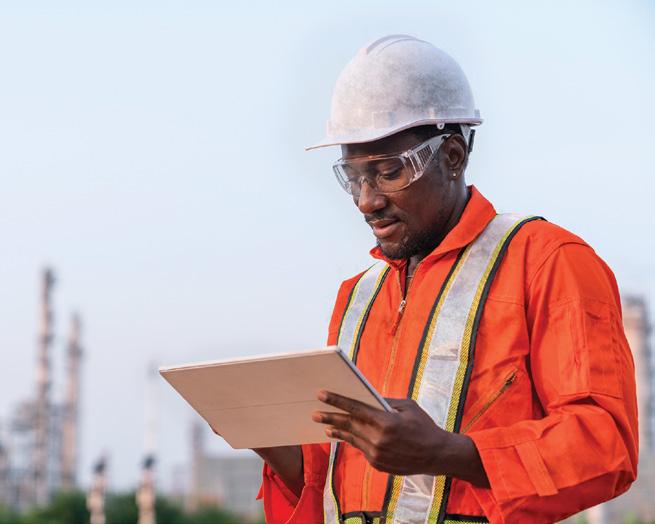
INDUSTRY INSIGHTS
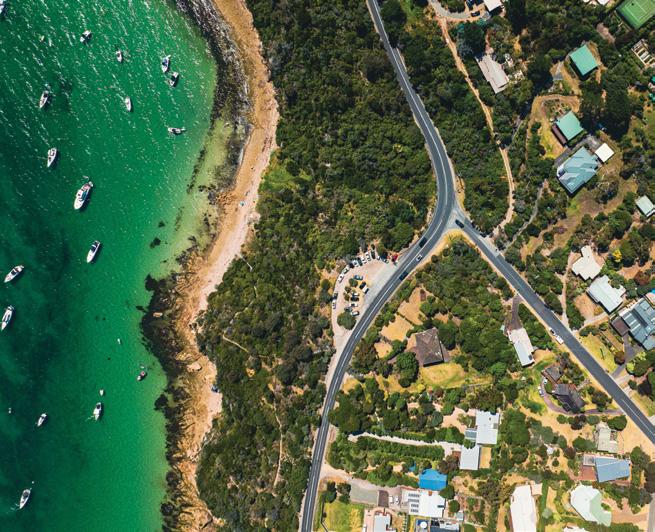
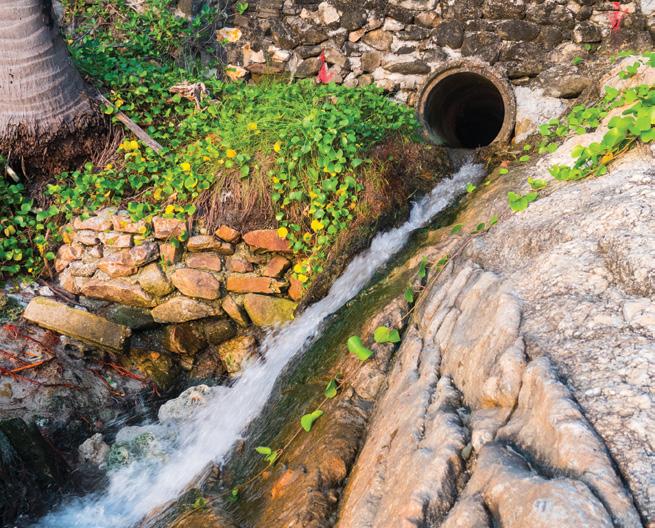
WATER OPERATIONS AND TREATMENT
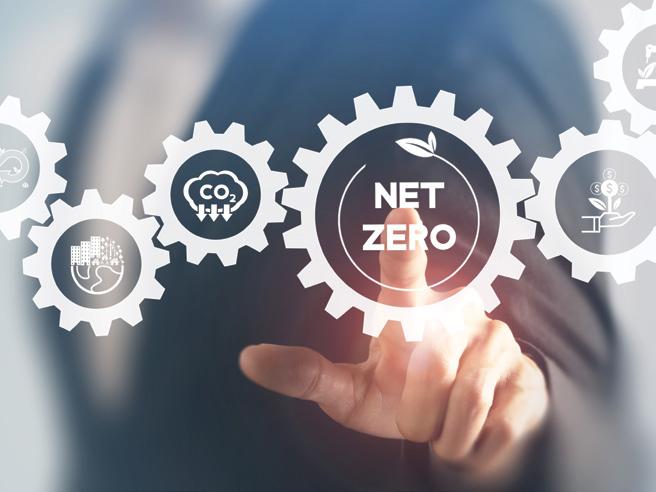
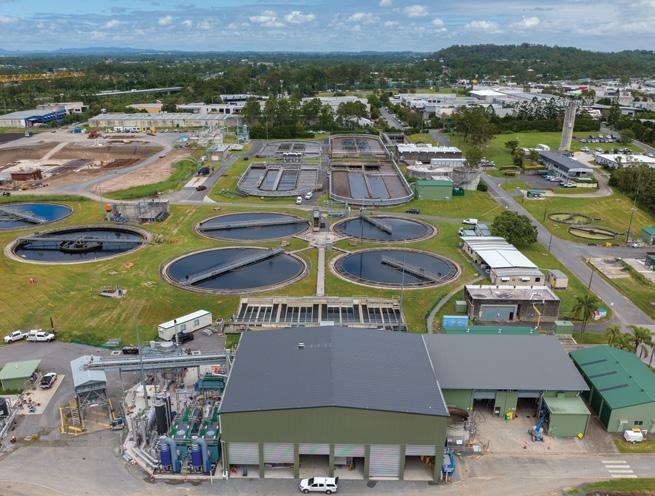
GAS PIPELINES
IRRIGATION
2
WASTE MANAGEMENT Biochar innovation paves the way to net zero 96 Australia’s first biosolids gasification facility is expected to play a major role in sustainably managing the wastewater of the City of Logan’s growing population.
CONTENTS
Wamuran Irrigation Scheme to deliver recycled water to local farms ................................... 98 90 96 26 36 54 102 UTILITY • AUGUST 2 022 WWW.UTILITYMAGAZINE.COM.AU What are the benefits of an air hammer drilling tool in microtunnelling? In the past, very hard rock has posed a problem for microtunnelling machines, with most tooling struggling to successfully drill through it to install a pipeline to specifications. This means most contractors turn down projects where the geotechnical information has identified this ground condition or stop a job part way through when they unexpectedly hit very hard ground. A new drilling tool – an air hammer – has been designed and proven to work in very hard rock while maintaining accuracy, productivity and efficiency, and providing additional environmental and work health and safety benefits.
Flood recovery tool improves SEQ resilience 54 A new flood impact tool was created in early 2022 to aid in South East Queensland's February flood recovery, enabling rapid disaster recovery assessments and applications for affected residents. After the storm: what the floods have taught us 56 Choosing the right check valve for your water needs 58
STORMWATER
Elevating customer service with new technology 26 Dealing with supply chain issues in 2022 30 It’s hard to accurately predict trends and global events – as witnessed with COVID-19 – but one thing that the rest of 2022 is guaranteed to bring is less certainty when it comes to supply chains. Delivering new capital projects is only getting riskier — make it predictable ............................... 32 Four practical ways to implement effective compliance programs 34
Australia’s pathway to 100 per cent renewable gas 90 TRENCHLESS TECHNOLOGY Australian-first robot trenchless technology ...................92 New horizontal directional drill packs a punch .........................94
Critical success factors for community engagement campaigns 36 Climate-resilient wastewater infrastructure............................... 40 UV disinfection system lighting up SA Water treatment 42 New high-tech rotary lobe pumps ................................. 46 Smart water meters tackle water losses in tropical North Queensland 48 How South East Water is reducing customer water leaks and bill shock 50
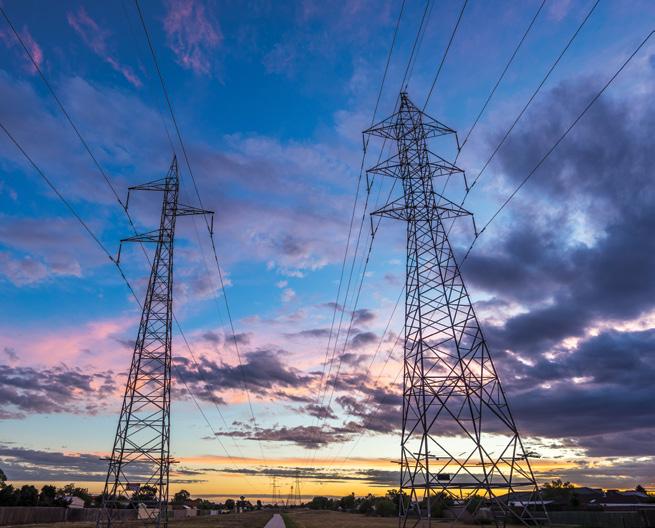
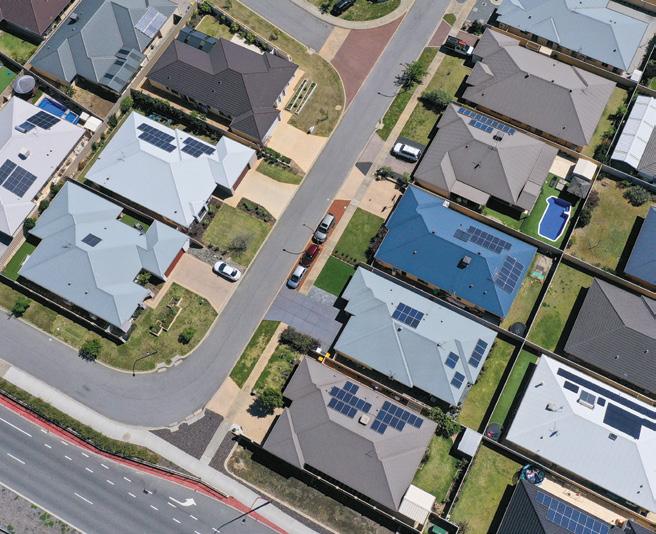

August 2022 ISSUE 35 3 In each issue Welcome from the Editor �������������������������������������������������������������������������������������������������������������� 1 A word from Energy Networks Australia ����������������������������������������������������������������������������������� 4 A word from WSAA ����������������������������������������������������������������������������������������������������������������������� 6 News briefs ������������������������������������������������������������������������������������������������������������������������������������ 8 Advertisers’ index ��������������������������������������������������������������������������������������������������������������������� 104 Editorial schedule ��������������������������������������������������������������������������������������������������������������������� 104 60 84 UTILITY • AUGUST 2022 WWW.UTILITYMAGAZINE.COM.AU 68
MANAGEMENT Balancing current needs with future network demands ..............60 Joshua Thomas, Manager Asset Management Framework at Essential Energy, explores the utility’s asset management capabilities and network asset class strategies. Why security seal numbering matters 63 Using machine learning for bushfire prevention in Australia 64 Renewable energy infrastructure – an opportunity to drive business transformation? 66
The challenges of remote monitoring of assets 84 Despite the challenges facing the remote monitoring of water utility assets, new Internet of Things (IoT) solutions provide economical and durable operational means of remote monitoring. Intelligent SCADA simplifying the journey to autonomy ................... 88 How LIDAR and aerial imagery help the utility sector ................... 88
ASSET
IOT AND SCADA
How digitisation is preparing utilities for the future 68 Who will drive Vehicle-to-Grid? ........................... 72 Critical fault clearing in closed transition switching 74 Linking the Apple Isle to Australia's future electricity network 76 Solving real-world problems at the edge of the grid 80 Project Symphony: Western Australia’s energy future ...............82
SMART GRIDS
A WORD FROM ENERGY
NETWORKS AUSTRALIA
PLANNING FOR AN ENERGY RESILIENT FUTURE
by Jugal Bhatt, Project Officer, Energy Networks Australia
With El Nino and his tumultuous counterpart La Niña creating long dry summers and bushfires, followed by freak storms and flash flooding, Australians are learning to live with the disruption caused by climate change. Here, we look at how energy businesses are adapting to ensure their networks, customers and communities are more resilient to its effects.
Just before the beginning of the Australian summer in 2021, the Bureau of Meteorology (BoM) declared a La Niña event for eastern and northern Australia. La Niña summers are wetter than average, and conditions become favourable for tropical cyclones, but no two La Niña events are exactly alike.
Climate change adds to this complexity and it is predicted the impacts of La Niña will amplify over the coming decades1. Based on the weather in Australia over the past several months, we are already starting to see this become a reality.
STORM SEASON
After a notable heatwave leading up to this year’s Australia Day, Victoria was hit by severe storms that caused damage across the state leading to flash flooding and as many as 12,000 households losing power across the Citipower Powercor network2
Similarly, South-East Queensland experienced wild weather for several days with some regions receiving 50 to 100mm of rain. A severe thunderstorm impacted this region with more than 23,000 homes left without power in Brisbane and Logan3. The storm also caused a tree to fall on to railway powerlines which caused public transport delays.
These sorts of freak storms are occurring more frequently. Just before Christmas 2021, Sydney’s Northern
Beaches experienced a “mini-cyclone” that tore down powerlines and ripped off building roofs4
During such events, it is common to see electricity networks assist each other in disaster and recovery efforts. In New South Wales, Endeavour Energy helped Ausgrid restore supply to more than 30,000 customers following the Northern Beaches storm5
A GUIDE ON CLIMATE CHANGE FOR ELECTRICITY NETWORKS
Energy Networks Australia (ENA) recently released an authoritative report that consolidates and presents
the latest scientific information on climate change and its likely impacts on Australia’s electricity networks.
The report Electricity networks: A guide to climate change and its likely effects 6 utilises the latest data and projections from preeminent sources such as the Sixth Assessment Report from the Intergovernmental Panel on Climate Change (IPCC)7
It will help the sector better understand the risks from climate change, conduct scenario planning, and communicate the likely impacts of climate change on networks with internal and external stakeholders.

UTILITY • AUGUST 2022 WWW.UTILITYMAGAZINE.COM.AU 4
RAILWAY POWERLINES BROUGHT DOWN BY FALLEN TREES IN WOODRIDGE, QUEENSLAND (CREDIT: QUEENSLAND RAIL/ABC NEWS).
NETWORKS COLLABORATING ON RESILIENCE FOR THE FUTURE
Six distribution network service providers (DNSPs) currently undergoing a regulatory reset have formed a joint working group to develop a unified and consistent position on climate change resilience.
The working group held a public forum in February 20228 to seek stakeholder views on how DNSPs can support the customers and communities they serve in adapting to a changing climate over the next ten years and beyond.
Customers and industry identified key areas of focus for DNSPs to progress, which include supporting local resilience planning and
community education, utilising existing partnerships and improving communication and responsiveness during large-scale events.
As networks engage with their customers, one of the emerging trends is that most customers support more investment in hardening the network to build resilience.
LOOKING AHEAD
The Australian Energy Regulator (AER) recently released a guidance note9 to assist NSPs, consumer groups and advocates understand how resilience related funding would be treated under the National Electricity Rules (NER).
1 How will climate change change El Niño and La Niña? - Welcome to NOAA Research
While we know that the frequency and severity of extreme weather events will increase due to climate change, the AER recommends that networks have an optimal balance in their proposals between proactive and reactive funding for resilience.
Networks are now starting to think about how to strike that optimal balance and assessing the costs and benefits of proactive and reactive investment in network resilience.
Resilience is a key priority for all networks going forward, and as the industry peak body, ENA is seeking to coordinate this effort and ensure we address this issue in a nationally consistent manner.
2 More thunderstorms, rain, flash floods expected as Victorians urged to take shelter from wild weather (weatherzone.com.au)
3 Supercell storm tears off roofs, downs trees and cuts power across Brisbane and Logan - ABC News
4 Major Storm Event - Sydney Northern Beaches - Fire and Rescue NSW
5 One dead, two people critical after severe storm hits Sydney's northern beaches - ABC News
6 ENA Climate Change report: https://www.energynetworks.com.au/resources/reports/2022-reports-and-publications/electricity-networks-aguide-to-climate-change-and-its-likely-effects/
7 AR6 Climate Change 2021: The Physical Science Basis — IPCC
8 Network resilience consultation - Ausgrid
9 AER note on network resilience | Australian Energy Regulator

Pumping Solutions for the Utility Sector

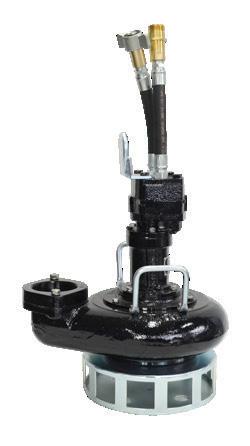
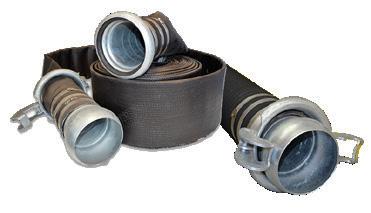
Visit us online for more info toolkwippumps.com.au P: +61 3 8805 0500 E: sales@toolkwippumps.com Available in: NSW • VIC • QLD • SA • TAS ECO FRIENDLY PUMPING
DEWATERING • SEWER BYPASS • BULK WATER SUPPLY S RANGE FEATURES + Auto-prime to 8.8m + Vortex impeller for superior solids handling + Run dry + Eco-friendly HYDRAULIC SUBMERSIBLE PUMPS HOSES & ACCESSORIES UTILITY • AUGUST 2 022 WWW.UTILITYMAGAZINE.COM.AU 5
TOWARDS RESILIENCE: A WORD FROM WSAA CLIMATE CHANGE AND THE URBAN WATER INDUSTRY
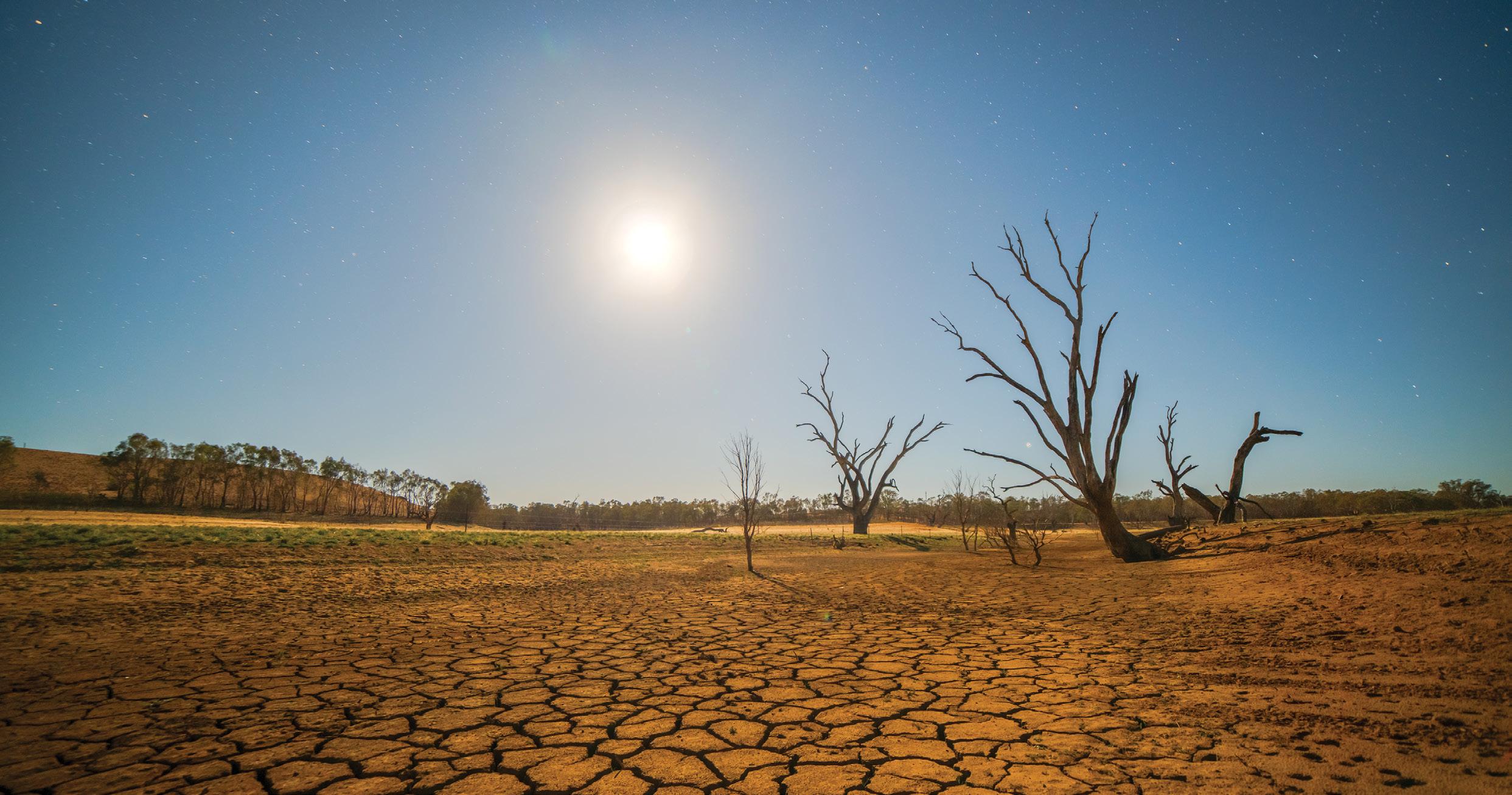
Climate change is with us now and water is at the centre of its impacts globally, from changes in rainfall patterns and water scarcity, to the way water is managed in the landscape, to the frequency of storms and other major weather events.
In Australia and New Zealand, the impacts of climate change are expected to include more variable rainfall patterns; continued increases in average air temperatures; more heat extremes and fewer cold extremes; more frequent and intense storms; a longer fire season; and a gradual increase in sea level, along with storm surges.
The urban water industry is impacted by climate change more than most sectors, but water can be harnessed in smarter and better ways to both reduce emissions and adapt to climate change at the same time.
Last November, WSAA published our paper Towards resilience: Climate change and the urban water industry in Australia and New Zealand that has put forward the range of ways the urban water sector has been impacted by climate change, its current emissions profile and ambition to be net zero, as well as the breadth and diversity of its adaptation actions.
The paper shares case studies on leading practice from Australian and New Zealand water utilities and highlights paths towards improving resilience.
HOW ARE WE ADAPTING TO OUR FUTURE CLIMATE AND IMPROVING OUR RESILIENCE?
Water utilities can work towards improving their resilience to climate change and extreme weather events by focusing on resistance, recovery, and transformation of approach.
Australian and New Zealand water utilities are already adapting to significant changes in their operating environment from reduced inflows, the impacts of extreme events and other disruptions. This is forming an ever-larger part of our business, as well as the broader sector, which is increasingly galvanised around providing leading edge advice,
knowledge sharing, tools, frameworks, and other resources to support our industry’s shift.
We are increasingly investing in rainfall-independent supplies to boost water security, as well as considering the likely impacts of climate change on our large and aging asset base from both a risk and financial perspective.
We are adapting our assets and recognising that the performance of our assets across their lifecycle is likely to be impacted by climate change. This may lead to redesigning of our assets, their materials, optimal locations, sizing, and timing.
Water utilities will need to do more with less water, so continuing to invest in water efficiency and conservation is critical. Managing leakage is one way the industry is meeting both our water security challenges and reducing emissions from undelivered water at the same time. Innovation such as acoustic pipe sensing is just one example of leading practice in this space.
The urban water industry is also developing its capability in adaptive and integrated planning across sectors, particularly with the land-use planning sector through an Integrated Water Management approach with all organisations involved in the urban water cycle. Success here will increase our resilience and ensure cities and towns are liveable and thrive despite the changing climate.
We are combining this with a circular economy mindset that views by-products as a resource and finds innovative and cost-effective solutions to reusing those by-products. This can reduce the demand for primary products (such as chemicals used in water treatment, nitrogen, phosphorus and oxygen) and thus contribute to emissions reduction in the extractive industries sector (a Scope 3 emissions reduction for water utilities).
UTILITY • AUGUST 2022 WWW.UTILITYMAGAZINE.COM.AU 6
ACHIEVING NET ZERO
The urban water industry does generate emissions, and as an industry these are growing, with the 2019-20 National Performance Report indicating a record 4.25 million tonnes of emissions were produced, a 32 per cent increase on the preceding year (BOM 2020). The industry has a responsibility to shareholders, customers, and future generations to do as much as we can to reduce our emissions.
To contribute to global and national efforts to limit climate change and keep global temperature rise this century well below 2°C, and preferably to 1.5°C, the urban water industry will achieve net zero greenhouse gas emissions by 2050. In many cases, water utilities will achieve this target earlier than 2050, particularly where shareholder and customer expectations support a faster reduction in emissions.
In May 2022, we updated our Urban Water Industry Climate Change Position to reflect the increased urgency and expectations upon the sector following the 26th UN Climate Change Conference of the Parties (COP26) in Glasgow, the release of the IPCC Sixth Assessment report as well as ongoing extreme weather changes experienced in Australia and New Zealand, strengthening commitments by water utilities towards reaching Net Zero.
INDUSTRY COMMITMENTS
Through collaboration and partnership with our customers, communities, Indigenous Australian and Torres Strait Islander peoples, the Maori people, government stakeholders and other sectors, the urban water industry commits to:
• Reduce water loss in our networks and encourage our customers to value efficient and effective water use
• Strengthen economic and environmental resilience through smarter and better use of water, infrastructure, and holistic adaptation to climate change
• Develop lasting relationships with Indigenous communities and businesses to ensure a partnership and stewardship approach to our shared challenges in water resource management
• Leverage our unique advantage in water management to improve climate adaptation and urban liveability through green, cool and healthy environments
• Implement circular economy principles in managing resources including water, waste, energy and natural capital, to foster the transition to a more circular future
• Support healthy waterways to restore and regenerate ecological and community values
• Engage with customers and partner with communities and other sectors to build understanding of the trade-offs and cascading risks arising from our interdependencies, to achieve a balance between climate change costs and outcomes, including the needs of future generations
The water industry is uniquely positioned to mitigate our impact on our climate, respond and adapt to the impacts of a changing climate on the delivery of our services, and improve the resilience of our communities and the environment in adapting to a changing climate.
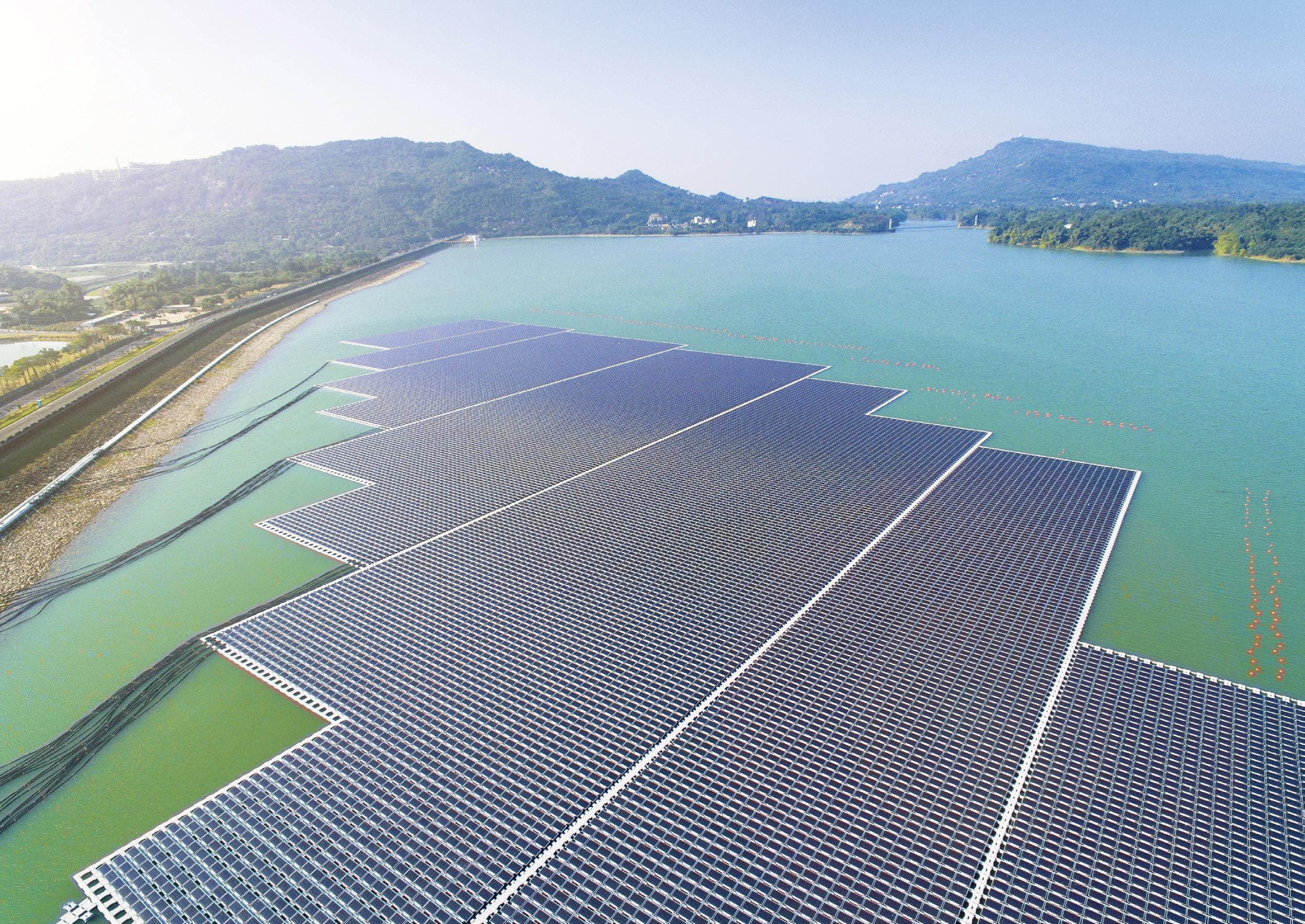
To read our updated Urban Water Industry Climate Change Position, visit www.wsaa.asn.au/publication/wsaa-industry-climate-change-position
To read our Towards Resilience paper and case studies, visit www.wsaa.asn.au/publication/ towards-resilience-climate-change-and-urban-water-industry-australia-and-new-zealand.
7
NEW FEDERAL MINISTERS FOR ENERGY AND WATER
The newly-elected Federal Government appointed Chris Bowen as Minister for Climate Change and Energy, and Tanya Plibersek as Minister for Environment and Water.
This is the first time since 2013 that Australia has had a Minister for Climate Change at the federal level. Mr Bowen replaced Angus Taylor, who served as Ministers for Energy and Emissions Reduction from 2018 to 2022.
New South Wales senator, Jenny McAllister, was sworn in as the Assistant Minister for Climate Change and Energy.
Ms Plibersek, who previously served as Shadow Minister for Education and Women, replaced Sussan Ley as Minister for Environment and Keith Pitt as Minister for Water.
Ms Plibersek’s role will focus on looking after issues such as environmental protection, while Mr Bowen’s role will address global warming.
Madeleine King was appointed Minister of Resources, replacing Keith Pitt.
Prime Minister, Anthony Albanese, said the Government has been very conscious about the issue of cost of living and climate change, and these appointments reflect this.
“There are major challenges for the environment. We know that the impact of climate change is having a significant impact,” Mr Albanese said.
Mr Bowen’s appointment requires him to negotiate with a newly-elected parliament that features an expanded delegation of members of the Greens Party, as well as several independent candidates.
Energy Networks Australia (ENA) welcomed Mr Bowen’s appointment. ENA Chief Executive Officer, Andrew Dillon, said the network sector looked forward to working with Mr Bowen to deliver Australia’s transition to a net zero emissions energy system.
“Australia’s energy networks have a vital role to play in decarbonising the energy system,” Mr Dillon said.
“Our members are aligned on the importance of creating a whole-of-system approach that sees transmission,


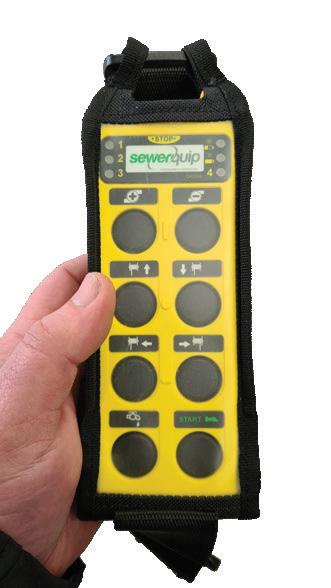


UTILITY • AUGUST 2022 WWW.UTILITYMAGAZINE.COM.AU 8 NEWS RANGER R50T-70 TURBO TRAILER JETTING SYSTEM COMPLETELY REMOTE CONTROLLED! FEATURES y Tier 4 Industrial Hatz water cooled diesel engine y Automatic throttle control y Burst protection y Low emissions y Noise reduction Call us on 1800 816 830 to find out more. enviroline.net.au
distribution and gas networks working together to achieve Australia’s net zero ambitions.
“Governments at all levels have a role to play in supporting renewables integration and delivering policy settings that put downward pressure on energy prices.
“Timely and efficient investment in new transmission is an urgent priority and we look forward to working with the incoming government to ensure its Rewiring the Nation policy delivers the more connected grid electricity customers need.”
Mr Dillon said the newly elected Government’s proposed reforms would be well supported by changes to the way federal ministers engaged with state energy ministers.
“The council’s re-establishment and Government’s commitment to greater collaboration between the states and territories is essential for a more consistent approach to energy affordability and sustainability challenges,” Mr Dillon said.
“The energy sector looks forward to these meetings being more transparent and consultative.”

Odour & Air Treatment Solutions that Won’t Cost the Earth





Clean TeQ Aromatix Pty Ltd ABN 98 600 353 991 w. www.clqa.com.au e. info@clqa.com.au Brisbane Willawong QLD 4110 11/16-17 Mahogany Court p. +61 7 3711 2694 UTILITY • AUGUST 2022 WWW.UTILITYMAGAZINE.COM.AU 9 NEWS
WINNER ANNOUNCED FOR VICTORIA’S BEST TASTING TAP WATER 2022
Melbourne Water’s Cresswell Water Treatment Plant at Healesville has won the Ixom Best Tasting Tap Water in Victoria 2022 competition.
This is the first time Melbourne Water have won the Victorian title.
The tap waters in the final were:
• Central Highlands Water
• Goulburn Valley Water
• Melbourne Water
Heats were held in Bendigo on 21 June and the final was on 22 June.
The top drop from each state will battle it out for the top prize in New South Wales where the 2021 national champion comes from.
Melbourne Water will now represent Victoria at the national championships later in 2022.
Water authorities from various regional and metropolitan areas will participate in state heats across 2022 where water samples will be judged on qualities like colour, clarity, odour and mouthfeel during blind taste tests.
The winner of the Ixom 2022 Best Tasting Tap Water in Australia competition will go on to represent Australia at the annual Berkeley Springs International Water Tasting Competition held in West Virginia, USA.


Water Industry Operators Association of Australia (WIOA) Managing Director, George Wall, said the competition will recognise and acknowledge the individuals and organisations that are stepping up to make sure their communities are supplied with safe drinking water every day.
“We want to use the competition to let people know the great work that is going on in local communities around Australia and help shape and secure Australia’s water future,” Mr Wall said.
Ixom Managing Director and CEO, David Head, said Ixom is proud to be the sponsor of the prestigious 2022 WIOA Best Tasting Tap Water competition.

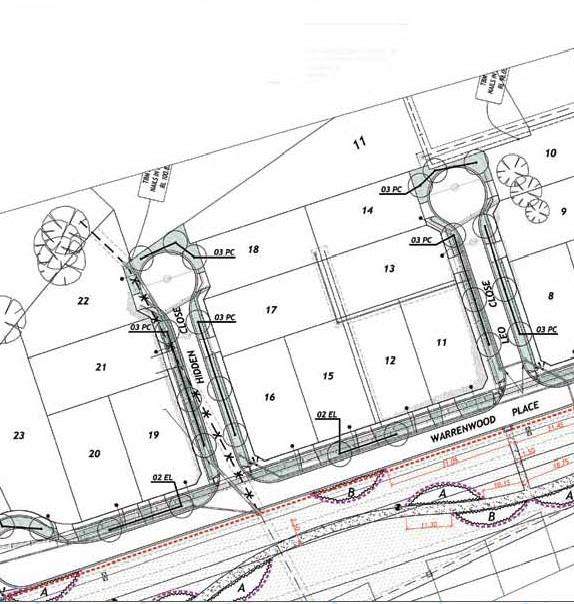




UTILITY • AUGUST 2022 WWW.UTILITYMAGAZINE.COM.AU 10
NEWS tenders@lancogroup.com.au | www.lancogroup.com.au | 1300 1 LANCO (1300 152 626) Civil and Infrastructure Engineering | Project Management
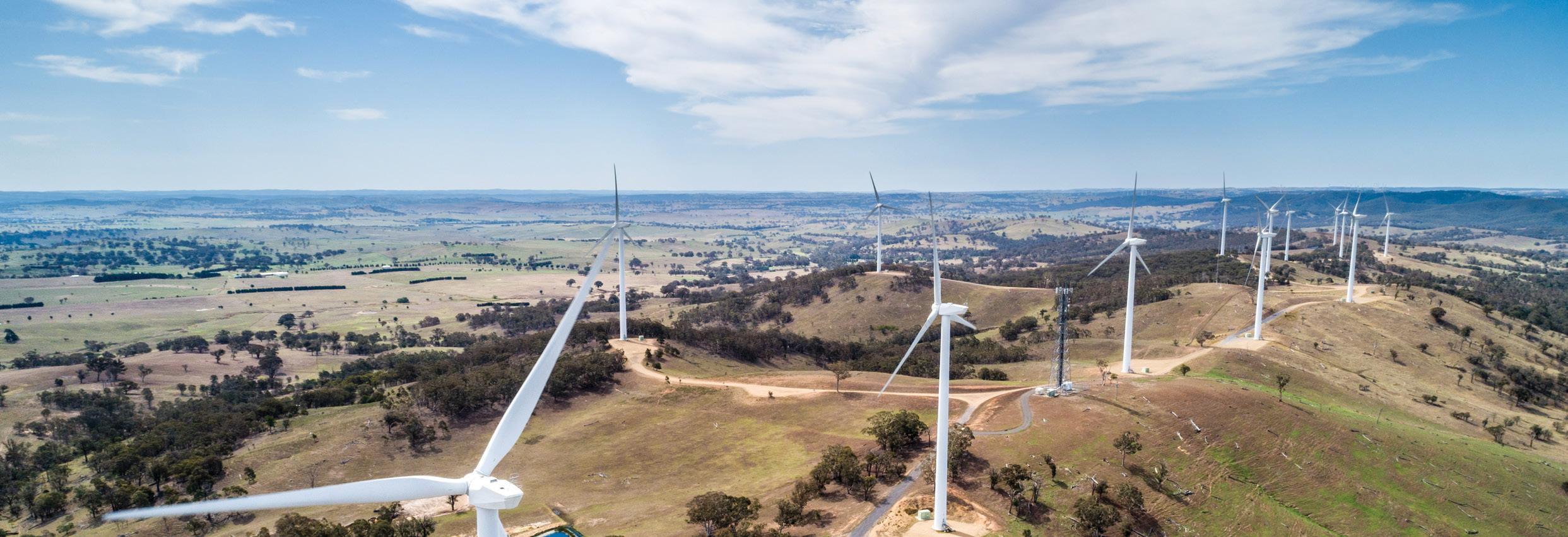
TACKLING THE ENERGY CRISIS
Federal Minister for Climate Change and Energy, Chris Bowen, brought together state energy ministers for a crisis meeting in June 2022.
Measures discussed in the meeting included tackling rising energy costs, financial support to vulnerable energy users, cutting emissions by improving supply and lifting demand-side efficiency, improving energy management and encouraging fuel switching.
Following the meeting, ministers from every state and territory agreed to actions to help pave the way for a clean energy future.
Federal Climate Change and Energy Minister, Chris Bowen, said these steps are “no silver bullet, no magic answers, but material steps forward in a very positive fashion.”
Mr Bowen outlined three key steps from the meeting, which included:
• Developing a capacity mechanism, which prioritises storage and renewable energy
• A gas procurement and storage plan to be coordinated by the Australian Energy Market Operator (AEMO)
• A National Transition Plan, which has consensus from the Federal Government and all states and territories
The Australian Energy Council (AEC) praised Federal and State Ministers’ decision to back renewables and storage as part of a new ‘National Transition Plan’ to protect Australians into the future.
The AEC said the Energy Ministers’ Communique following their meeting sends the right message to the market.
AEC’s Chief Executive, Sarah McNamara, said, “We are very encouraged by the Federal, State and Territory Ministers’ commitment to work together to ensure Australia’s energy system is affordable, reliable and secure during the transition to more renewables-based generation.
“At the moment, short term issues are causing genuine pain for consumers across Australia, focussing on getting reforms right will help protect Australia’s electricity networks in the future.”
Since the crisis meeting, leading industry bodies have called upon the ministers to work together on long-term responses to the national energy crisis.


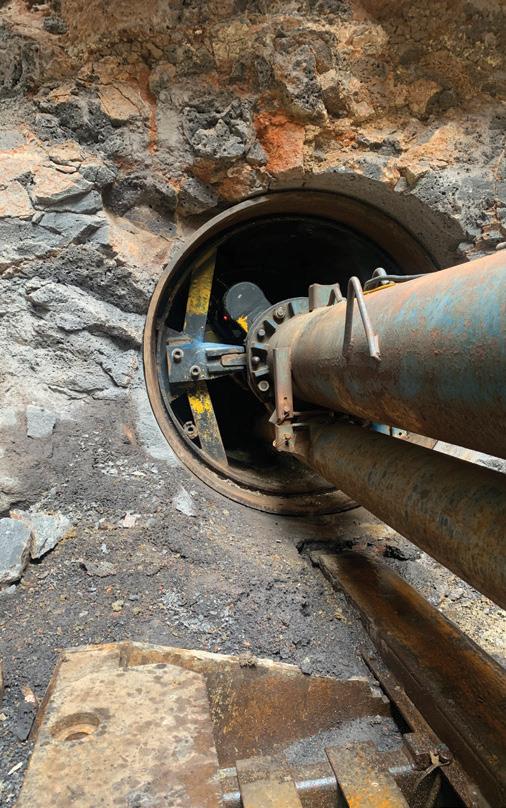
UTILITY • AUGUST 2022 WWW.UTILITYMAGAZINE.COM.AU 11
NEWS Unit 2 / 85 Heatherdale Road, Ringwood Vic 3134 PO Box 2500, North Ringwood Vic 3134 P: (03) 9872 4596 | F: (03) 9872 3293 | E: info@pezztrenchless.com.au Still the market leaders in laser guided microtunnelling Bore diameters from 325mm up to 2800mm Used for gravity sewers, water mains, storm water, gas and electrical conduits. Specialists in “free bore”, sleeve boring and pipe jacking in all sizes The Next Generation in Trenchless Technology
NEW DESALINATION PLANT FOR PERTH TO BE RENEWABLY-POWERED
Water Corporation has proposed a new 100 billion litre-a-year desalination plant in Western Australia, with this new plant and Perth’s two existing ones to be powered by renewables.
Proposed on Water Corporation land north-east of Alkimos Beach and subject to environmental approval, the plant will be capable of delivering 100 billion litres of drinking water annually to support the Integrated Water Supply Scheme (IWSS).
The plant will be delivered in two stages, with the first 50 billion-litre stage expected by 2028.
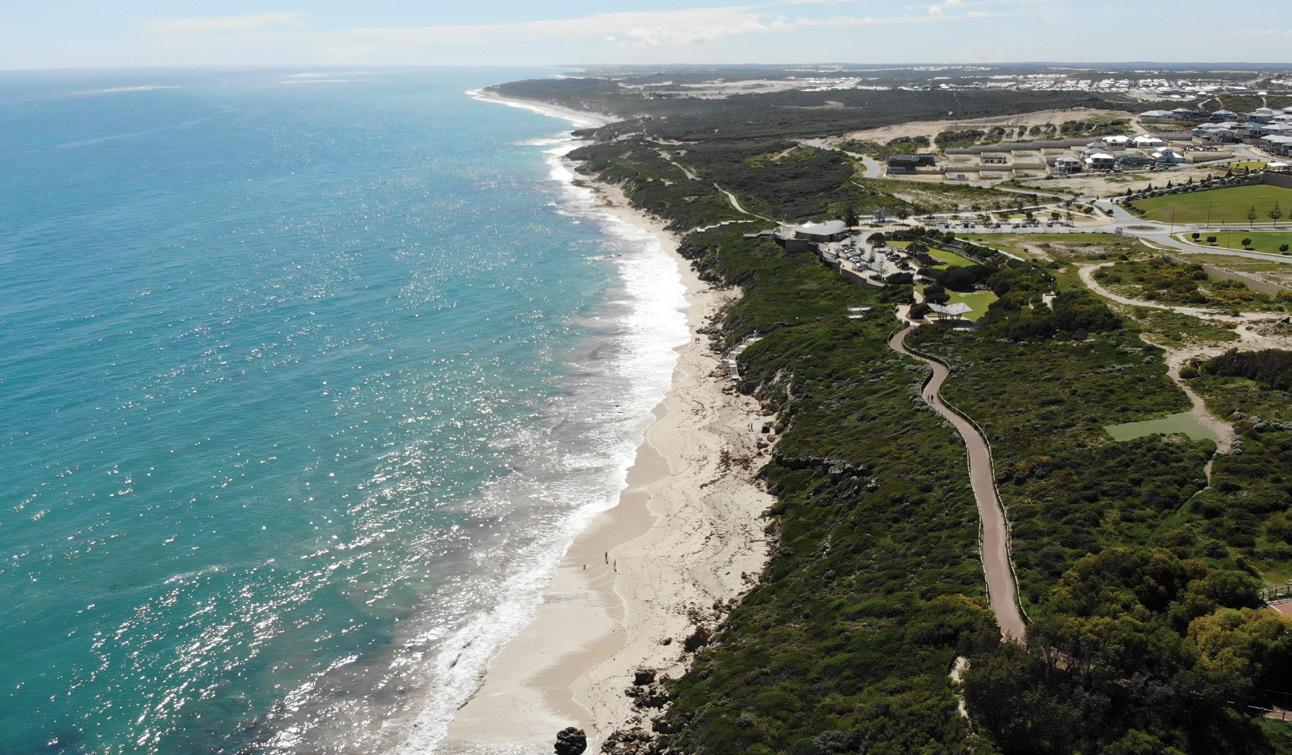
Western Australians enjoy secure water supply by investing in a new major source to support the growing city of Perth.
“Not only will the Alkimos Seawater Desalination Plant provide an eventual 100 billion litres of drinking water annually, it will also reduce reliance on precious groundwater to help protect our lakes, wetlands, bushland and parks,” Mr Kelly said.
“Desalination is energy intensive, that’s why it’s significant that Water Corporation has set itself a target of net zero by 2035, which will include having all three desalination plants powered by renewable energy.”
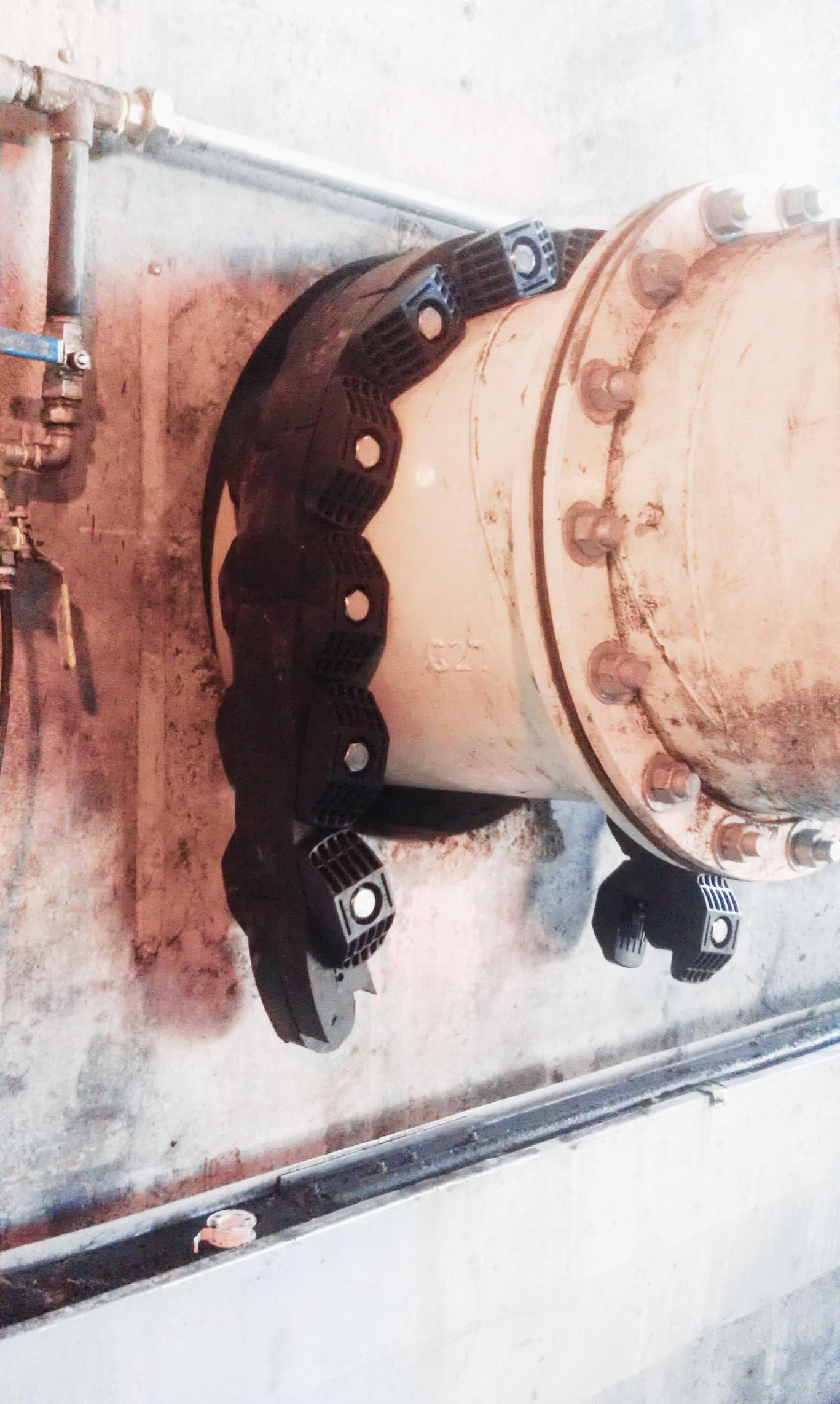
Water Corporation will also secure up to 400MW of additional renewable wind energy which will enable all
three desalination plants, including the existing desalination plants at Kwinana and Binningup, to be powered with renewable energy.
Western Australian Premier, Mark McGowan, said the new renewablypowered desalination plant continues the State Government’s investments in climate action to support Western Australia’s long-term future.
Water Corporation is also committing to a new, earlier net zero greenhouse gas target across all operations by 2035.
The new plant’s design has been carefully considered to protect the surrounding environment, cultural heritage and meet community expectations.
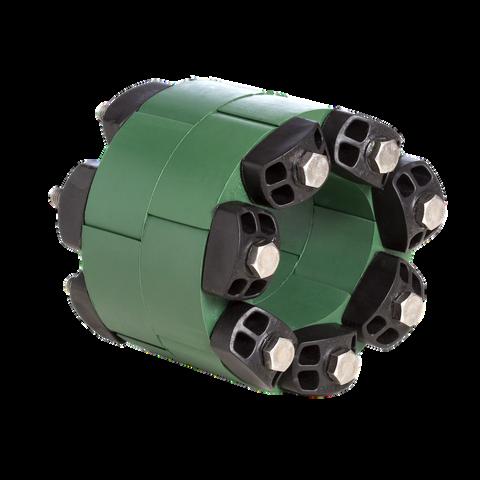

Link-Seal offer hundreds of solutions to seal pipe penetrations ranging in size from 10mm to 3.6 meters diameter.
Link-Seal are suitable for most types of pipes including PVC, HDPE, Copper and Steel

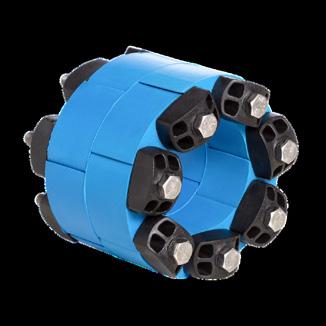
Resistant to water, oil, gas, aggressive chemicals and fire
Projex Group helps calculate the right Link-Seal size and model for your application

AUGUST 2022 WWW.UTILITYMAGAZINE.COM.AU
NEWS
Pipe
ions
001 114 mail@projex com au
Link-Seal
Penetration Seal Solut
1800


AEMO PROVIDES 30-YEAR ROADMAP FOR TRANSITION TO RENEWABLES
The Australian Energy Market Operator (AEMO) has provided a 30-year roadmap to speed up the transition to renewables with key investments in the National Energy Market (NEM) in its 2022 Integrated System Plan (ISP).
AEMO has involved more than 1,500 stakeholders to produce its third ISP, based on rigorous economic and engineering analysis.
AEMO CEO, Daniel Westerman, said Australia is experiencing a complex, rapid and irreversible energy transformation.
“The 2022 ISP informs Australia’s energy transformation, based on an ‘optimal development path’ (ODP) of essential transmission investments that will efficiently enable low-cost, firmed renewable energy to replace existing coal generation,” Mr Westerman said.
These transmission projects are forecast to deliver $28 billion in net market benefits.
The ODP identifies five projects as immediately actionable which should progress as urgently as possible:
• HumeLink
• VNI West
• Marinus Link
• Sydney Ring
• New England REZ Transmission Link
The Climate Council has welcomed the 2022 ISP, acknowledging that Australia’s transition to net zero by 2050 is accelerating faster than expected, with the impacts of coal-closures brought forward and renewables becoming cheaper.
Climate Councillor, Greg Bourne, said, “[AEMO’s report] shows wind and solar can provide more of Australia’s energy needs, as we’re seeing fossil
fuels becoming more unaffordable and unreliable.”
Energy Networks Australia (ENA) said AEMO’s ISP highlights the need for timely transmission development to support Australia’s renewable energy transition.
ENA Acting Chief Executive Officer, Tamatha Smith, said transmission development – making the electricity system more connected across the whole of the NEM – was critical to enable the most affordable transition to a net zero energy system.
Marinus Link welcomed AEMO’s 2022 ISP, which confirms that Marinus Link should be delivered urgently to provide much-needed clean energy for the national grid.
Hydro Tasmania also welcomed the 2022 ISP, confirming Marinus Link as “immediately actionable”, noting it should progress urgently.

Innovative Water Solutions
www.veoliawatertechnologies.com.au
UTILITY • AUGUST 2022 WWW.UTILITYMAGAZINE.COM.AU 14
NEWS
Through its innovative solutions, Veolia Water Technologies enables industry, local authorities and citizens to optimize their use of resources for more efficient, environmentally-friendly and socially responsible outcomes. We understand the importance of increasing the value of water and we do so by supplying high quality water, treating and reusing wastewater, producing and/or recovering energy, extracting raw materials and capitalizing on valuable byproducts.
WATER TECHNOLOGIES
© Veolia Photo Library
ART SEWER




WASTEWATER LEVEL MONITORING
Compact, low cost, battery-powered radar sensor and Telemetry all-in-one ATEX/IECEx (Zone 0), NB-IoT, Cat-M1
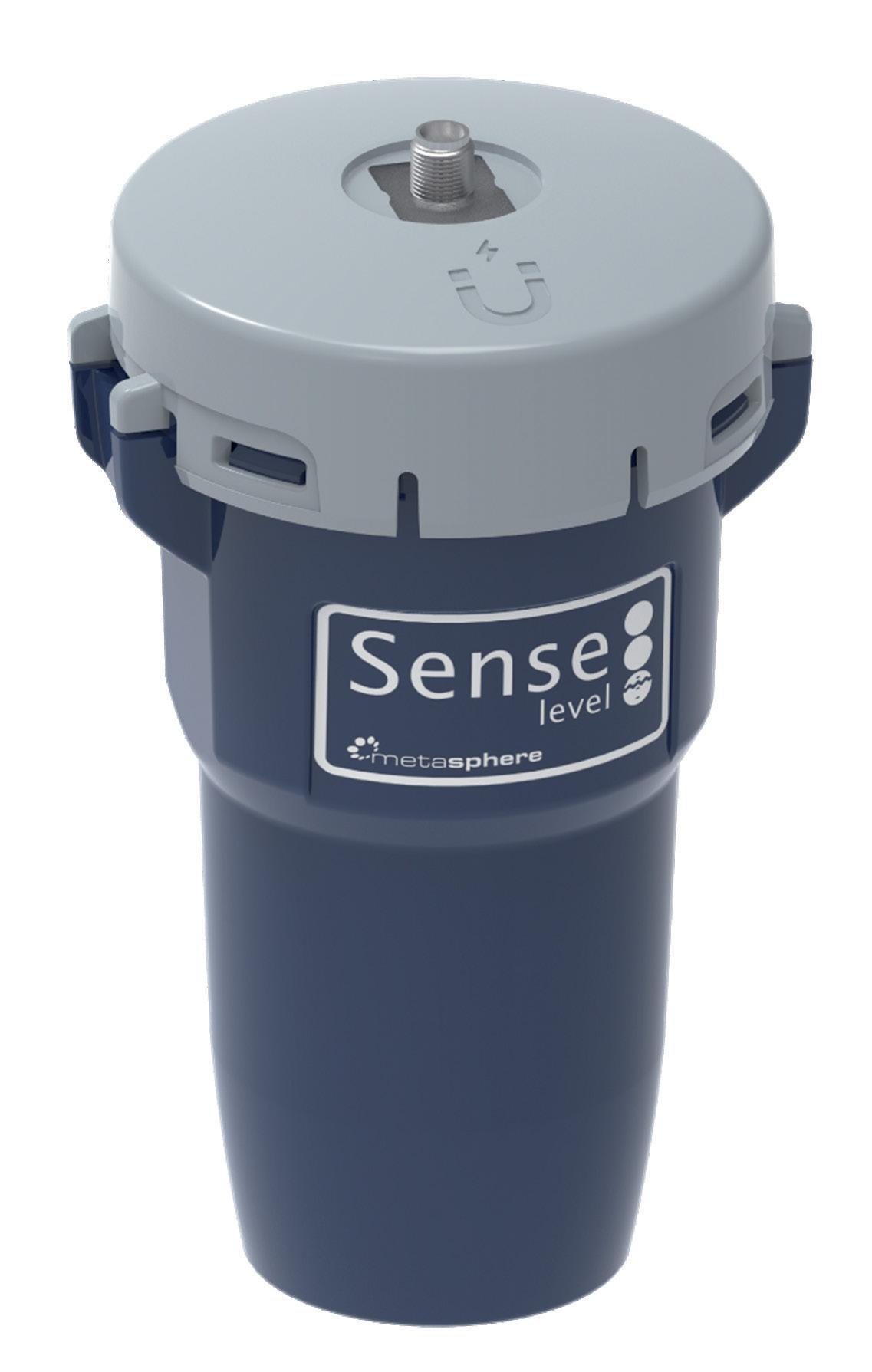
Part of an all-in-one solution that delivers
Full network visibility, performance and forecasting
Also perfect for

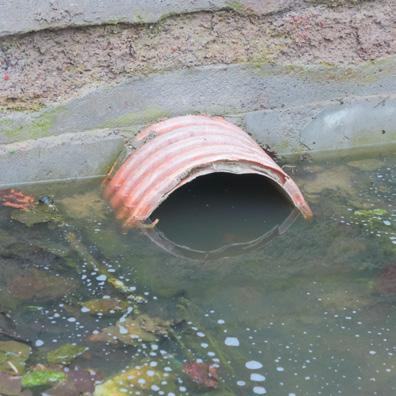
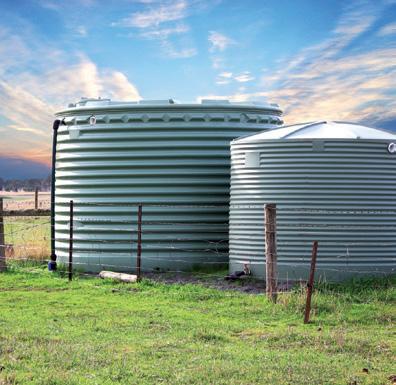
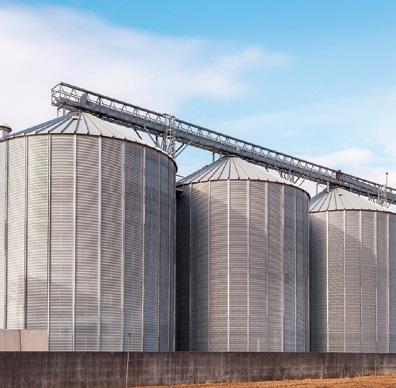
For more information contact info@metasphere.net.au +61 2 9956 7407
RIVER LEVEL STORMWATER LEVEL TANK LEVEL SILO LEVEL

WHAT MAKES A
DIGITAL UTILITY IN 2022?
Digital Utilities 2022 featured three unique virtual conferences: Future Grids, Engaging Customers and Cyber Security.
These conferences dived deep into how we can create the most efficient energy and water networks, especially as we integrate new technologies; how to keep these networks and assets secure from cyber attacks; and the latest insights into managing customer experience in the digital age.
Digital Utilities is run by the team behind Utility, with the event essentially being an extension of the magazine and a chance for us to bring this content to a virtual format and have readers hear from experts and leaders in the utility industry.
More than 400 utility professionals registered for the event to hear from the program of experts, featuring speakers from Powerlink, SA Water, Urban Utilities, Horizon Power, South East Water, Endeavour Energy, Goulburn Valley Water, Jemena, Greater Western Water, Energy Queensland, Coliban Water, The Energy Charter, Iota, EY Oceania Cybersecurity and Flinders University.
The event was also sponsored by three industry leading companies whose involvement helped support the delivery
of the event – the Future Grids Major Sponsor Iota, the Engaging Customers Session Partner Sense and the Cyber Security Panel Sponsor Madison Group.
PREDICTIONS FOR OUR FUTURE GRIDS
The first conference, Future Grids, looked specifically at the evolution of energy and water networks as we begin to integrate new technologies, and the challenges and opportunities this creates.
Keynote speaker Mark Pozdena, General Manager of Business IT, Powerlink looked at the foundations for a successful digital future and the work that Powerlink is undertaking in its own digital transformation.
Mark said the energy industry is changing and this requires companies to change as well. Utilities need to determine what is needed in order to meet future needs of the organisation, and right now, that means having access to the right information in order to perform their roles efficiently and safely.
He said data is at the core of decision making in a modern digital environment, but there are challenges around legacy
UTILITY • AUGUST 2022 WWW.UTILITYMAGAZINE.COM.AU 16
NEWS
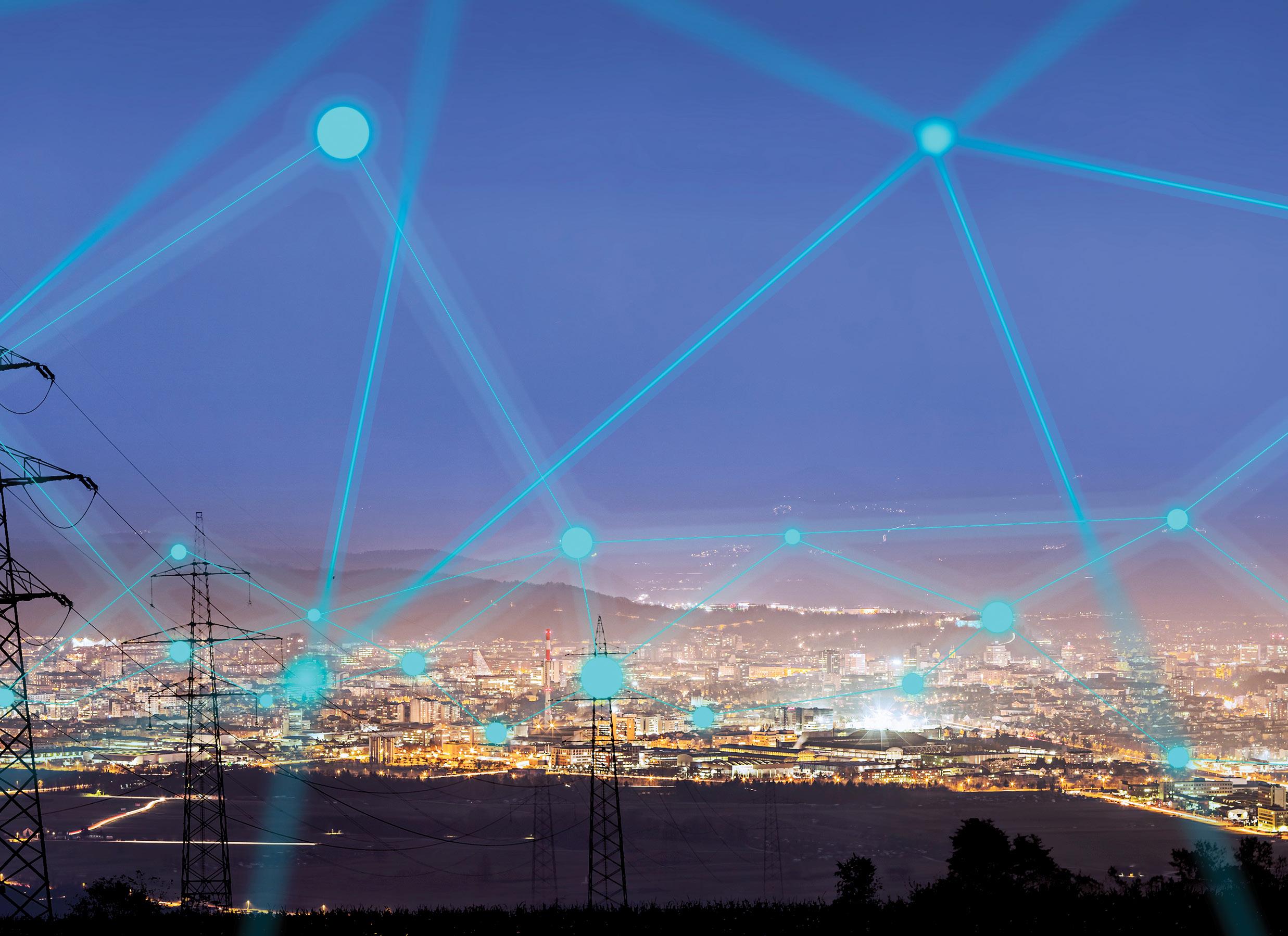
From 21–23 June, the Digital Utilities 2022 event brought together industry leaders from across Australia’s utility sector for three virtual conferences exploring how we can create efficient and secure future grids and engage customers in the new digital era. Here are the key pieces of advice from the event’s 20 expert speakers who work in some of the largest and most innovative utilities in the country.
systems, with decades of unplanned integration and conflicting sources of ‘truth’.
Mr Pozdena identified six large-scale programs of investment at Powerlink, including Next Generation network ops, field delivery optimisation, ERP (SAP) transformation, strategic data, digital engineering and information security management.
He also identified that two of the biggest risks that occur when undertaking this work are cyber security and skills shortages. Cyber security is the biggest risk to critical infrastructure and essential services, while current skills shortages are impacting all industries and digital programs.
Mr Pozdena said the key to the utility’s success has been its people; as digital transformation is not just about the technology. Powerlink’s employees know its business operations, processes and systems inside and out, understand the data, are trusted to tell management if something isn’t right, and are invested in the utility’s success.
Representing the water sector and its networks was Amanda Lewry, General Manager of Sustainable Infrastructure at SA Water who talked about SA Water's
water mains condition assessment strategy and the digitisation of water networks.
Ms Lewry detailed how the utility digitised its network in Adelaide’s CBD and deployed smart sensors that allowed for proactive repairs and acoustic leak detection monitoring.
SA Water’s $155 million investment in maintaining and improving water mains and growing the use of smart technology between 2022 and 2024 has already contributed to a downward trend in water main breaks across the network.
The conference also saw Ray Achemedei, General Manager Technology and Digital Transformation at Horizon Power, presenting on the utility’s digitalisation journey to becoming a utility of the future, reflecting on how it is rethinking change management to deliver better solutions for employees, customers, and communities.
Picking up the themes around people that Mr Pozdena mentioned earlier, Mr Achemedei challenged delegates to actually think about digital transformation as change management. He gave some great advice to utilities on this journey revolving around building executive level support from the beginning, understanding the technology deeply,
UTILITY • AUGUST 2022 WWW.UTILITYMAGAZINE.COM.AU 17
NEWS
creating a game plan while still preparing to be agile, and realising the changes in company culture.
Future Grids also featured a jam-packed industry panel with three speakers discussing the topic of enhancing grids for a smart, connected utility future. Panellists included Shaun Nesbitt, Chief Digital and Information Officer, Urban Utilities; Marie Jordan, Executive General Manager - Network, Transgrid; and Ash Vesali, Director of Commercialisation, Iota.
This was an exciting panel, with both the energy and water sectors represented and realising the similarities in the challenges and opportunities available. We also caught Ms Jordan at a time when she was heavily involved in dealing with Australia’s current energy crisis which added a unique perspective to the conversation.
Our panellists covered a broad range of topics, from current challenges, to innovative technologies and digital processes, alleviating pressures on the grid, global comparisons, the biggest mistake utilities are making, impacts of climate change, future skills needed, and much more.
Panellist Mr Vesali from Iota also had a fresh perspective on these topics, as Iota is a genuine partner to the water industry. As a wholly owned subsidiary of a water utility, it understands the challenges facing water and wastewater providers.
In particular, it understands the unique challenges associated with trialling and adopting new technologies in a sector that must innovate, while not compromising its role as an essential service provider.
Iota’s digital solutions are developed and proven by water, for water, with a portfolio of technologies that it actively incubates, productises and commercialises to de-risk digital investments for the global water sector.
Its portfolio is predominantly sourced from South East Water as it undertakes its own research and development activities and goes through its digital utility transformation. But Iota is also commercialising intellectual property from other sources and is open to any game-changing innovation with potential for material asset, environmental or customer impact. You can learn more about Iota by visiting www. iotaservices.com.au.
CHANGES TO THE UTILITY-CUSTOMER RELATIONSHIP
Day two was all about customer experience and engagement at the Engaging Customers conference. There’s been a big shift in the needs and expectations of customers and the conference explored what this means for both water and energy utilities.
Keynote Leanne Pickering, Chief Customer and Strategy Officer at Endeavour Energy presented on using distributed energy resources to give customers control and how the utility is working smarter to meet its customers’ needs.

While providing context to the changing energy landscape, Ms Pickering also outlined a few different key programs and technologies having the most impact, including residential demand management (DM) program PowerSavers; peer to peer trading, electric vehicles, community batteries, as well as microgrids, including ones at Bawley Point and Kioloa on the New South Wales coast.
Representing customer engagement in the water sector was Tony Wulff, General Manager – Digital & Innovation at Goulburn Valley Water, who discussed developing a digital strategy in partnership with customers.
Mr Wulff gave some great practical advice and case studies on the work being done at Goulburn Valley Water. He covered everything from its outcomes strategy and digital delivery principles to EcoSystem design and data driven value propositions.
We were also joined by Mikala Hehir, General Manager Customer and Community at South East Water; Rebecca Kardos, CEO Council Chair at The Energy Charter; and Josh Pell, Program Manager – Customer and Digital Systems at Coliban Water, for the industry panel Elevating customer services with new technology.
This panel explored how customer needs have evolved over the last few years and how the utility-customer relationship has changed, what successful customer engagement looks like, digital programs and initiatives currently improving customer experience, industry collaboration, the role of trust in the relationship between energy companies and their customers, and digital smart metres and IoT platforms, among many other topics.
The topic of digital smart metres was also covered by the Engaging Customers Session Partner Sense, with Michael Jary, International Managing Director at Sense, presenting on how artificial intelligence at the grid edge can access domestic flexibility and accelerate the energy transition.
Sense said that to fix climate change, we need to decarbonise generation and electrify consumption, but to do that we must control demand in the home. So, what’s the solution?
With Artificial Intelligence (AI) running on smart meters, we may have an answer. AI can help detect device usage in real time. Instantly, consumers and suppliers are shown, at any moment, what appliances are on and how much power they are each using.
Consumers can be given precise guidance on what to turn off, turn down, or sometimes turn up, making it easy to act, whether it's responding to a demand peak event or time of use tariff. The average home shifts 0.3KW off the peak. If deployed to ten million homes in Australia, that would equate to 3GW off peak demand. That’s three large coal power stations. To learn more about AI on smart meters, please visit sense.com.

UTILITY • AUGUST 2022 WWW.UTILITYMAGAZINE.COM.AU 18
NEWS
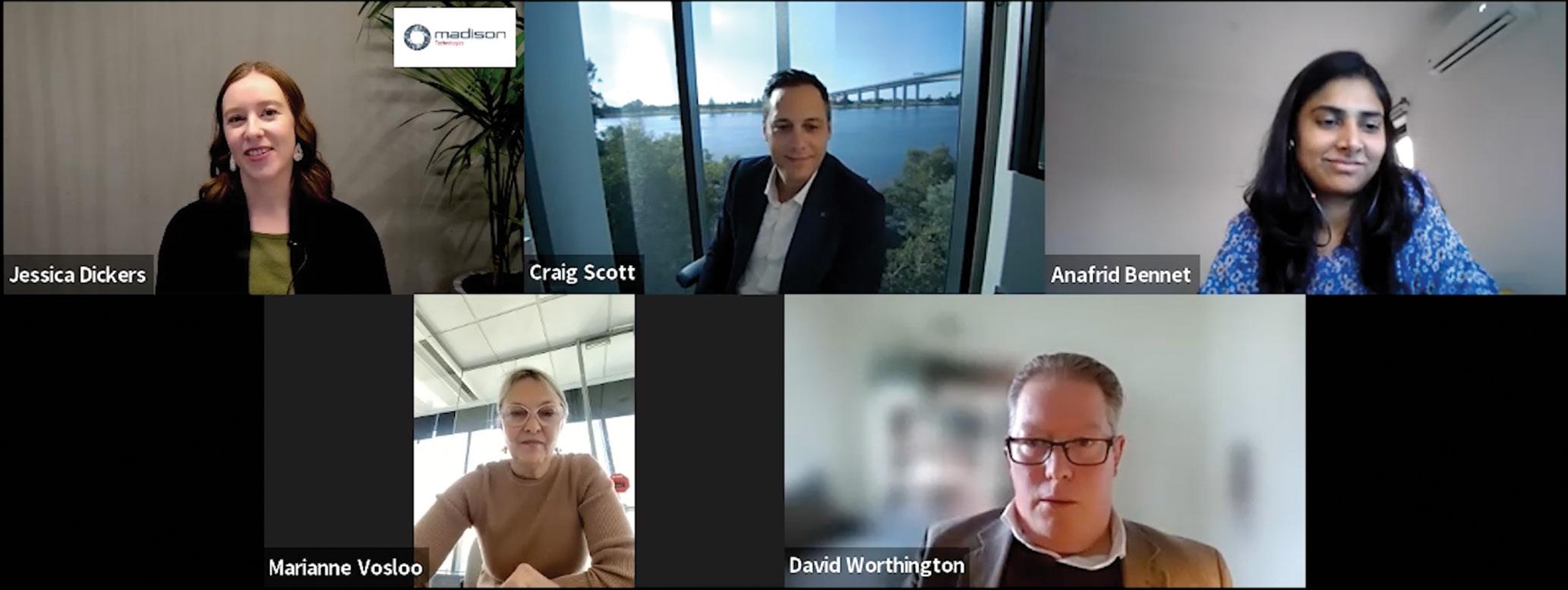
KEEPING DIGITAL NETWORKS SECURE
We couldn’t possibly talk about digitising Australia's utilities without taking a deep dive into the risks around cyber security, as it’s such a critical topic for the sector.
The third conference, Cyber Security, expanded on the discussions of Future Grids and Engaging Customers, while looking specifically at the issue of cyber security and exploring the challenges utilities face in keeping their digital networks secure.
In their keynote presentation, Richard Bergman, Partner, EY Oceania Cyber Security and Matt Jones, Director, EY Oceania Cyber Security co-presented on security of critical infrastructure legislation reforms. This was an informative presentation that contained key information that utilities around Australia need to be aware of to ensure they are meeting new requirements.
Their presentation spanned the key government drivers behind expanding the legislation, the scope of the amendments and the additional critical sectors identified, the obligations required to maintain compliance, and the lessons learned from other critical sector organisations who have already commenced the roadmap to compliance.
Elena Sitnikova, Associate Professor in Cyber Security and Networking at Flinders University also presented on critical infrastructure systems cyber security trends and challenges and provided in-depth information relating to IT and OT operations technologies and threats.
Some of key takeaways from Elena’s presentation were that it is actually more about cybersecurity strategy, tactics and risk management than technology, and that 75 per cent of OT security solutions will be delivered via multifunction platforms interoperable with IT security solutions by 2025. But if there was one thing to take away from her presentation, it was that if you don’t think your organisation is a target – it is!
The Cyber Security conference, and Digital Utilities as a whole, finished with a mega industry panel featuring four
industry experts discussing the topic Utility cyber security: your people are your first line of defence
The panel was a fantastic way to wrap up the event and featured Marianne Vosloo, Executive General Manager, Digital at Energy Queensland; Anafrid Bennet, Interim Water Chief Information Security Officer (CISO) and Head of IT and Security Operations, Greater Western Water; David Worthington, General Manager of Digital Security and Risk, Jemena; and Craig Scott, National Manager, Sales and Marketing, Madison Technologies.
These cyber experts were a wealth of knowledge and talked about everything from what their organisation’s cyber security teams look like, to utility cyber skills, specific technologies or digital processes helping protect assets, cyber awareness programs, what leadership should look like in this space, and the next generation of cyber security professionals.
The panel was sponsored by Madison Group, who has a 30-year legacy of digitally transforming critical operational environments and is familiar with many of the challenges and opportunities the utilities industry faces as it migrates towards a more efficient, reliable, and interconnected infrastructure.
Madison’s experience developing and delivering robust communications and networking technology solutions for the utilities sector, combined with partnerships with some of the world’s leading technology brands, means it can provide leading communications solutions, services and security customers can rely on.
If you have questions about your digitisation journey, a Solutions Workshop with Madison Technologies will allow you to explore technology options that enable data for informed business decisions, in order to protect people, assets and the environment whilst maintaining productivity. For more information on Madison Technologies, please visit madison.tech.
All of the presentations and panel sessions from Digital Utilities 2022 are available to watch on-demand for registered delegates. To register for free and gain access to the recordings, please visit www.digitalutilities.com.au.
UTILITY • AUGUST 2022 WWW.UTILITYMAGAZINE.COM.AU 19
NEWS
INDUSTRY PANEL – UTILITY CYBER SECURITY: YOUR PEOPLE ARE YOUR FIRST LINE OF DEFENCE. LEFT TO RIGHT: JESSICA DICKERS, CRAIG SCOTT, ANAFRID BENNET, MARIANNE VOSLOO AND DAVID WORTHINGTON
When selecting a generator for your project, it’s critical to consider the right unit for optimal performance, specific applications, final installations and genset configurations.
FG Wilson generators are designed to meet the unique demands of each project and every unit is built for optimal performance in harsh conditions. These robust units provide enough power to support any application, from national grids to domestic use. However, understanding the specifics of the project will make all the difference.
When selecting your generator, it’s important to make sure that it is built for the right application. Specific projects will require a specific build, so getting the upfront configuration of the genset correct to suit the final installation – whether that is in a Data Center power hall or in a canopy sitting in the Pilbara – is an important step in the design process.
By outlining specific performance requirements, including required load acceptance or load profile, ambient performance, control systems or alternator specifications, you can ensure that the genset selection is appropriate during the design phase.
This potentially limits any unnecessary costs for the final overall project and lowers total cost of ownership by optimising parts and service intervals, the costs of which can be calculated and considered during the design process.
DECREASING COSTS FOR THE LONG TERM
Generator fuel and servicing costs often make up the bulk of costs during a project lifecycle for a prime rated generator, so
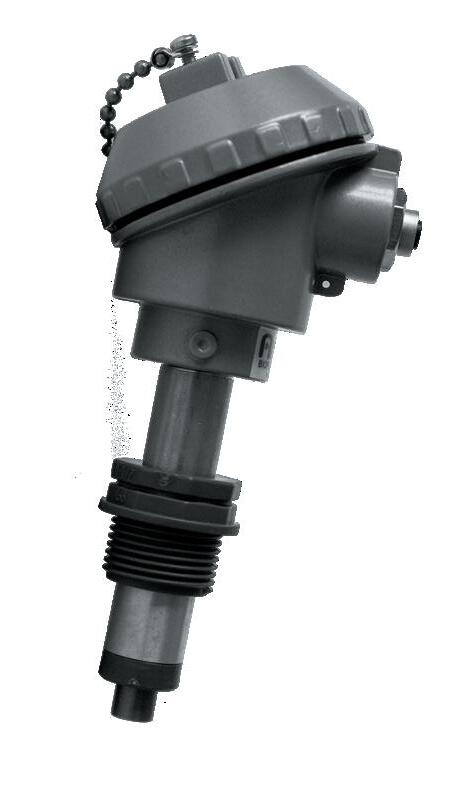

limiting unnecessary costs with the manufacturer during the design phase will ultimately mean savings for the end user.
Using standard or incorrect genset configurations can often lead to design or physical re-work, which can be a costly exercise, especially if major changes are needed to be made to accompany a generator on site. Being specific in these early stages will not only allow your generator to operate at maximum capacity, but will save long-term costs.
The Allight team offers a consultancy to size and build custom gensets to suit your needs and specifications. Its team can work with companies at the design stage of a project to ensure they have selected a product suitable for their application, from design, production, installation and through to aftersales.
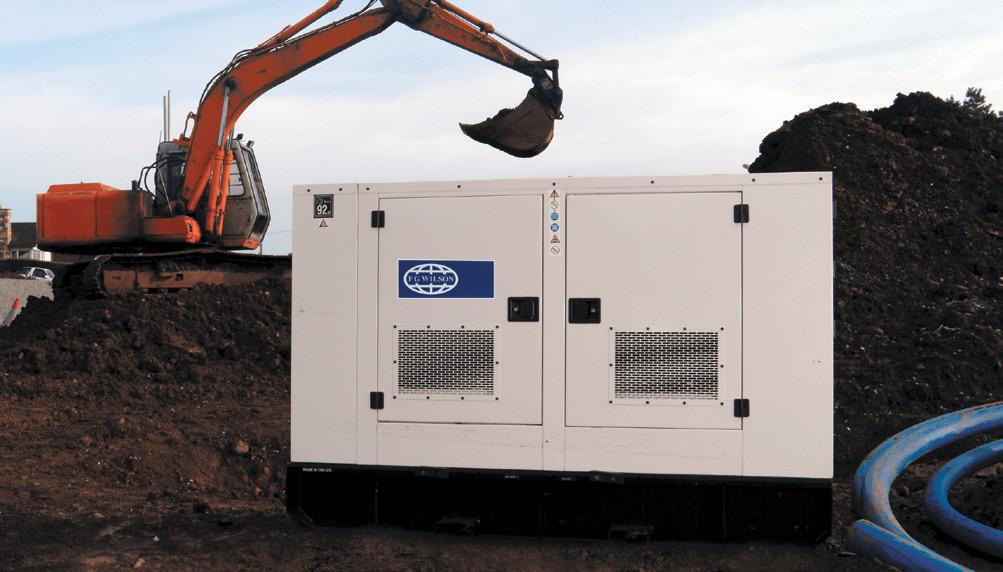


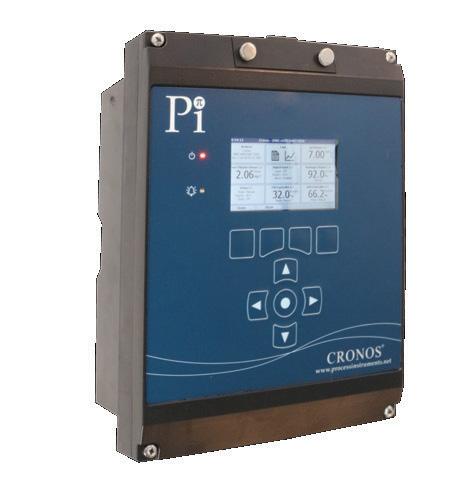
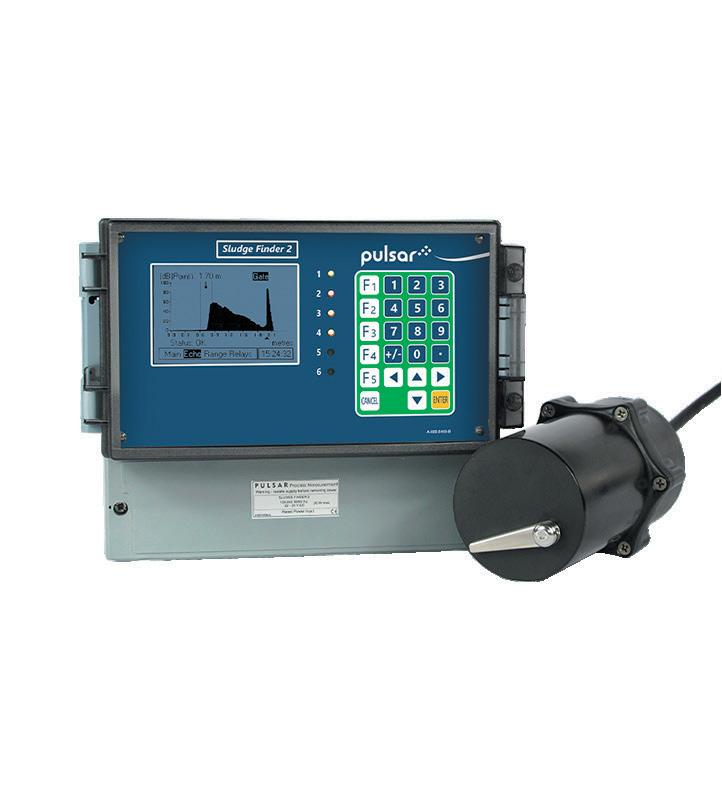
20 UTILITY • AUGUST 2022 WWW.UTILITYMAGAZINE.COM.AU
NEWS | Sponsored editorial
A GENERATOR & Velocity measurement Continuous Biofilm Monitoring Sample Biofilm growth signal over time LEVEL METERS BIOFILM ANALYSER ANALYTICAL CONTROLLERS PROCESS INSTRUMENTS PULSAR • Lightweight, compact design • No interruption to service • ATEX Ex mb Zones 1 & 2 approval • Minimal installation costs • Maintenance-free • RS485 Modbus • IP68 • Non-contacting • Cost-effective • Ultrasonic Transmitters and Controllers • Point Level Switches • Sludge Level Systems • Wireless Systems • Early detection of Bacterial Growth on surfaces • Monitoring & optimisation of sanitation requirements. NEW TURBIDITY MONITOR BINTECH SYSTEMS WATER SOLUTIONS 1300 363 163 sales@bintech.com.au www.bintech.com.au For more information, please visit allight.com
CONSIDERATIONS WHEN SELECTING

4000 SERIES

FG Wilson generators are designed to meet the demands of your project. Every unit is built for optimal performance, even in the harshest conditions.
The robust 4000 series can provide power for modules supplying electricity to national grids. If your business can’t afford to stop, choose stand-by power you can trust.
Contact our team for more information on our extensive range of bespoke Generators, Mobile Lighting Towers and Perkins Engines.
P E W
allight.com
1300 255 444 sales@allight.com

IT’S TIME TO BUILD REAL CONNECTIONS AT AUSJET22
After two years of cancelled events due to COVID-19, in-person events are back, including a new dedicated biennial water jet, hydro excavation, drain cleaning and vacuum loading technology exhibition and conference being held this October.
The new AUSJET22 conference is presented by the industry’s peak body, the Australasian High Pressure Water Jetting Association (AUSJET), as well as the Australasian Drain Cleaning and Vacuum Association (ADCVA).
The inaugural AUSJET22 is taking place on October 12-13 at the Melbourne Showgrounds.
AUSJET22 is set to be the most significant in-person event of 2022, and will be a single source of knowledge, innovation and solutions for the industry – with all key suppliers set to attend.
Come and build real connections at an indoor and outdoor event, where dedicated water jet, drain cleaning, hydro excavation and vacuum loading industry leaders will be gathered together to showcase new products, technologies and state-of-the-art supplies.
The program will cover specific new technologies and industry relevant topics, with presentations to be incorporated to give further insights to products and industry topics. There will be dedicated conference streams and a keynote address from Australia’s first ever Gold winter Olympian, Steven Bradbury.
Throughout the event, see live demonstrations in the AUSJET connect demo arena, network with industry experts, and experience the newest advancements in these industries.
It’s time to catch-up with old friends, make new ones, and have some fun! Sip + Connect, a cocktail networking-style function, will take place on the show floor and be held on 12 October from 5–6pm.
For more information, visit www.ausjetconnect.com.au
INSTRUMENTATION & CALIBRATION PTY LTD SPECIALISTS
AMS have been suppliers of instrumentation and calibration equipment to all industries since 1973 representing some of the world’s leading manufacturers of the equipment in their field.

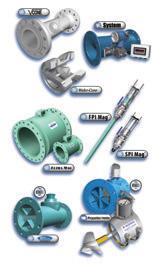
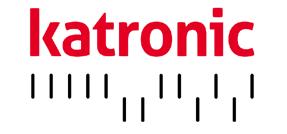
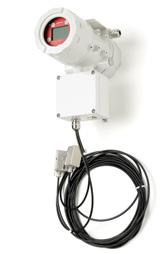
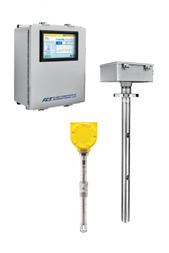
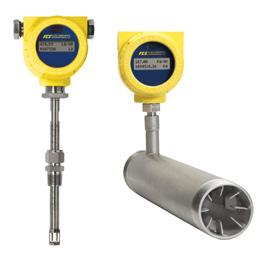







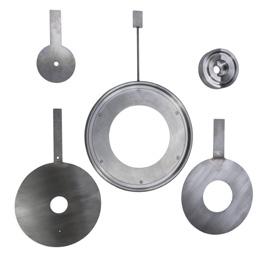


UTILITY • AUGUST 2022 WWW.UTILITYMAGAZINE.COM.AU 22
Measurement Specialists
www.ams-ic.com.au Flow
www.ams-ic.com.au sales@ams-ic.com.au
NEWS | Sponsored editorial
Real Connections Building
The wait is over! Australia’s first dedicated water jet, drain cleaning, hydro excavation and vacuum loading technology industries event is ramping up for October 12 – 13, 2022 at the Melbourne Showgrounds. Presented by the industry’s peak body, AUSJET & ADCVA.
Build real connections with key suppliers and experts, attend dedicated conference sessions, network and discover.
Register by scanning the QR code and for more details log on today at www.ausjetconnect.com.au




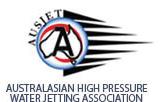





Organised by Est 1990 Official Media Partner Conference Sponsor Water Bottle Sponsor Coffee Cart Sponsor Lanyard Sponsor Proud Platinum Partner Proud Gold Partner
A NEW LEVEL ERA OF RADAR SENSOR
How do you optimise a level sensor that already has everything: the best focusing, highest accuracy, simple operation and universal communication? What sounds like an obvious question has led VEGA to create much more than just an even better sensor.
When using the new VEGAPULS 6X, it’s not just the sensor that counts, but what can be achieved with its application: simply better processes.
Traditionally, the search for a suitable radar sensor begins with the question, which frequency would work best for this particular application? Is it 26 GHz, 80 GHz, or perhaps 6GHz? This is followed by considerations about the properties of the media and how it could influence the measurement, as well as the specific installation environment.
Furthermore, the temperature range or the presence of aggressive chemicals may give cause for concern. Will a standard process fitting be sufficient, or would special materials that meet the highest requirements be the right choice, if only because the user is not completely sure and wants to be on the safe side? What else should be considered if the sensor is to measure great distances or be exposed to wind and weather all year round?
These and countless other questions make one thing clear, customers have a large variety of radar sensors to choose from, and they need to make the right choice.
Because the areas of application are becoming more multi-faceted and processes more complex, the buyer needs a good understanding and overview of what’s on offer on the market. It takes the right know-how, experience and time to avoid making costly bad investments and get a reliable measuring system.
A NEW CERTAINTY: ONE FOR EVERYTHING
Until now, choosing an instrument was a laborious process and often involved a lot of questions and product research. VEGA is now turning this process inside out with its new VEGAPULS 6X.
“Ultimately, it’s not the sensor that counts, but what the users can achieve with it in their individual applications,” Florian Burgert, one of the product managers who has been closely involved in the development from the very beginning, said.

WITH VEGAPULS 6X, VEGA HAS TURNED THE TRADITIONAL WAY OF CHOOSING AN INSTRUMENT INSIDE OUT. THERE IS NOW ONLY ONE RADAR SENSOR – BUT IT IS SUITABLE FOR ALL APPLICATIONS.
“Just knowing that they’ve chosen the best possible instrument solution, and that they’ll reach their goal faster with it, makes a big difference in their everyday operations.”
VEGA now offers one sensor for all applications: VEGAPULS 6X. Selecting the right frequency or determining the DK value of the medium are no longer obstacles, because choosing the right sensor specifications has become much easier. The new configurator asks for the type of application and then quickly determines which sensor version is required. The entire procedure now consists of just a few mouse clicks.
Of course, an advisory discussion with a VEGA radar specialist is still a good alternative to the configurator. In any case, the result is unprecedented simplicity for users and a measurement solution that delivers perfect results independently of the media properties, process conditions, vessel shapes and internal installations.
For more information, please visit www.vega.com/radar.
UTILITY • AUGUST 2022 WWW.UTILITYMAGAZINE.COM.AU 24
NEWS | Sponsored editorial
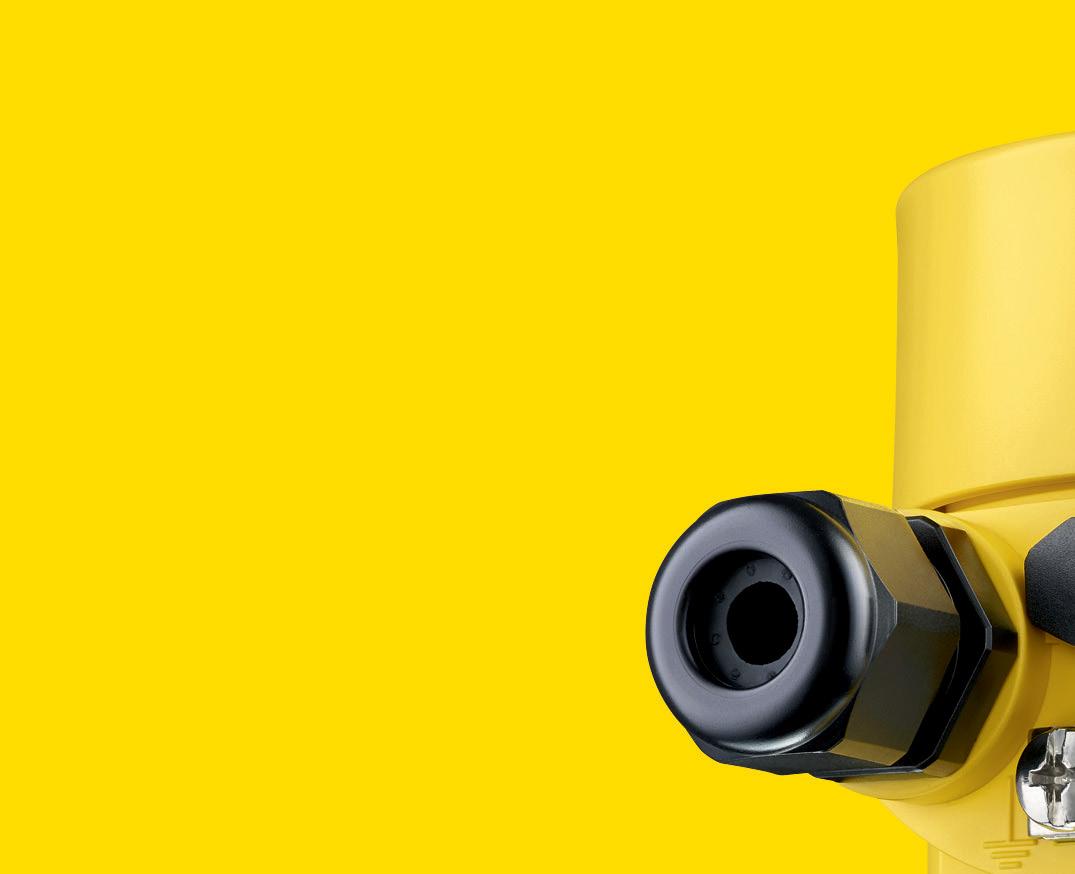

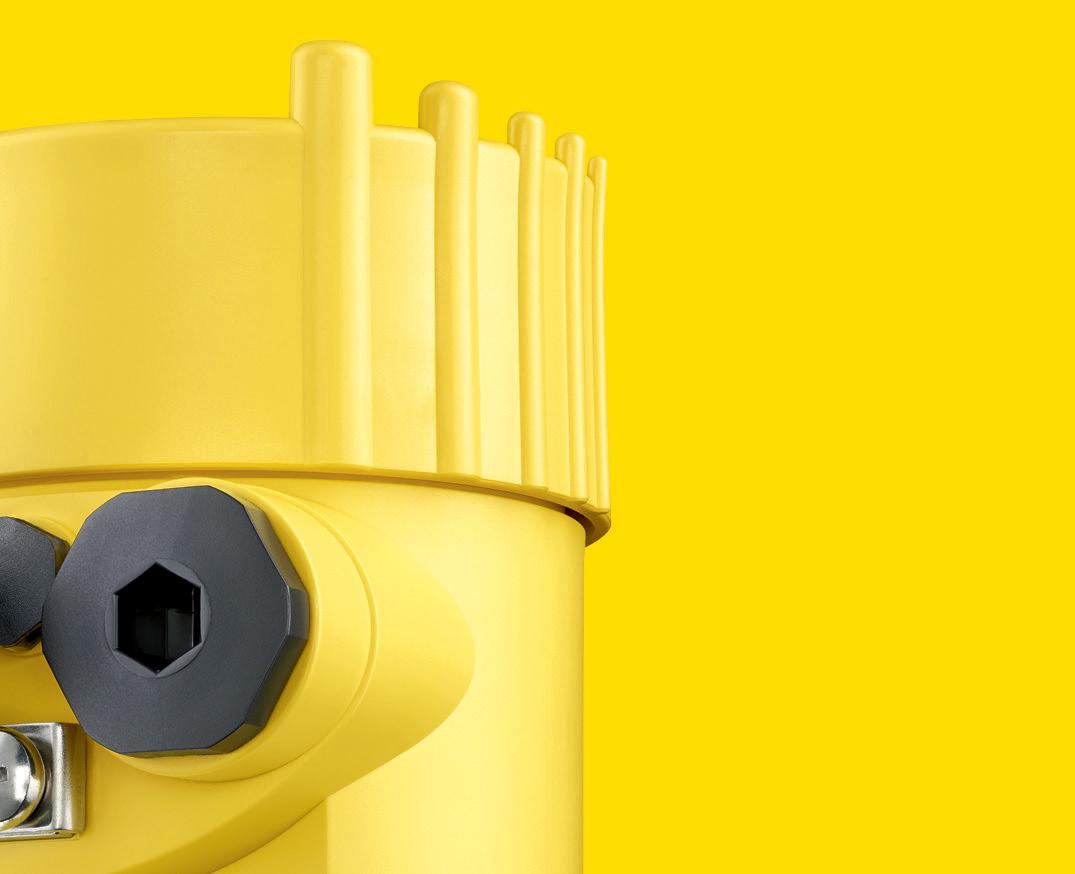
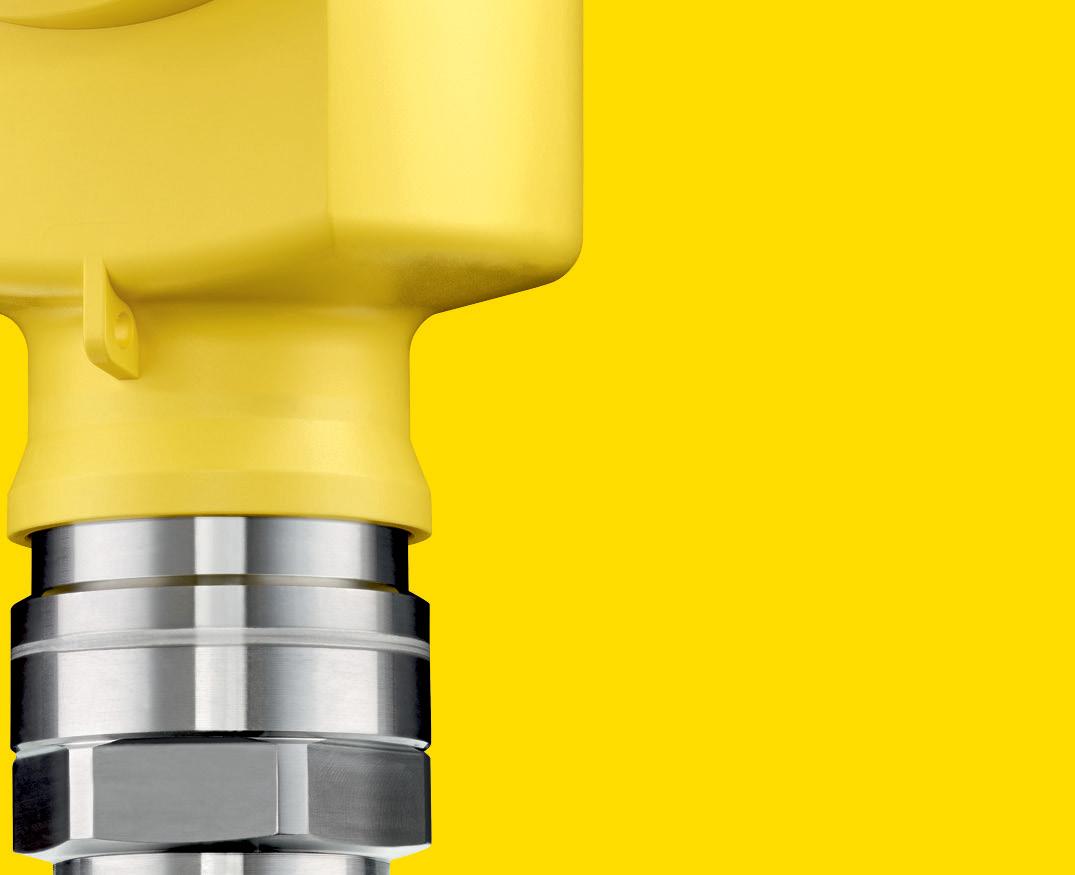


IT DOESN’T JUST MEASURE VALUES. IT HAS VALUES. THE 6X ®. AVAILABLE NOW!
The VEGAPULS 6X: A radar level sensor that is not only technically perfect, it also takes the user into account. It’s easy to set up and at home in virtually any process or industrial environment. Made by a company that bases its decisions on values that are good for everybody.
VEGA. HOME OF VALUES.
www.vega.com/radar
ELEVATING CUSTOMER SERVICE WITH NEW TECHNOLOGY
 By Christopher Allan, Journalist, Utility magazine
By Christopher Allan, Journalist, Utility magazine
A recent industry panel session at the 2022 Digital Utilities conference in June brought together utility sector leaders to discuss the role of digital technologies in elevating customer service. Here, we revisit some of the critical debates that emerged from the panel, including topics like what customers are looking for when engaging with utilities, and emerging opportunities for collaboration.
UTILITY • AUGUST 2022 WWW.UTILITYMAGAZINE.COM.AU 26
INDUSTRY INSIGHTS
The panel was held during the second day of Digital Utilities 2022, in a conference dedicated to Engaging Customers, and the panellists included Mikala Hehir, General Manager Customer and Community, South East Water; Rebecca Kardos, CEO Council Chair, The Energy Charter and CEO, Aurora Energy; and Josh Pell, Program Manager Customer and Digital Systems, Coliban Water.
The breadth of panellist experience in roles across the utility sector ensured an insightful discussion on the commonalities and divergences of customer engagement experiences, as well as emerging opportunities for engagement.
Rebecca Kardos delivered her insights from her roles as both CEO Council Chair at the Energy Charter and CEO of a founding signatory of the Energy Charter, Aurora Energy. The Energy Charter is a CEO-led national collaboration that supports the energy sector towards a customer-centric future.
As General Manager Customer and Community at South East Water, Mikala Hehir offered insights into the engagement needs and values important to customers in Melbourne’s south-east.
Josh Pell, Program Manager Customer and Digital Systems at Coliban Water, explained how his role spans customer and employee experiences, including how technology can bring those parties together for an optimal experience.
THE EVOLUTION OF CUSTOMER NEEDS
When it comes to customer needs and how the utility – customer relationship has evolved in recent years, Ms Kardos emphasised a fundamental shift towards greater involvement from customers managing their energy over the last two decades.
“When I first started in this sector … it was a really low involvement category with very limited engagement,” Ms Kardos said.
“If all things went well, we wouldn’t have any interaction [with customers] – but if things didn’t go well, that’s when we tended to have a lot of the interaction.
“Now it’s fundamentally changed, and we’re seeing our customers wanting to be far more involved.
“I think that’s best typified in the electricity sector by the amount of Australians who’ve chosen to generate their own electricity and put solar panels and batteries into their homes.”
For Mr Pell, the key to understanding evolved customer needs is the idea that customers want transactions that might be complex back of house to be fast and effective front of house.
“Customers don’t want to be going through multiple areas of our business to move into a property or get an information statement, or these sorts of everyday transactions,” Mr Pell said.
“They actually want to get this information themselves – or they want it to be delivered, if they are calling in, at the first call.
“The customer hasn’t got time for us to go about our business, so we actually need to match our time to the customer’s time.”
Ms Hehir agreed before emphasising the two-way nature of customer engagement and a trend towards online interaction.
“Historically, I think most of our customers would engage us when something went wrong – there’s a burst outside on the street, or the bill was higher than they expected,” Ms Hehir said.
“Now, they’re busy – so we need to be engaging with them when it’s relevant and timely.
“We’re already seeing call volumes here decline year on year, but online interactions are increasing substantially.”
A NEW PLAYING FIELD FOR SERVICE DELIVERY
Ms Hehir also sparked an engaging discussion regarding how the customer service delivery of utilities is now measured up against other services provided to customers.
“Some people say to me, ‘Why do we even need to engage customers? It’s not like they have a choice of water service,’” Ms Hehir said.
“My customers aren’t comparing us to Coliban, but they are comparing us to AGL, or Netflix, or Telstra, and how easy it is to do various things versus those companies that bill me and provide services to me.”
Indeed, the ease of delivering a digital service to a water utility customer must now measure up against the digital experience on offer from all other utilities, not to mention external service providers.
WHAT DOES SUCCESSFUL ENGAGEMENT LOOK LIKE?
When it comes to successful engagement, Mr Pell emphasised a shift away from the idea that utilities are simply incident response centres, and explored the power of proactive communication.
“From our standpoint, successful engagement is that the ease of doing business with us continues to get easier, and that our customers want to contact us,” Mr Pell said.
“To Ms Hehir's point – customers usually only call when something’s gone awry. We actually want to get that relationship to be a more proactive one.
“Proactive communication could be something like us communicating a potential leak – which we’re trialling at the moment.”
Ms Hehir echoed Mr Pell’s statements before emphasising that engagement needs to be personalised and a two-way exchange.
“Communication has to be relevant and timely to the person and not just this mass broadcasting,” Ms Hehir said.
“And I think ideally, engagement needs to have some kind of two-way exchange so that you know that the interaction is working – that it’s resonated, it’s resulted in some kind of behaviour change or awareness.”
Ms Hehir emphasised how successful engagement balances smooth and invisible service delivery with always ensuring customers are aware of the value of their services.
For Ms Kardos, successful engagement doesn’t necessarily equal regular engagement.
“I think we’re all customers of the products we sell, and that’s a really fortunate place to be,” Ms Kardos said.
UTILITY • AUGUST 2022 WWW.UTILITYMAGAZINE.COM.AU 27
INSIGHTS
INDUSTRY
INDUSTRY INSIGHTS
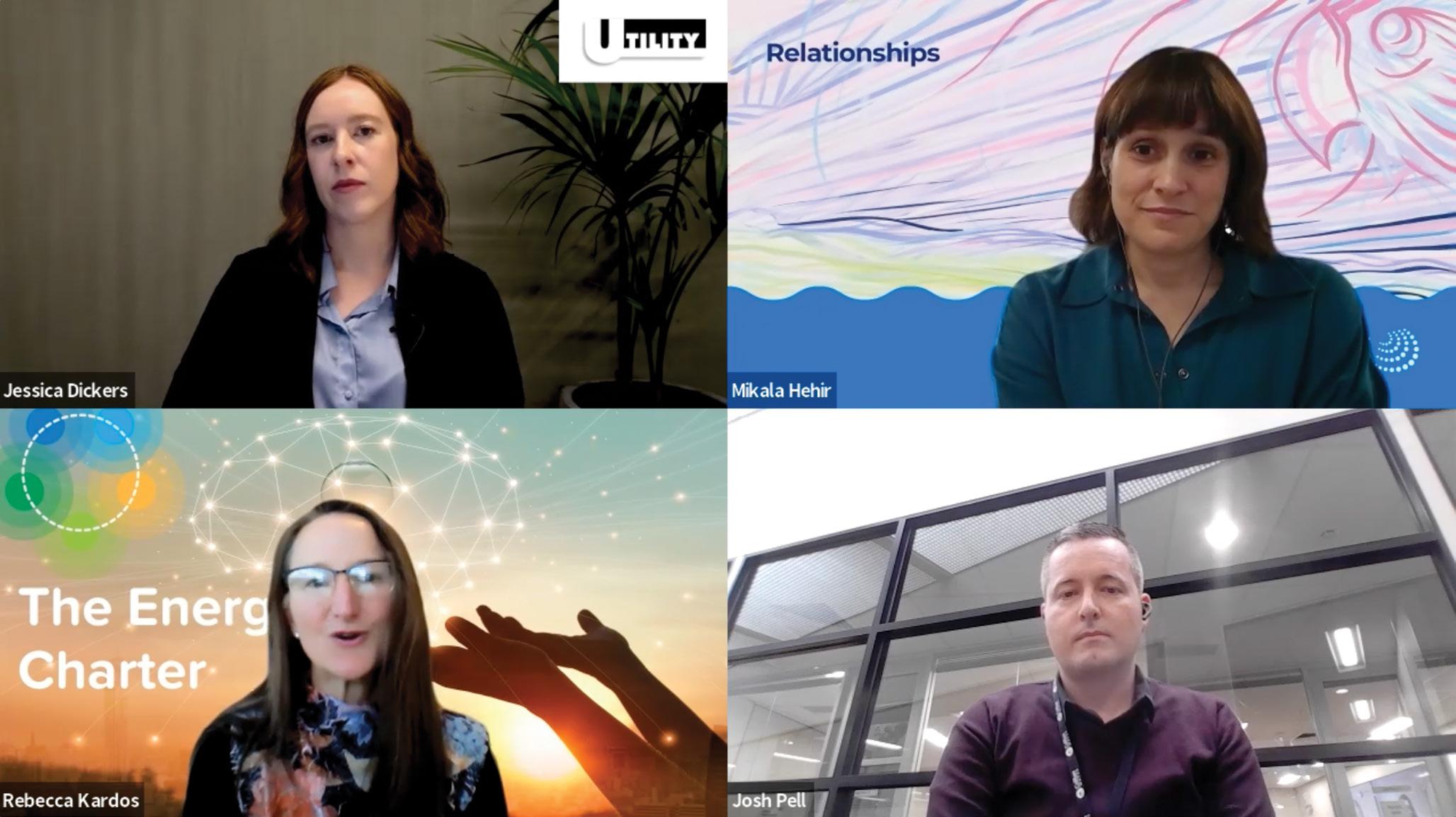
INDUSTRY
“All our research and my own experience shows that on the whole, you really don’t want to be talking to your energy or your gas, or water utility.
“You just want to flick a switch but have it be affordable, know that it’s been responsibly and effectively and efficiently and sustainably looked after.”
Ms Kardos emphasised how a deep respect for customers means recognising the customer’s right to “take control for themselves” in decision-making.
Utilities sit on a mine of data and information so there is an opportunity to empower the customer to make their own informed choices within their home and business when they need to.
DIGITAL PROGRAMS AT COLIBAN WATER
Speaking on the opportunities for digital at Coliban Water, Mr Pell highlighted both the customer-facing and internal digital opportunities that are transforming customer interaction.
“We actually changed our CRM and billing systems a couple of years ago now, and we’re in the process of going from a system change to now focusing on how we can actually bolt in improved customer experience and connectivity into those platforms,” Mr Pell said.
“In the front of house, we are implementing a new contact centre platform that can go into our CRM, so that our contact centre staff and customers, regardless of channel, can get access to a customer contact staff member in whatever channel they choose.
“At the same time, our team can get that intel and that visibility of the customer – their previous histories, and what they might be calling about.
“The other part of connectivity is us – and I’m sure every utility is very similar. We’ve got a lot of platforms and systems throughout the business … and we need to connect those together to make a more meaningful customer journey.”
Mr Pell emphasised how connecting asset systems with customer and performance systems could particularly improve proactive communication from the utility side –offering potential for notifications of outages or changes in service performance.
He also spoke insightfully about the need to build customers into plans when devising new digital solutions.
“The biggest mistake utilities can make – and have made before – is that we engineer a solution before we’ve gone and understood how big a problem is to the community that we’re serving,” Mr Pell said.
By internally engineering problems and defining strategies, augmentations, and master plans in a closed manner, Mr Pell warns that utilities might miss an important perspective or priority held dear to the customer.
#BETTERTOGETHER AND THE POWER OF COLLABORATION
Ms Kardos discussed how the Energy Charter’s #BetterTogether initiatives, which call for stakeholders to co-design and work together towards better outcomes for customers, is putting forth the case for future collaboration across utilities.
“The whole Energy Charter, its underpinning fabric, is all around collaboration – not just within the electricity and gas sectors themselves, but even more broadly,” Ms Kardos said.
“Collaboration is one of those things that I think is the essence of The Energy Charter – its recognising that we’re
UTILITY • AUGUST 2022 WWW.UTILITYMAGAZINE.COM.AU 28
PANEL – ELEVATING CUSTOMER SERVICE WITH NEW TECHNOLOGY.
LEFT TO RIGHT: UTILITY EDITOR JESSICA DICKERS, MIKALA HEHIR, REBECCA KARDOS AND JOSH PELL
responsible for providing a service that underpins every business and home within our communities.
“At Aurora Energy in Tasmania, we have just started a trial with TasWater, the local water utility, where when we identify a customer in hardship, we could refer them to TasWater as well.
“At the Energy Charter, we’re collaborating with the medical sector on how we can better manage life support.
“We’re also collaborating with landholders as we look at how we make the transition to renewables.
“I think it is kind of a no-brainer. Listening is the most important thing we can do to better improve customer engagement – but you can’t listen if you’re not collaborating.”
DIGITAL SOLUTIONS EMPOWERING CUSTOMERS IN LEAK MANAGEMENT
Ms Hehir spoke passionately about the tangible impact of digital meters and IoT platforms in both saving customers money and saving water for the community.
“We have about 38,000 digital meters in our network at the moment, and we’ve been actively using them to
communicate with the customer when we think they might have a leak,” Ms Hehir said.
“About ten per cent of customers with a digital meter have had a leak, and because of the way we've been able to notify them and resolve that, they've saved between $59 or $350, depending on the size of the leak, before that next quarterly bill would come.
“That’s saved over 200 million litres of water too, so when we talk about needing to invest in the future and augment supplies, actually we’re saving customers money from their bills, but also saving that precious drinking water.
“A lot of those meters have listening devices and sensors that play back out into our network as well. We’re now identifying some of those really small leaks that we wouldn't have identified before.”
Ms Hehir said this means the utility can make more planned repairs, rather than waiting for emergency bursts.
“We're really hoping that we'll save customers both in terms of disruption to them and money spent as well.
“This work really started with customers – by knowing what some of their pain points were, and then recognising that digital can really help solve that,” Ms Hehir said.


UTILITY • AUGUST 2022 WWW.UTILITYMAGAZINE.COM.AU 29
INDUSTRY INSIGHTS Register for free to watch the Elevating customer service with new technology panel at Digital Utilities 2022 on demand by visiting www.digitalutilities.com.au. URD ELECTRICAL PILLARS +61 8 9378 1077 sales@rimco.net.au www.rimco.net.au ● Manufacturing Pillars in Australia for over 40 years ● Quality Assured to ISO 9001:2015 ● Pillars comply with AS/NZS 61439 ● Manufactured from proven, durable materials for Australian conditions ● Residential and Commercial applications. ● Minimal installation area required for Pillars ● Supplied Australia Wide
TDEALING WITH SUPPLY CHAIN ISSUES IN 2022

It’s hard to accurately predict trends and global events – as witnessed with COVID-19 – but one thing that the rest of 2022 is guaranteed to bring is less certainty when it comes to supply chains.
he past two years have shone a light on the fragility of the supply chain, demonstrating that even Australia’s largest construction firms are at risk, with many of the ‘too big to fail’ companies showing us that in today’s climate, no one is too big to fail.
At the centre of this issue is the fact that there is no immunity from the pressures caused by supply chain shock and broader fast inflation.
Supply chain shock is no longer a one-trick pony. It is appearing in nearly every segment of the construction industry, and is particularly affecting copper, aluminium, timber and steel – the very fabric of projects within the industry.
The return of inflation makes price control even more demanding – and strategically necessary. However, simple price aggression often doesn’t provide the right outcomes when the entirety of the supply chain is experiencing inflation.
STRONG RELATIONSHIPS AND COLLABORATION: THE ONLY WAY FORWARD
Genuine partnership is what enables the economics of the supply chain to be leveraged to its highest degree, allowing partners to add value through their skills, or to reduce total cost.
Typically, transparency is not central to procurement policy and can, at times, go completely against the philosophies of the purchaser/organisation. Previously, mystery could enable

leverage between two tendering vendors or shift the balance of power from a licensed channel.
In today’s market, strong personal relationships need to be leveraged to provide genuine transparency in total costs throughout the chain. This can then enable the link in the chain to mitigate risk and reduce each tier of exposure.
If this isn’t achieved, the end of the chain will still end up wearing these costs. Today’s market requires collaboration, honesty and the same principles of a joint venture – everyone in your supply chain needs to be successful together.
REMOVING RISK
GPS Trade Australia is a dedicated sourcing and expediting house that uses the best procurement methodology coupled with long-standing executive level relationships to create the best sourcing and lowest total cost for projects. It is an expert in commodity-centred procurement, hedging risk and providing vetted fall-back vendors in each segment.
GPS Trade Australia’s sourcing and expediting team creates deep value and transparency in a constantly changing, risk-filled procurement space. By offering a complete transparency product, tracking tools, and access to a global preferred supplier network, GPS takes price, transit and regulatory risk out of the hands of its clients.
With contracted ocean shipping slots and tier one air freight routes, along with hybrid models, its clients can access authorised global sourcing channels and years of experience in contract management.
GPS Trade Australia can assist with all procurement needs. To find out more and get in touch, please visit gpstrade.com.au.
UTILITY • AUGUST 2022 WWW.UTILITYMAGAZINE.COM.AU 30
INDUSTRY INSIGHTS | Sponsored editorial
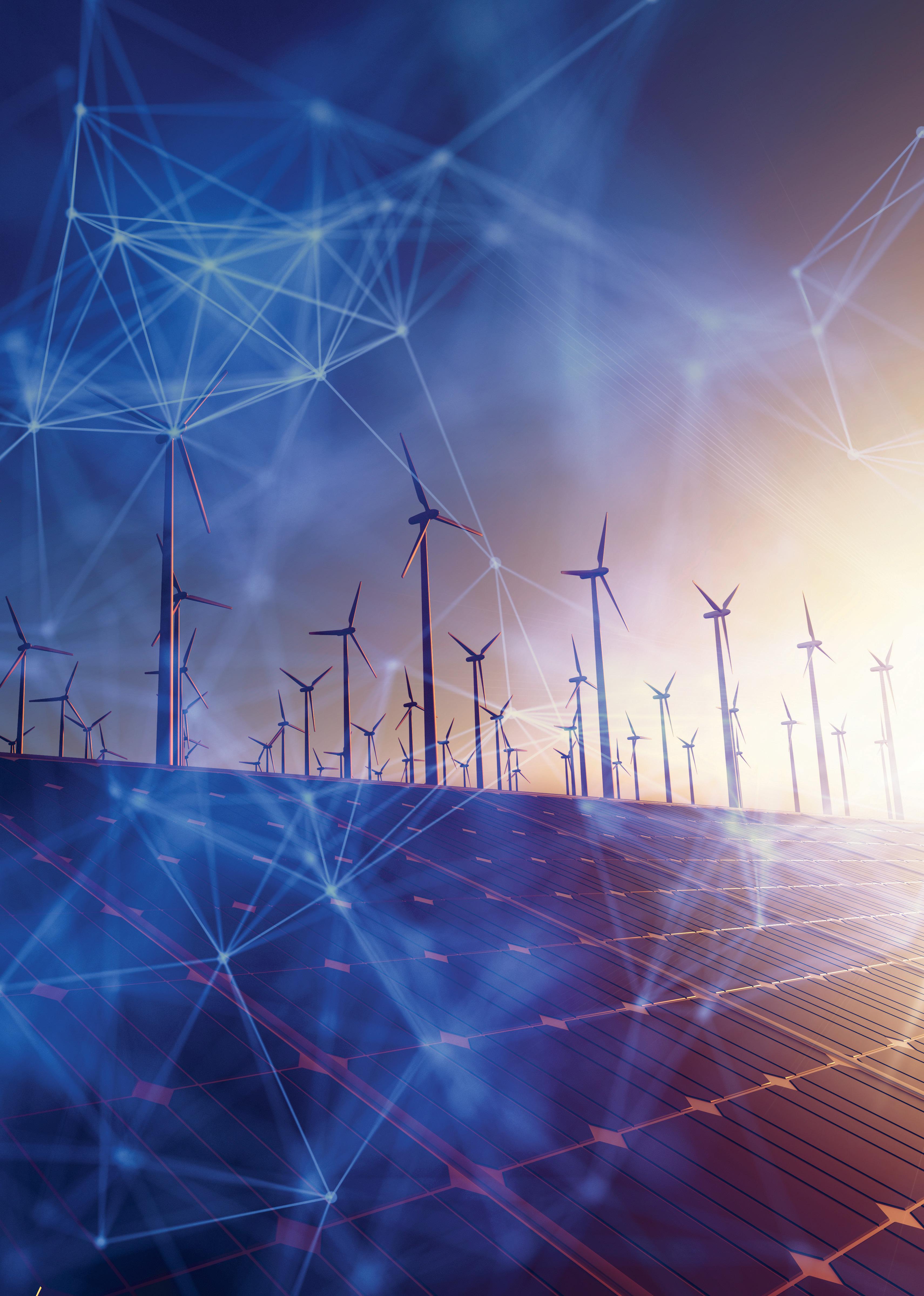

DELIVERING NEW CAPITAL PROJECTS IS ONLY GETTING RISKIER — MAKE IT PREDICTABLE
Power and energy projects are often large, complex and multi-discipline, and can take years to plan and complete. Making the case for additional capital investment can also take years to go through funding approval, so it’s imperative that your construction projects are delivered with certainty.
Your customers count on you to deliver new plants and infrastructure, and maintain or upgrade existing facilities, all while optimising scope, cost, schedule and safety. InEight supports this by providing field-tested project management platform to help:
• Create accurate, early-stage estimates and schedules to facilitate the capital planning process, account for cost and schedule risks in real-time, and analyse the impact
• Execute your projects through streamlined construction planning, resulting in greater predictability
• Gain unprecedented visibility into the planning and progress of your work
The bottom line? Over $400 billion worth of construction projects around the world have relied on InEight field-tested project management software, experiencing up to a 25 per cent reduction in planning time, a five to ten per cent reduction in project costs, and a ten per cent reduction in costly rework.
Ready to take a deeper dive? InEight can help get your power and energy projects where they need to go by helping you create solutions that match your needs.

For
please visit InEight.com

The Evolution of SOLVING PROBLEMS
TRANSFORMING THE WAY THE WORLD BUILDS Capital Projects Management Software
UTILITY • AUGUST 2022 WWW.UTILITYMAGAZINE.COM.AU 32 INDUSTRY INSIGHTS | Sponsored editorial
Learn more at InEight.com/Solving-Problems
more information,

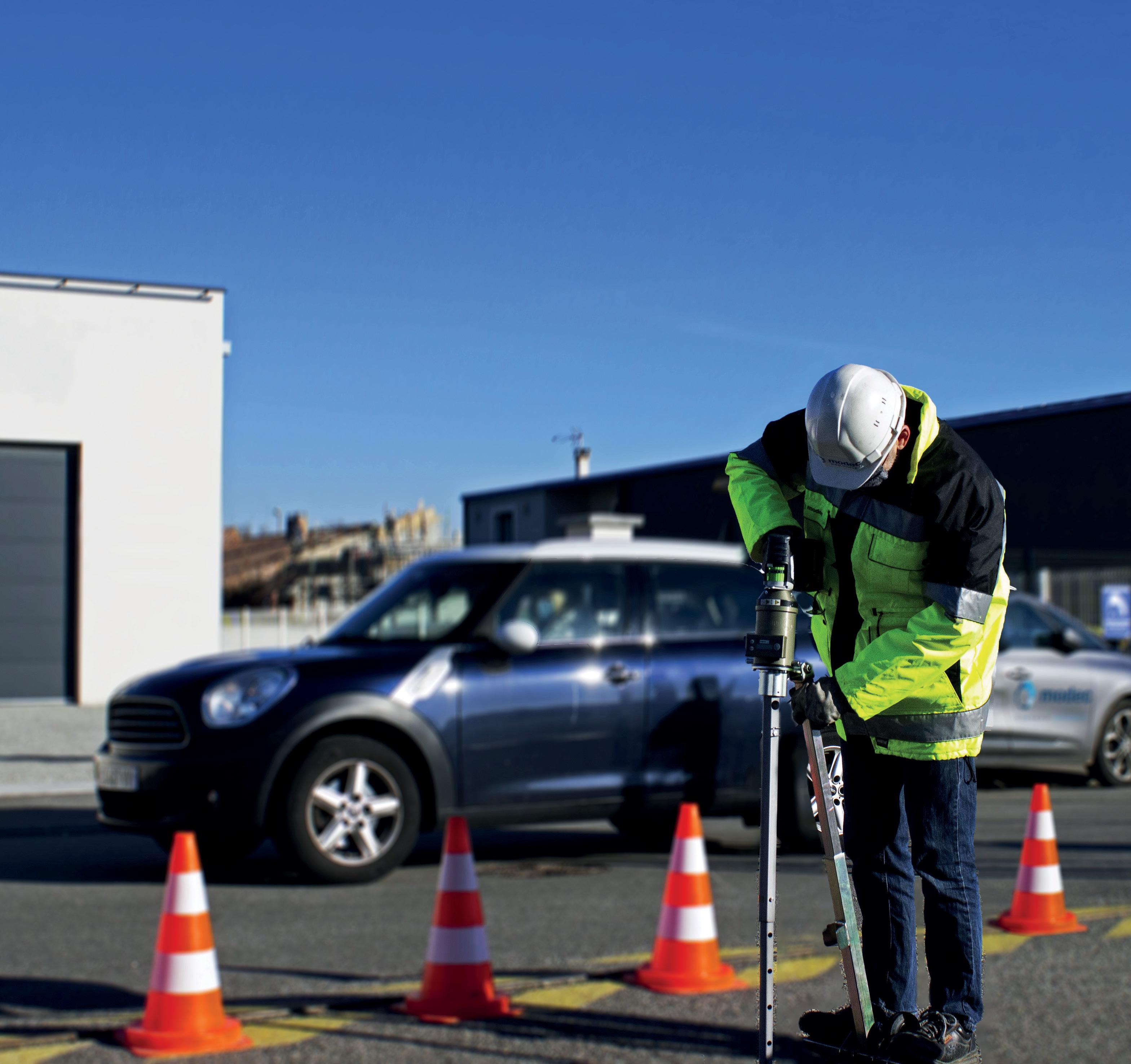
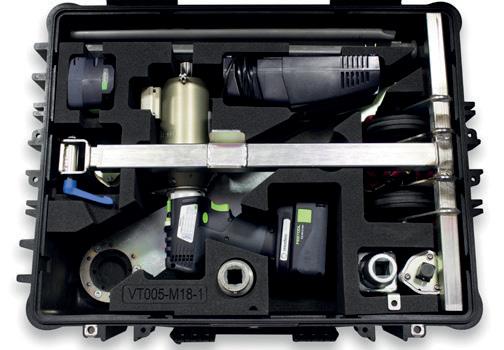

Easy transportation Simple implementation Operator and equipment safety 1300 FMT FMT (368 368) Melbourne 1/53-57 Rimfire Drive Hallam VIC 3803 Brisbane 2/5 Percy Drive Brendale QLD 4500 Perth 3/48 Hardey Road Belmont WA 6104 The water supply operator’s kit H2O WATER KIT

FOUR PRACTICAL WAYS TO IMPLEMENT EFFECTIVE COMPLIANCE PROGRAMS
The utility sector is one of the most regulated in the country, if not the world. The quantity and complexity of regulation applying to the industry is increasing daily, as are the penalties for non-compliance. Compliance is moving from an abstract concern to an area requiring direct and focused attention. This article explores four practical ways that leaders in utility businesses can implement effective compliance programs.
INCREASING REGULATION
Most utility businesses operate under licence conditions, codes, and State and Commonwealth legislation. Those who draft and enforce such regulatory obligations have little understanding of how challenging it is for businesses seeking to do the right thing and comply.
When looking at compliance, one of the first (and most difficult) steps to take is to understand all the applicable obligations and their applications in different business models and at different points in operation. That is a step that continually needs to be taken as a business expands and regulation changes.
Regulation is largely reactive rather than proactive as it seeks to prevent the re-occurrence of conduct or outcomes that are deemed to be negative, whether to consumers, the environment, employees, or society at large. Therefore, most regulation is prescriptive following a set formula which is: c (Compliance) = x (Action) in y (Circumstances).
The challenge then becomes understanding what x requires and when y is present. A comprehensive and current obligations register is critical for complex businesses, such as utilities. Separately, there are various principles that underpin regulatory obligations i.e. the rationale behind regulation. Those principles need to be understood and an effective compliance program addresses not only prescriptive regulation but the principles behind that regulation.
PRACTICAL SOLUTION 1: PRIORITISE COMPLIANCE
The single factor that is most important in determining the success or otherwise of a compliance program is the attitude of upper management and the leadership team.
Boards set priorities by their words and actions. Compliance needs to be one of those priorities in the same way that revenue generation usually is. In larger businesses, there are typically many layers between the board and employees who carry out the day-to-day functions that are critical in determining compliance or otherwise.
Setting compliance as a priority allows a culture of compliance to develop. That means that all employees understand the importance of compliance, the need to act in a compliant manner, and to call out potential and actual non-compliance.
PRACTICAL SOLUTION 2: EMBED COMPLIANCE IN DECISION MAKING
Compliance is a critical component of decision-making. There is no point in having a compliance program that is well-staffed but where compliance staff have no say in the decisions a business makes.
To embed compliance in decision making, those with expertise should be involved in all critical decisions, including price changes and entry and exit from markets. That means involving your compliance team in operational and financial meetings and ensuring that they understand changes that are occurring in your business and your industry.
PRACTICAL SOLUTION 3: RESOURCE COMPLIANCE
The resources that a compliance function requires include internal and external expertise, access to databases and registers and other compliance tools.
Understandably, it can be difficult to justify spending more on what is seen by some as a cost centre. Compliance should be resourced if a business wants to operate in a compliant manner, to avoid penalties, and to have a good reputation with regulators and other stakeholders.
The financial justification for spending more on compliance is the reduction in the likelihood of a penalty or other enforcement outcome and the cost of that penalty or other enforcement outcome.
For example, for energy retailers, a civil penalty breach may result in a penalty that is the greater of: i) $10 million, ii) ten per cent of global turnover, or iii) three times the benefit received by the business from the breach. Would it be justified to spend $300,000 on a compliance system if it is going to reduce the likelihood of a $10 million breach by ten per cent?
PRACTICAL SOLUTION 4: CHECKLISTS
The simple checklist is a powerful tool that can be employed in compliance. Your compliance staff should be asked to develop checklists for all areas of operation and for key changes in the business. Checklists should be kept up to date and reviewed on a consistent basis. The simple checklist allows a business to review and confirm compliance quickly.
Compliance is a tricky and complex process, but it’s possible to navigate with the right approach. The quantity and complexity of regulation is only set to increase, and there is never a better time to examine your compliance program than right now.
UTILITY • AUGUST 2022 WWW.UTILITYMAGAZINE.COM.AU 34 INDUSTRY INSIGHTS | Sponsored editorial

CRITICAL SUCCESS FACTORS FOR COMMUNITY ENGAGEMENT CAMPAIGNS
By Mikayla Bridge, Journalist, Utility magazine
Community engagement is an essential tool that allows water utilities to improve customer-utility relationships and communicate vital information such as the importance of water savings. Utility spoke with Urban Utilities, Yarra Valley Water and Melbourne Water about how they ensure success in their community engagement campaigns.
Community engagement is a strategic process employed by utilities to create meaningful, inclusive dialogue with communities, so that both the utility and community members can make well-informed decisions from which they benefit socially and financially.
Yarra Valley Water, Urban Utilities and Melbourne Water are three examples of Australian water utilities that have each run successful community engagement campaigns. Interestingly, each utility measures success differently and places a different emphasis on which aspects of community engagement are most important.
Tiffany White, General Manager Strategy and Community at Yarra Valley Water, said that community engagement is an important factor in the utility’s project planning and delivery as well as education and awareness campaigns. This includes the organisation's recent WaterCare campaign, which raised awareness of support services for customers.
“We work for the community and we’re always looking for ways to engage with our customers through a warm, human presence,” Ms White said.
“As we look ahead, an important focus of our community engagement program is working with our communities to help shape their future water and wastewater services.”
Melbourne Water, responsible for maintaining the health of Melbourne’s 25,000km of rivers, creeks and catchments, also takes a proactive approach to community engagement. By creating meaningful, accessible opportunities for greater diversity and inclusivity in its projects, the utility continues to expand its digital engagement tools to equip communities with the knowledge needed to participate in decision making about future services.
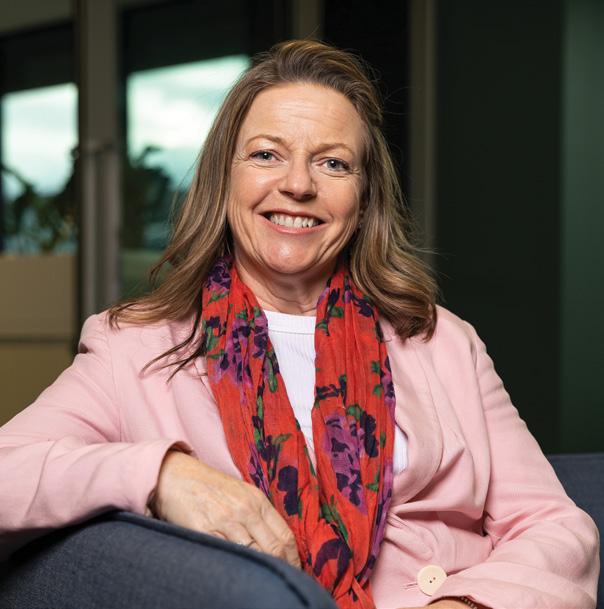 ENGAGEMENT AND EDUCATION MANAGER AT URBAN UTILITIES
ENGAGEMENT AND EDUCATION MANAGER AT URBAN UTILITIES
“During the WaterCare campaign we worked with our community partners to drive conversations within their communities to ensure our campaign messaging was delivered effectively through credible and trusted sources. These relationships build confidence in us and help customers to feel more comfortable contacting us if they do need support with their bills.”
Colette Torrance, Community Engagement and Education Manager at Urban Utilities, is similarly passionate about the importance of community engagement in Urban Utilities’ projects.
“At Urban Utilities, our customers are at the heart of what we do and our water and wastewater services play an integral role in enhancing quality of life,” Ms Torrance said.
“Everyone in the community can make a difference when it comes to maintaining our water supply and healthy rivers and creeks for the future – from water saving measures to planting trees and reducing litter,” Karen Owens, Corporate Communications and Brand Manager, Melbourne Water, said.
“In Melbourne, a safe, clean and healthy environment is essential to our way of life, and we pride ourselves on working closely with the community to achieve our goals. That’s why we put the community at the core of our work, so communications are vital. This includes education and awareness programs and seeking input into projects.”
STRATEGIES AND CAMPAIGNS
Each community engagement campaign requires a unique approach. In order to start a meaningful conversation with specific customers or communities, a campaign should:
• Identify the right audience
• Ask the right questions
• Find the right way to connect
• Listen to feedback with an open mind
By personalising your approach to suit different community members communication styles, you are starting the conversation with a warm approach and optimising your chances for a long lasting connection.
UTILITY • AUGUST 2022 WWW.UTILITYMAGAZINE.COM.AU 36
OPERATIONS AND TREATMENT
WATER
COLETTE TORRANCE, COMMUNITY

Urban Utilities, Yarra Valley Water and Melbourne Water agree that successful community engagement requires customised, innovative approaches.
Urban Utilities has been working on innovative solutions to help manage the impacts of intense rainfall on its wastewater network in Northgate and Banyo in Brisbane, near Cannery Creek water course.
Aware that the area and its surroundings were important to the local community, the company asked the community to help it design an effective solution that would benefit both the organisation and the local area.
“We’re committed to working with our customers and communities to help create solutions that not only manage water sustainably, but add value to our city and its communities,” Ms Torrance said.
“In the case of our Cannery Creek Sewer Upgrade, we formed a Community Planning Team (CPT) which is made up of 23 self-nominated community members and collectively they represent a diverse demographic cross-section of the local area.
WATER OPERATIONS AND TREATMENT
“They’ve been involved from the beginning and as a result of their input, the design also integrates a number of community aspirations including beautifying the creek banks and surrounds and providing shared paths and seating for local residents to use.”
Yarra Valley Water has also approached community engagement in a number of different ways to best educate the community on the importance of water conservation, sewer blockages, and more. Recent campaigns include:
• Make Every Drop Count water conservation campaign
• Wet wipes awareness campaign
By creating a campaign advocating water conservation, Yarra Valley Water is enabling its customers to understand the company’s challenges and become advocates for the issue.
“As part of the recent Make Every Drop Count water conservation campaign, a collaborative effort delivered by Melbourne’s metropolitan water corporations, Melburnians shared their water-saving tips via a dedicated website and through radio promotions,” Ms White said.
The major issue of sewer blockages in Melbourne – caused by flushing non-flushable items down the toilet – is just as critical to Yarra Valley Water, particularly during Melbourne’s COVID-19 lockdowns, when the city saw critical toilet paper shortages.
“During the COVID-19 panic buying in 2020, we reached out to vulnerable customers through our community partners, delivering toilet paper and hand sanitiser. We’ve handed out branded toilet paper to commuters at train stations as part of our wet wipes awareness campaign, targeting areas where wipes were causing sewer blockages,” Ms White said.
Melbourne Water’s approach to community engagement was just as unique, with its recent focus on keeping Melbourne’s rivers and creeks clean of litter. To help city
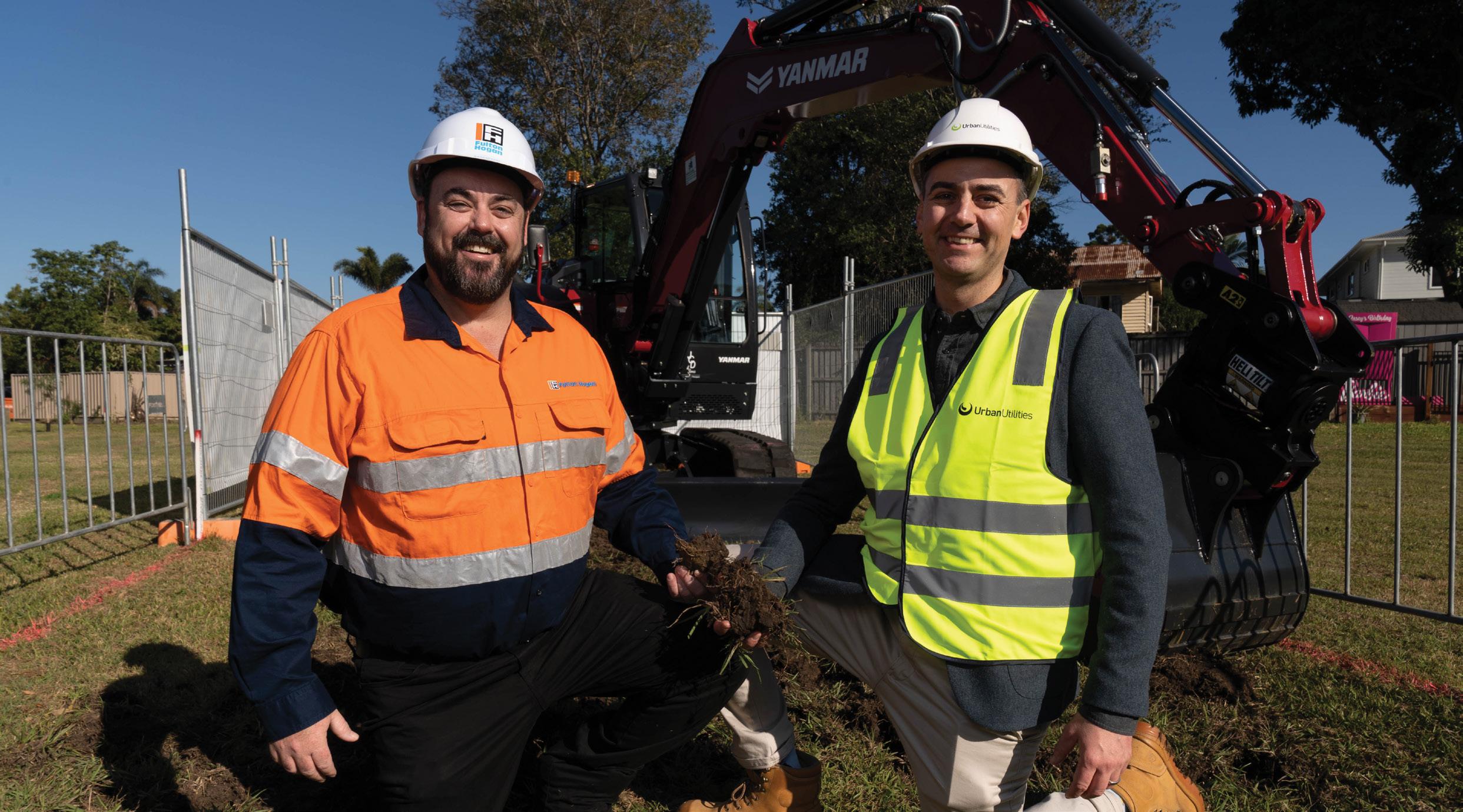
37
CANNERY CREEK SEWER UPGRADE CONCEPT DESIGN SHOWING SHARED PATHS.
L-R FULTON HOGAN UTILITIES' AARON LUTTON AND URBAN UTILITIES' PAUL PHILLIPS AT THE BREAKING GROUND
WATER OPERATIONS AND TREATMENT
residents understand the importance of the issue, and their role in it, Melbourne Water forged a partnership with Melbourne Zoo in early 2022. Together, they created an educational augmented reality experience under the banner ‘Make Litter Extinct’.
“This fun, free and interactive experience involved a series of QR codes located around the zoo on colourful posters. Visitors had to go to various sites around the Zoo, scan the codes on a mobile phone to find five critters and help protect them from litter that ends up in our rivers and creeks,” Ms Owens said.
“Visitors to the Zoo learnt that the litter that is dropped in our streets travels through stormwater drains and ends up in our rivers and creeks, impacting the habitats of animals like the platypus. The aim was to increase awareness of the impact of littering and encourage good habits in children and adults to ensure all litter is placed in bins.”
MEASURING SUCCESSFUL ENGAGEMENT
Just as each community engagement campaign should employ different approaches, they also require different methods to measure success.
There are various tools available to measure the success of community engagement including surveys, social media followings, workshops, and other approaches that provide an analytical view of the campaign’s success.
However, in order to retain long-term community engagement, it is critical when analysing data, to focus on the ‘why’ of the results. By understanding the ‘why’, the data becomes multi-functional; able to tell you not only how engaged communities are, but how likely they are to remain engaged, and how positive their experiences were.
For the Cannery Creek Sewer Upgrade, Urban Utilities worked with residents in a CPT for over three years to provide input into the project’s design plans.
“The CPT considered a number of options over many workshops and site visits. In 2019, they recommended that we pursue a nature-based solution which involved establishing a new wetland,” Ms Torrance said.
“By working together, we’ve come up with an integrated approach which will deliver benefits for the community, environment and our operations. The CPT are also eager to stay engaged and follow the progression of the project.”
Yarra Valley Water also achieved great results for its WaterCare campaign.
“For our WaterCare campaign we received more than 17,000 unique page views on our campaign website page through direct marketing (such as emails and SMS) and advertising. Paid advertising has delivered 5.4 million impressions and 737,000 video views.
“We evaluate our overall campaign efforts with reach, engagement, conversion numbers, and surveys to understand sentiment, attitudes and claimed behaviours,” Ms White said.
For Melbourne Water’s Make Litter Extinct campaign, successful community engagement was measured in a number of ways; how many people scanned the QR codes, social media engagement, traditional media coverage, satisfaction rates, surveys and participation conversion rates.
“As it was the first education program of its kind for Melbourne Water, it was used as a testing ground and there were many learnings afterwards – including placing QR codes in shady places, with room for prams,” Ms Owens said.

UTILITY • AUGUST 2022 WWW.UTILITYMAGAZINE.COM.AU
38
YARRA VALLEY WATER STAFF AT THE OLIVIA NEWTON JOHN CANCER WELLNESS AND RESEARCH
CENTRE WITH WELLNESS PACKS DISTRIBUTED AS PART OF THE WATERCARE CAMPAIGN.
REAPING THE REWARDS
Urban Utilities, Yarra Valley Water and Melbourne Water have each found quantifiable success through their campaigns. All measured success through, not only consumer growth and financial gain, but positive community feedback. For lasting community relationships, qualitative data is equally important.
Overall, Urban Utilities' CPT provided overwhelmingly positive feedback on the company’s engagement process.
“The CPT felt they had been listened to and given a valuable opportunity to contribute to the recommended solution. We’ll keep the CPT updated as construction starts in mid-2022 and as the project progresses,” Ms Torrance said.
The Urban Utilities project team found the project similarly rewarding. They achieved a clear understanding of the community’s needs and expectations.
“Thanks to the collaborative approach, we’ll be able to make Cannery Creek and its surroundings resilient to wet weather events to ensure the community can enjoy this beautiful area for years to come,” Ms Torrance said.
In Yarra Valley Water’s most recent survey to understand the impact of its WaterCare campaign on communities, it found:
• 83 per cent of respondents trusted Yarra Valley Water to do the right thing (compared to a baseline of 74 per cent)
• 80 per cent of respondents agreed that Yarra Valley Water helps customers experiencing difficulty paying for
essential water and sewerage services (compared to a baseline of 50 per cent)
• 63 per cent of respondents said they would access WaterCare to assist with paying their account after being exposed to the campaign
• 50 per cent of respondents said that they accessed a support option after being exposed to the campaign
• 89 per cent of respondents said that it was important for Yarra Valley Water to communicate payment support options to their customers
“These results underscore the importance of continually engaging with our customers so they understand the support that’s available to them, and doing so in a way that resonates and inspires confidence and trust to seek that help when they need it,” Ms White said.
Similarly, Melbourne Water asked participants in its Make Litter Extinct campaign to undertake a survey detailing their experiences. The survey found that 100 per cent of respondents learnt something new and stated they would make an effort to reduce litter.
“We found it was an interesting, agile and successful experience that could be re-purposed elsewhere,” Ms Owens said.
Community engagement is a skill utilities must work to develop. The key measure of success is an effective partnership between a utility and the community, and greater engagement will lead to better inclusivity, transparency and efficiency in future projects.



UTILITY • AUGUST 2022 WWW.UTILITYMAGAZINE.COM.AU 39
WATER OPERATIONS AND TREATMENT
better way to seal your next pipeline
Mains’ range now includes our new patented compact design. Highly innovative with features that provide simple and speed of installation. Available in standard sizes DN100 to DN1800 in both PN16 and PN35 pressure ratings. Larger sizes are also available on request. Innovative Compact Design Simple Installation COMPACT DISMANTLING JOINT AS4087 AS/NZS4158 WSAA: PA 2056 www.steelmains.com Designed and Made in Australia WSAA Appraisal
A
Steel
CLIMATE-RESILIENT WASTEWATER
INFRASTRUCTURE

The severity of recent weather events in Australia has continued to highlight the need for climate-resilient infrastructure. Bushfires, floods, droughts and other unprecedented weather events have placed a significant strain on the Australian economy, as well as their devastating impact on both regional and metropolitan communities. Effective wastewater infrastructure designed for climate-resilience is vital to long-term sustainability.
The changing climate is already having an impact on the way we live, and higher temperatures, more extreme fire weather and extended rainfall events have the capacity to impact essential infrastructure across core utilities, including energy, water, transport and telecommunications.
To counter this, a proactive and evidence-based approach to managing risks posed by climate change is critical in the planning, design and asset management of infrastructure servicing homes, businesses, and communities.
Federal and state governments currently have climateresilience and adaptation strategies in place, designed to position the country to anticipate, manage and adapt to the changing climate. For these strategies to be successfully delivered, utility service providers have a responsibility to ensure the products and infrastructure they provide are designed, built, and managed in a way that can continually respond to unpredictable climate disruptions.
WASTEWATER SOLUTIONS THAT CAN WITHSTAND EXTREME WEATHER
True Water provides long-term wastewater infrastructure solutions that minimise lifecycle costs, while guaranteeing operational and environmental security. Kubota treatment plants are fibre reinforced plastic modules, with all components required for treatment of wastewater contained within the plant below ground and accessed by gas tight lids. The resulting regulated treatment environment is unaffected by fluctuations in temperature and weather.
In addition, its clever design requires few mechanical moving parts, ensuring critical failure points are minimised. The robust systems can even survive inundation due to extreme weather (such as floods or severe storms), with individual parts able to be cleaned, restored and operational again with little down time.
During the recent floods in northern New South Wales, a wastewater treatment system designed by True Water for the Ampol Service Centre at Chinderah, experienced severe flooding and system inundation. True Water were alerted to a power outage caused by rising flood levels through its TELEmi™ remote monitoring platform, allowing the team to successfully minimise impacts, and ensure the infrastructure remained viable following the one-in-100-year flood event.
The True Water team were on site within 48 hours of the flood water receding, to evaluate damage and restore the system to compliant operation. Despite being inundated, the system was still operational upon arrival.
True Water provided an interim solution for a failed mechanical component and replaced it within weeks. The Kubota plant was cleaned, recommissioned, and refurbished immediately and at minimal cost, preventing any impact to the environment.
True Water specialises in designing, installing, and managing high quality, sustainable wastewater infrastructure solutions for businesses and communities around Australia. Its goal is to consistently deliver fit-for-purpose infrastructure that meets the needs of the changing climate, while protecting the natural environment and improving quality of life for current and future generations.
For more information, please contact True Water at www.truewateraustralia.com
UTILITY • AUGUST 2022 WWW.UTILITYMAGAZINE.COM.AU 40
WATER OPERATIONS AND TREATMENT | Sponsored editorial
PROVIDING SOLUTIONS FOR:
• Municipal Sewage Treatment
• Commercial & Industrial Estates
• Government Projects
• Residential Developments
• Urban Subdivisions
• Resorts & Caravan Parks
• Mining Accommodation
• Airports & Infrastructure
• Service Stations
• Defence Assets
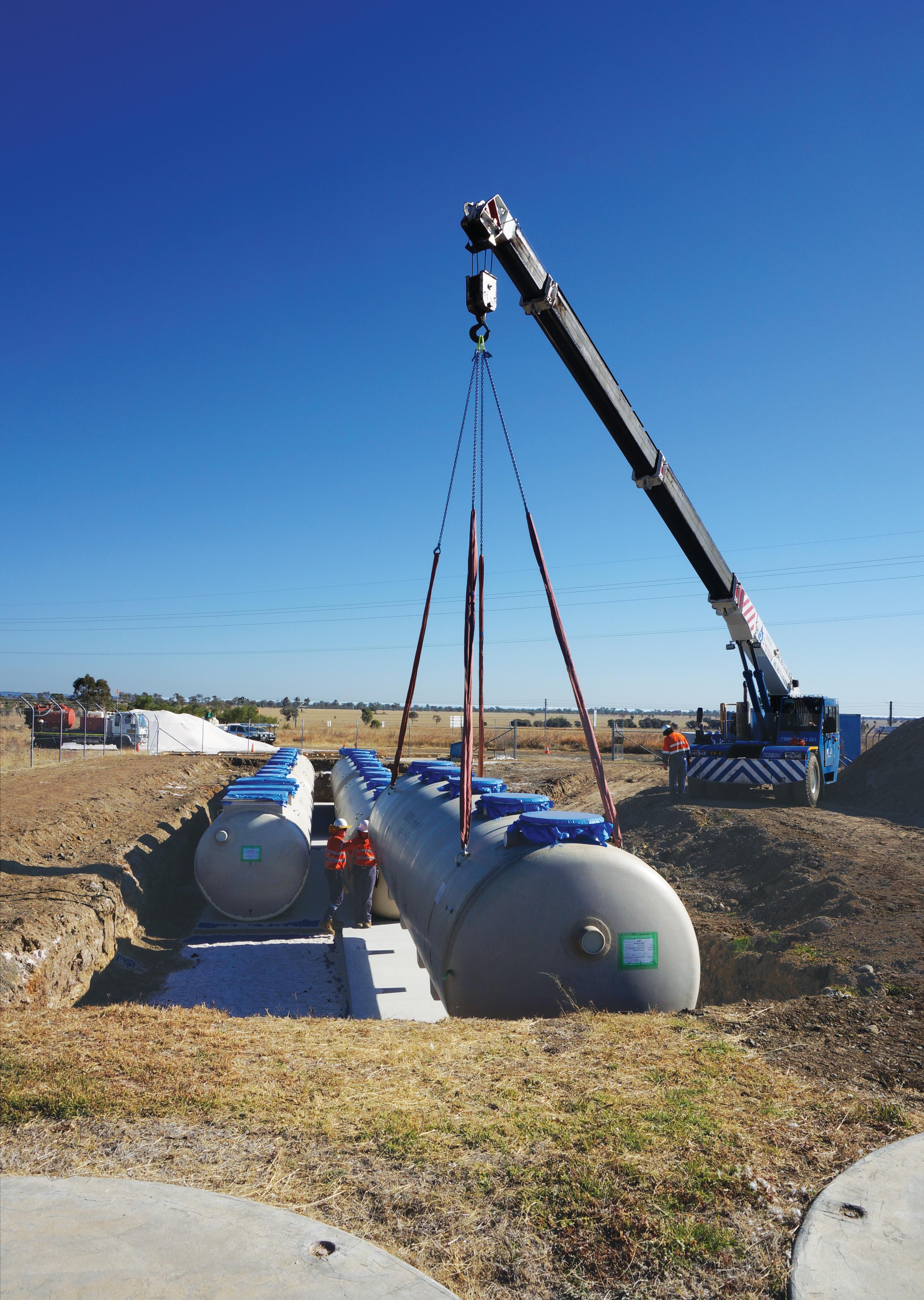
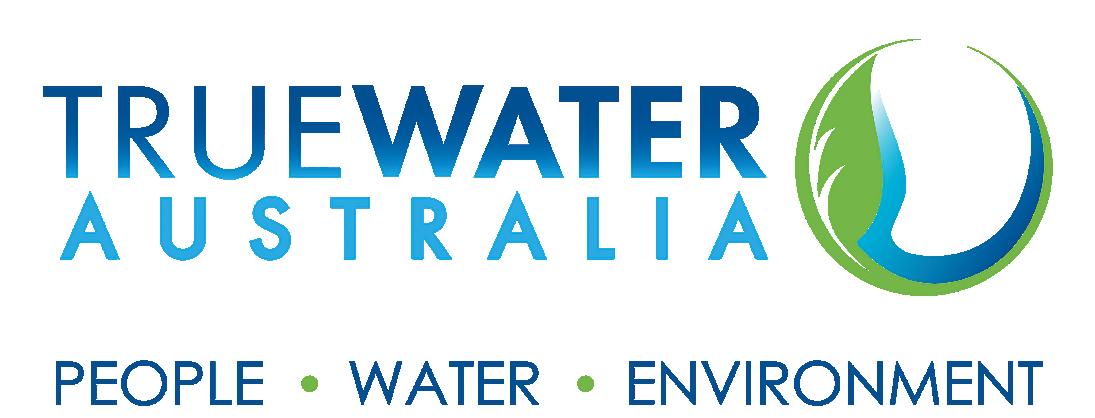

1800 057 771 | truewateraustralia.com
SEWAGE & WASTEWATER SPECIALISTS
CONSULTANCY • DESIGN • MANUFACTURE • INSTALLATION • MANAGEMENT
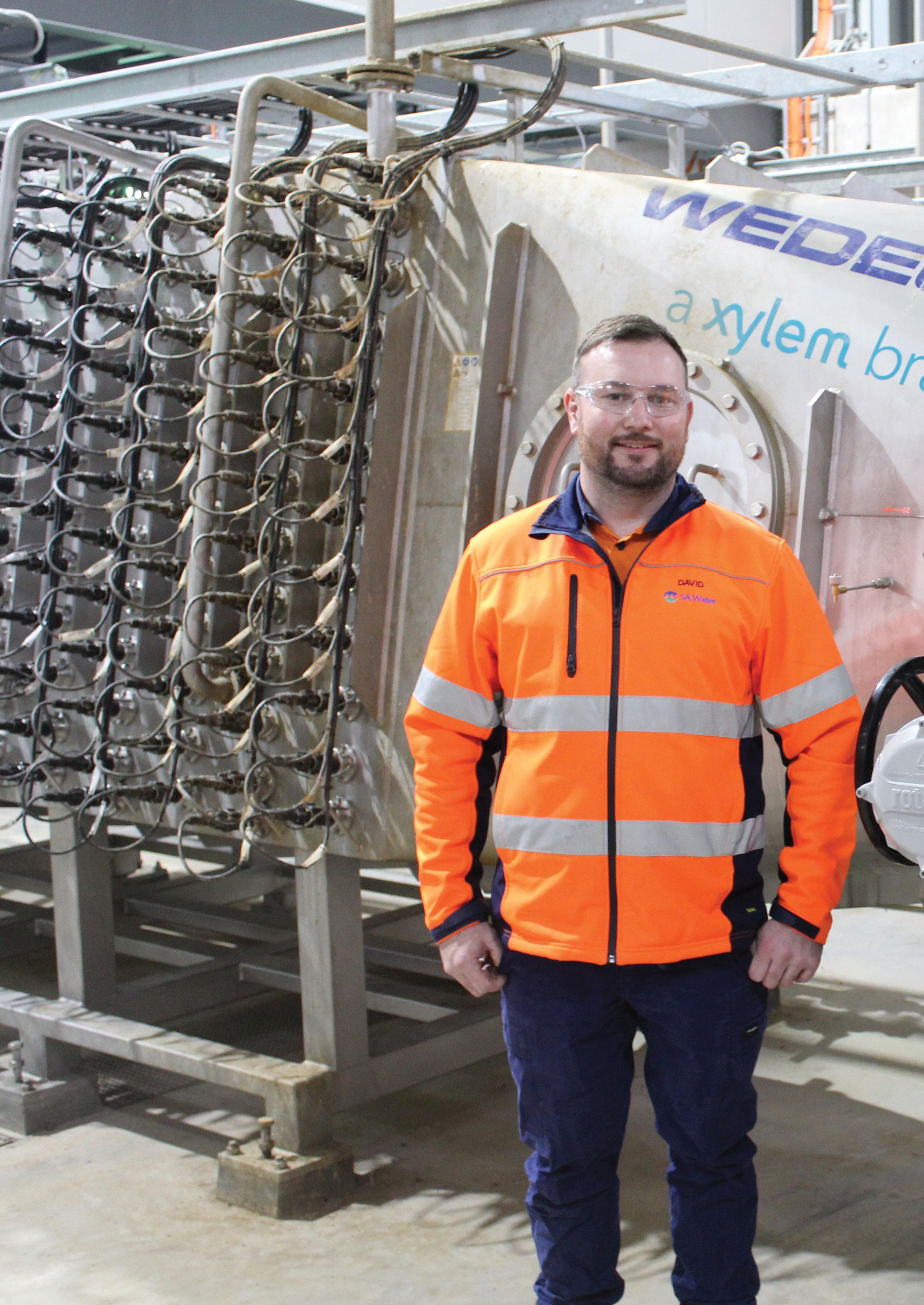
UV disinfection system
LIGHTING UP SA WATER TREATMENT
WATER OPERATIONS AND TREATMENT 42
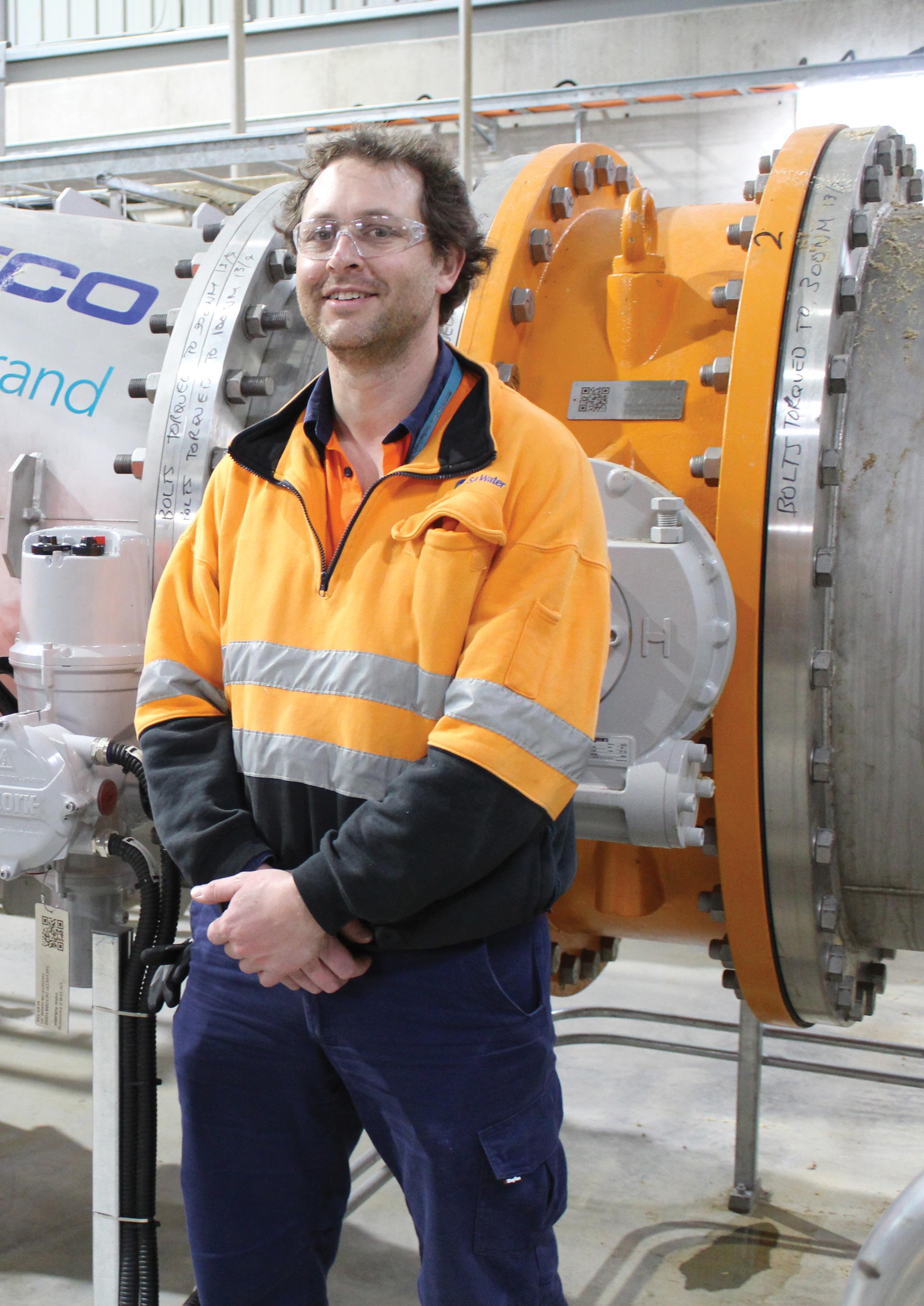
As part of a $26 million upgrade to ensure SA Water’s continued compliance with Australia’s world-leading drinking water standards, the utility installed a drinking water ultraviolet (UV) disinfection system at its Happy Valley Water Treatment Plant that has been keeping pathogens at bay and protecting South Australia’s drinking water for more than six months.
WATER OPERATIONS AND TREATMENT 43
The southern hemisphere’s largest Xylemmanufactured drinking water ultraviolet (UV) disinfection system was commissioned in December 2021 and retrofitted to SA Water’s Happy Valley Water Treatment Plant.
Four reactors with a combined 624 UV lamps enable the system to treat up to 600mL of daily water instantaneously – designed with additional treatment capacity to maintain network flexibility and support demand changes.
SA Water’s Senior Manager of Capital Delivery, Peter Seltsikas, said secondary disinfection with UV light would provide an additional layer of water quality protection against potentially harmful pathogens.
“Our new UV disinfection system at Happy Valley is another line of defence protecting the quality and safety of our largest drinking water supply to metropolitan Adelaide, while enabling kayaking and fishing at the adjoining reservoir,” Mr Seltsikas said.
Pathogens come in a range of forms and can be found naturally in water sources. The catchment area that supplies Happy Valley Reservoir, via Mount Bold Reservoir, is significant and covers the Mount Lofty Ranges.
“From a water quality perspective, this particular catchment is challenging given the presence of agriculture, so there’s an ever-present risk of pathogens, such as cryptosporidium, finding their way into our reservoirs,” Mr Seltsikas said.
“To manage these risks, our Happy Valley Water Treatment Plant adopts a series of conventional treatment processes including coagulation, flocculation and filtration to trap and remove dissolved organic matter or other solid particles.”
ONE OF THE MOST ENERGY EFFICIENT UV SYSTEMS
Disinfection of the water with chlorine occurs after filtration, to destroy any microorganisms that may not have been captured, however cryptosporidium can be resistant to chlorine and evade treatment.
When pathogens like cryptosporidium and giardia are exposed to, and absorb the high-powered UV light, it destroys their structures and inactivates the microorganisms’ cellular function.
Each reactor has 13 independent rows of 12 UV lamps, which are automatically operated and are capable of turning themselves off based on the instantaneous treated flow and incoming water quality.
“The lamps are powered by the latest electronic ballast technology – regulating the lamps’ output from 50 to 100 per cent – and harness a sophisticated UV intensity sensor that significantly reduces energy consumption.
“These two features make it one of the most energy efficient UV systems, and when combined with our solar array at Happy Valley capable of producing more than 17,000MWh of energy per year to help power the wider
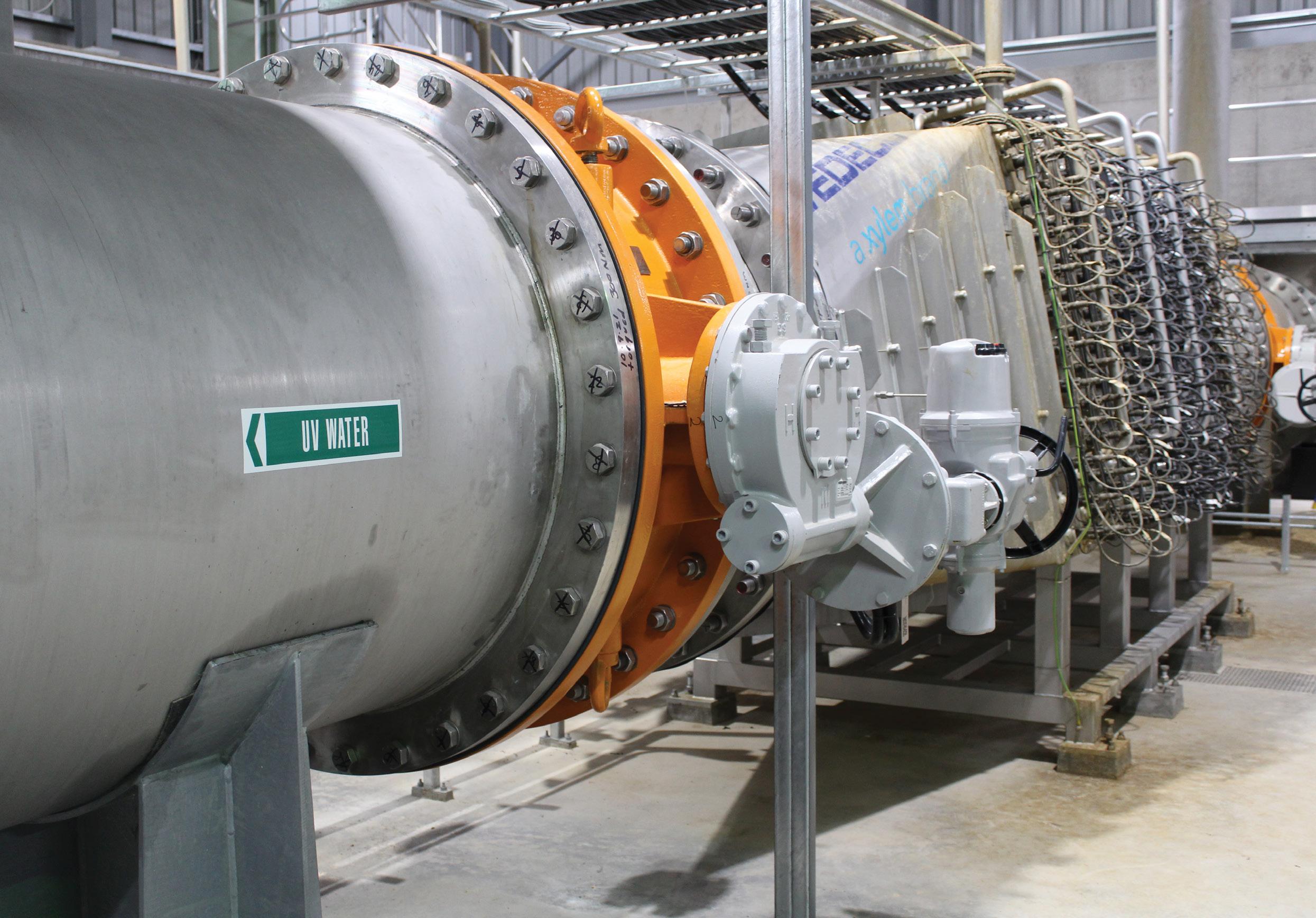
WATER OPERATIONS AND TREATMENT
44

PROJECT ON SCHEDULE DESPITE SUPPLY CHAIN CHALLENGES
More than 200 people worked on the project across SA Water and its construction partner, John Holland Guidera O’Connor joint venture, with 60 full-time employees working on site at the height of construction.
For Australian sales & technical support, contact our local team or use our virtual Partner Locator to find the nearest Pulsar Authorized Distribution Partner plant, ensures we’re meeting the system’s energy demands and operating it sustainably,” Mr Seltsikas said.
Mr Seltsikas said the team’s agility and innovation came to the fore amid global shipping delays in 2021.
“While the impact of last year’s Suez Canal incident sparked delays across the global supply chain, including with our UV system en route inside a shipping container, we initiated swift changes to our project design and condensed the construction schedule to maintain our delivery program,” Mr Seltsikas said.
“Our team reviewed the design of the inlet duct, which required a new weir to be cut into the existing wall, and the initial design included manual concrete demolition and a significant amount of structural steelwork.
“Harnessing creative thinking, we used a robotic cut saw to remove the concrete more efficiently and poured a large concrete beam, eliminating the need to install steel to structurally support the new weir.
“It was imperative we remained on schedule despite the delay in receiving the infrastructure, and these design variations removed six weeks of work from the program to ensure we could complete the project on budget and on time.”
ABOUT SA WATER
At SA Water we provide our state’s most important and essential service – the delivery of safe, clean water and dependable sewerage services. We are a corporation owned by the people of South Australia, and are committed to providing our 1.7 million customers with world class water services that represent excellent value. We invest around $300 million a year in sustaining and enhancing our state-wide network, to ensure it continues to play an integral role in South Australia’s social and economic development. For more information, visit sawater.com.au
Excellence in flow & level measurement.
FLOW, LEVEL , PUMP CONTROL , VOLUME , & SLUDGE LEVEL
• Contacting and non-contacting measurement options
• Full, partially filled pipes, and open channel flow measurement
• Ultrasonic and radar technology
• Process measurement made simple
• Customer-centric
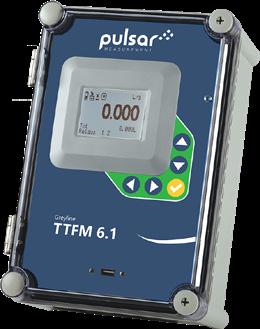






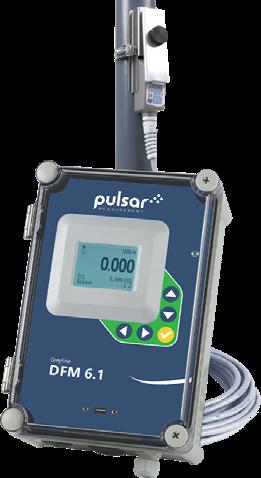




UTILITY • AUGUST 2022 WWW.UTILITYMAGAZINE.COM.AU 45 WATER OPERATIONS AND TREATMENT
PULSARMEASUREMENT.COM OCEANIA@PULSARMEASUREMENT.COM +61 ( 0 ) 428 692 274
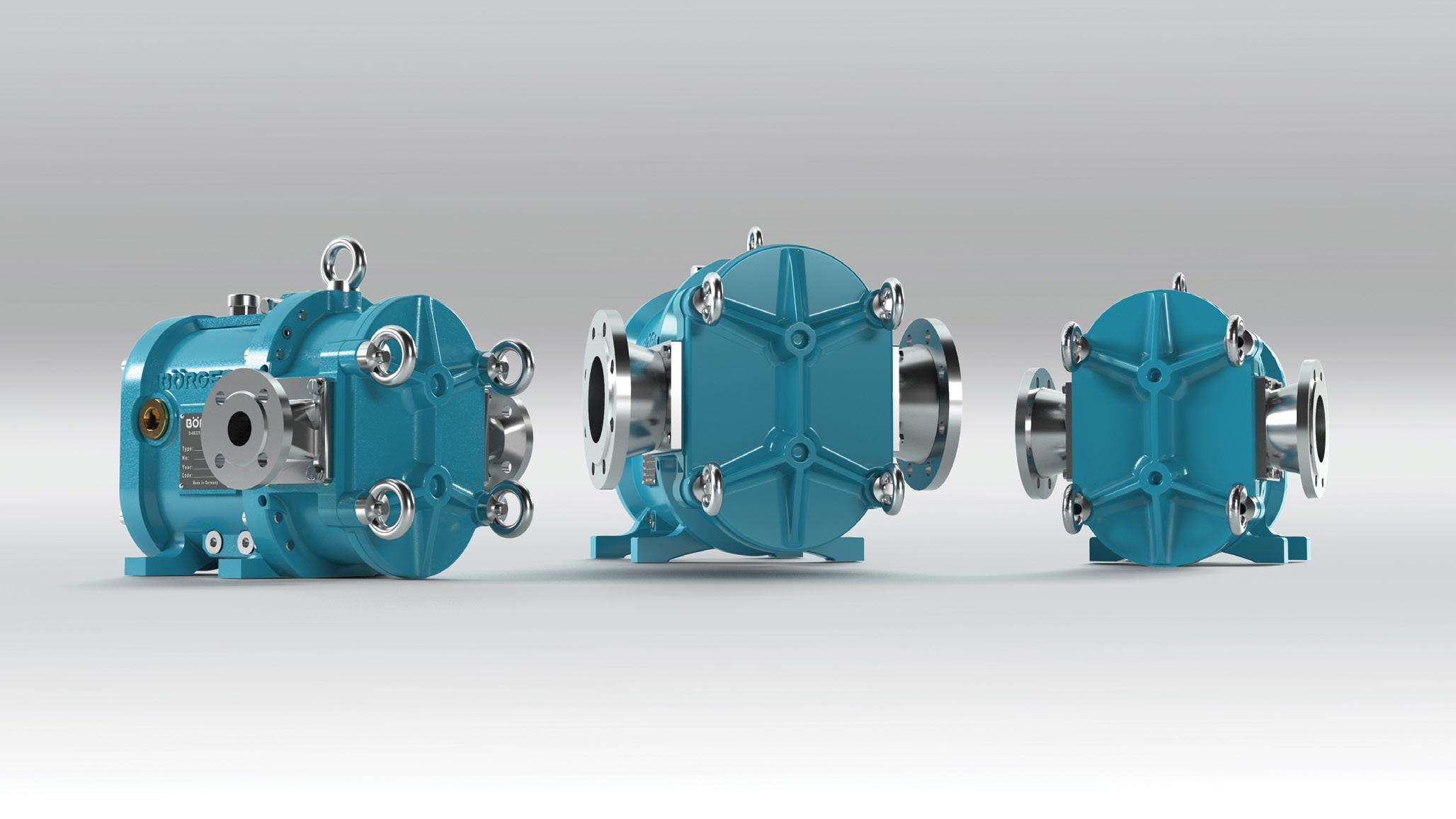
NEW HIGH-TECH ROTARY LOBE PUMPS
Boerger has surprised the world of pumps with a new generation of its BLUEline rotary lobe pumps, the BLUEline Nova, with the high-tech pump available in six sizes and with flow rates of up to 110 m 3/h. The German manufacturer promises not only excellent volumetric efficiency but also maximum choice of sealing systems.
Boerger is well-known for its high-quality rotary lobe pumps with flow rates of up to 1,450 m³/h.
Presenting the new generation of its BLUEline rotary lobe pumps, Alois Börger, Managing Director of Boerger, said, “The development of the BLUEline Nova has benefited from our 30 years of experience in pump manufacturing. With the help of computer flow simulations and physical test bench hours, we were able to improve the pumps even further.”
Mr Börger said the rotors and casing were made for one another. This newly developed one-piece DIUS rotor ensures an almost pulsation-free pumping at pressures of up to 12 bar, while the wide sealing surfaces of the screw-profile rotor prevents backflow of the medium.
“Boerger has also modified the pump chamber to utilise the dual-lobe rotor to its full potential. The geometry of the inlets and outlets, as well as the wrap angle of the casing, were particularly optimised. We were able to considerably improve the volumetric efficiency of the pump. To this end, we have adjusted the pump chamber to the rotor geometry in a flow-optimised design,” Mr Börger said.
The BLUEline Nova comes in two variants: with or without protection plates and liners. In its clean version, protection plates and liners are not required. The pump with minimum dead space can be cleaned according to the hygiene
procedures, CIP (Cleaning-In-Place) and SIP (SterilisationIn-Place).
In its tough version, the pump is equipped with protection plates and liners for pumping abrasive media containing solids. With a new innovative fastening system, the ‘tough’ version of the Nova pump ensures the best volumetric efficiency ever achieved in a rotary lobe pump. In case of wear, the protection plates and liners will be replaced quickly and easily due to its MIP® design (Maintenance in Place).
The large seal chamber of the BLUEline Nova provides space for different sealing systems, therefore ensuring connection of external supply systems is possible, and without issues. Different motors can also be selected for driving the BLUEline Nova rotary lobe pump. Upon request, the drive can be directly flanged to the pump and, due to the elimination of the coupling, the unit is now even more compact. In addition, this version does not require a base frame.
Like all Boerger pumps, the BLUEline Nova rotary lobe pumps can be manufactured according to the European ATEX guidelines for use in potentially explosive atmospheres. An API-676-compliant design, production according to the FDA regulations, or a technically tight pump design according to the German TA Luft requirements, round off the various options for versatile applications.
For more information, please visit www.newblueline.com.
UTILITY • AUGUST 2022 WWW.UTILITYMAGAZINE.COM.AU 46
WATER OPERATIONS AND TREATMENT | Sponsored editorial
EXCELLENCE – MADE TO LAST
WE DELIVER SOLUTIONS
Mobile, stationary or submerged – Börger configures and builds each rotary lobe pump in line with the requirements of the specific application.
The application options of Börger pumps have expanded with the new B BLUEline Nova rotary lobe pump. The BLUEline Nova pump ensures the best efficiency even with high pressures. Börger pumps are available in 25 pump sizes with flow rates between 1 – 1,440 m³/h.
THE MOST EFFICENT WAY OF PUMPING
Further to this, Börger also offers three different macerators - providing efficient chopping operations and capabilities, ensuring downstream machines and pumps to perform smoothly.


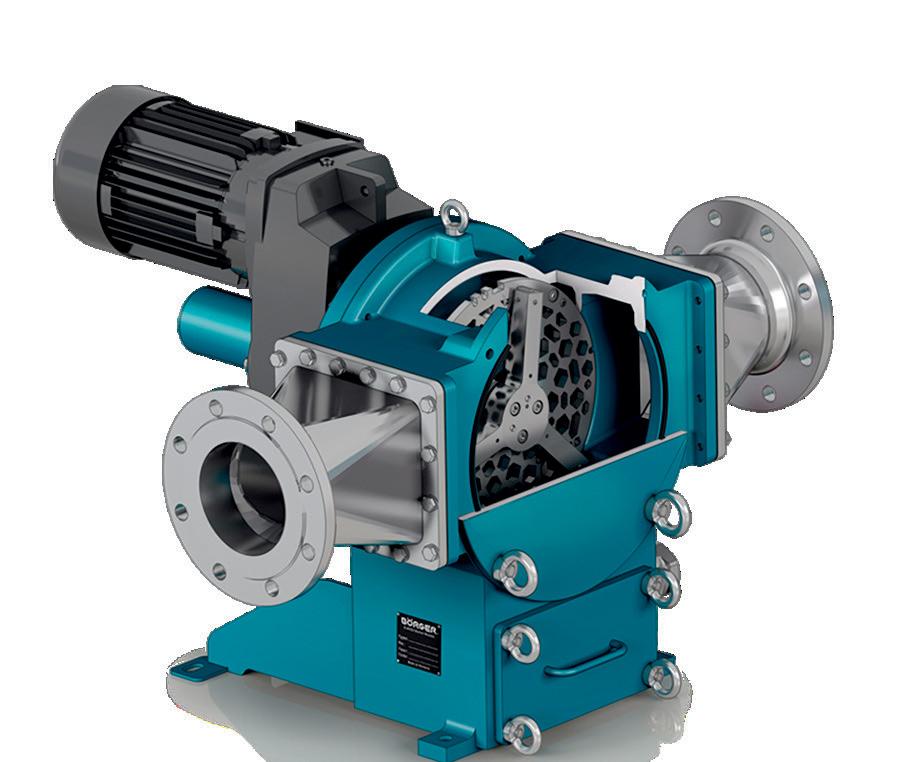
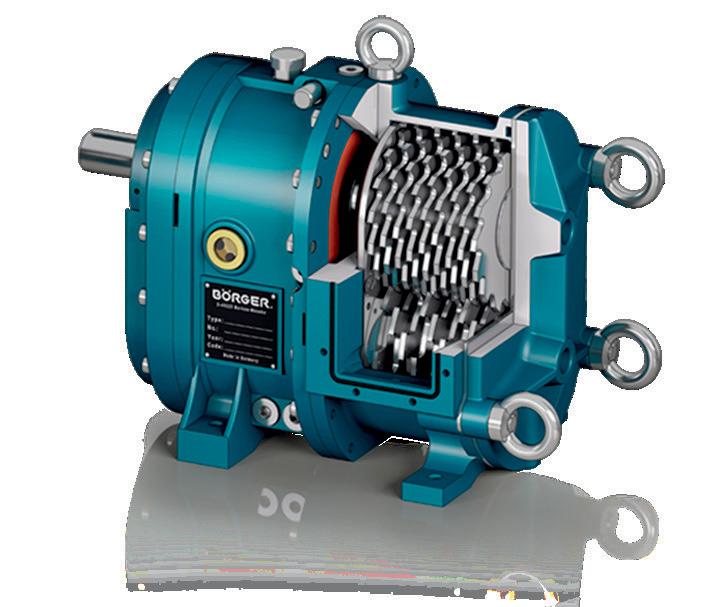
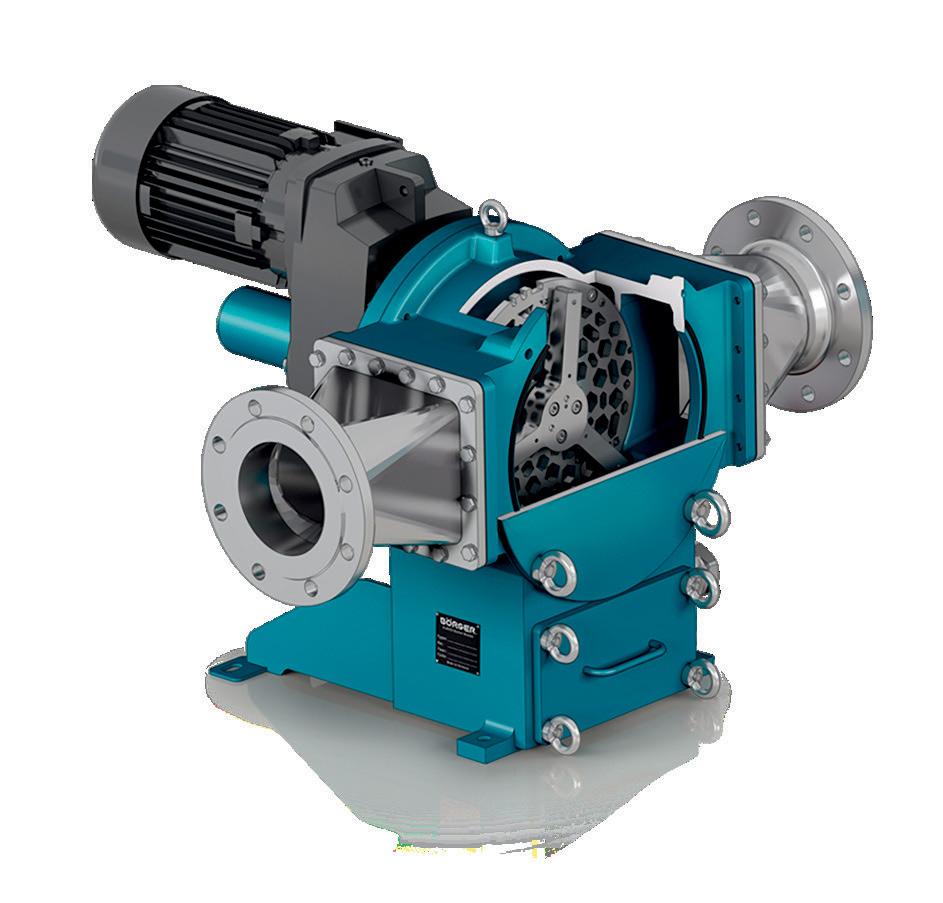

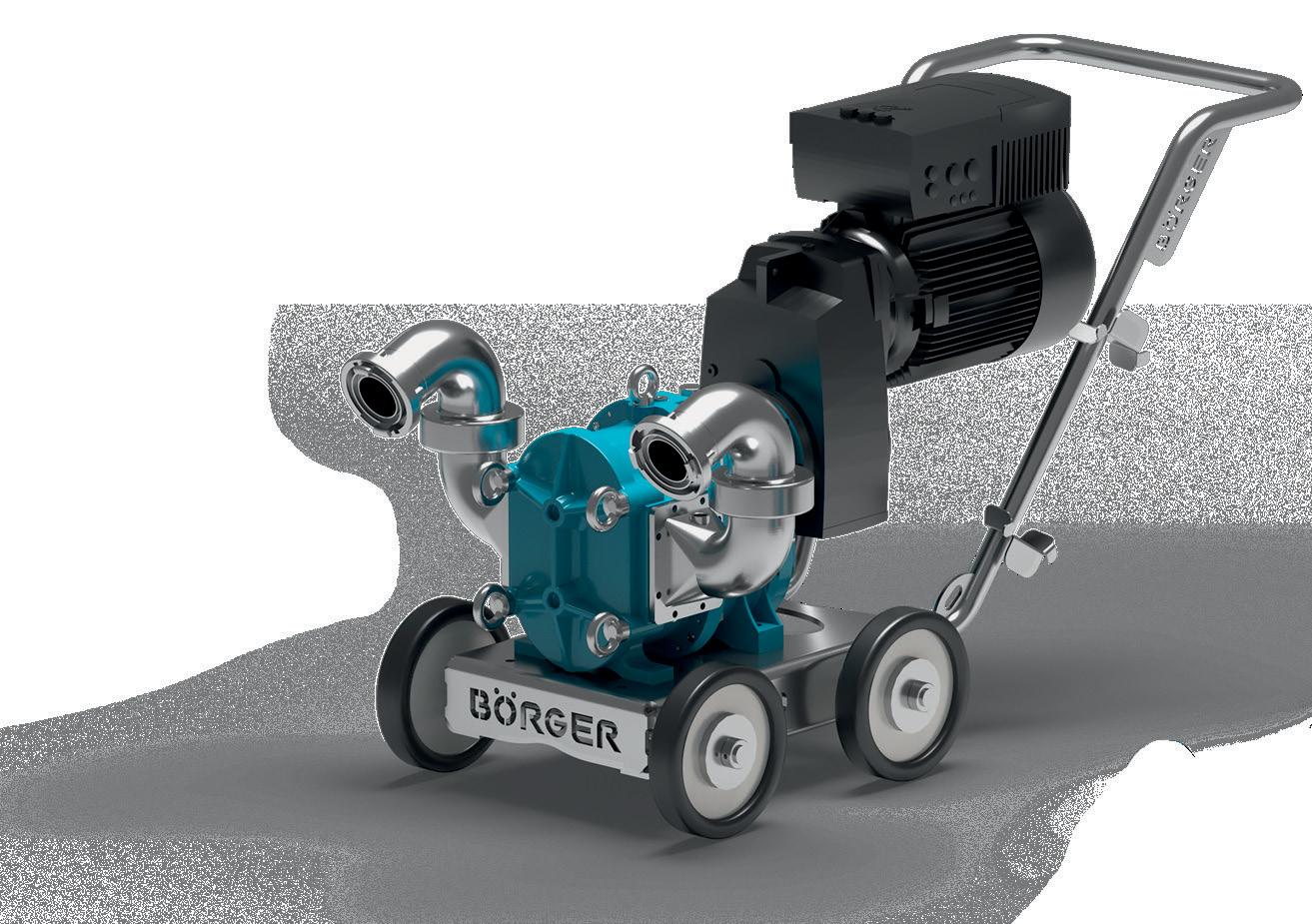

www.boerger.com Boerger Pumps Asia Pte Ltd • 16 Boon Lay Way #01–48 Tradehub 21 • Singapore 609965 • P: +65 6562 9540 • asia@boerger.com
SMART WATER METERS
TACKLE WATER LOSSES IN TROPICAL NORTH QUEENSLAND
Top tourist destination, Port Douglas, is tackling water loss by quickly addressing leaks with the aid of smart water meters – a key tool in Douglas Shire Council’s water security strategy.
Hourly data collected by the meters easily identifies if a leak is present, empowering council staff to contact property owners, both residential and commercial, and advise them of the leak, saving water and the associated costs to treat and deliver the water.
Council has been actively contacting customers with leaks, and those customers have been extremely positive and appreciative as their water bills will no longer be impacted by unknown water losses, saving them money.
Council will soon launch a free Customer Portal which will give water users access to their water consumption data and allow them to set leak and high consumption alerts and send weekly and monthly reports by email.
This consumption data will give the community and commercial property owners a better understanding of
how they are using water, where losses are occurring, and the impact of what might appear to be a small leak but is actually causing significant water loss.

The Customer Portal will be a powerful tool for holidayhome owners who will be able to remotely identify any issues on their properties before they cause damage to infrastructure.
The Port Douglas rollout was Stage One of Douglas Shire Council’s Smart Water Metering Program. Preparations for Stage two are being made which will include the rest of the Shire’s meters, totalling 4,700.
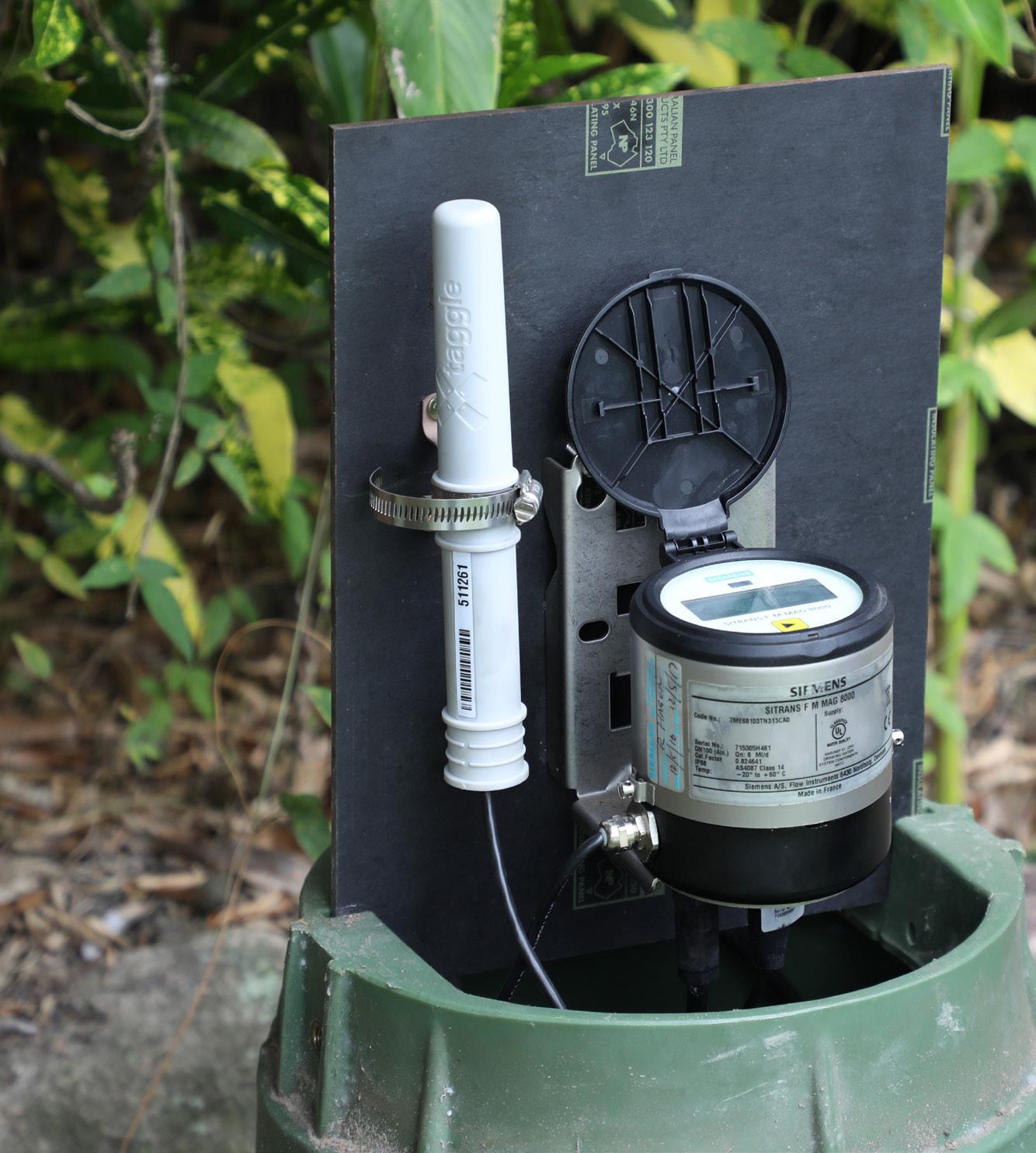
48 WATER OPERATIONS AND TREATMENT | Sponsored editorial
For more information about smart water metering visit www.taggle.com.au

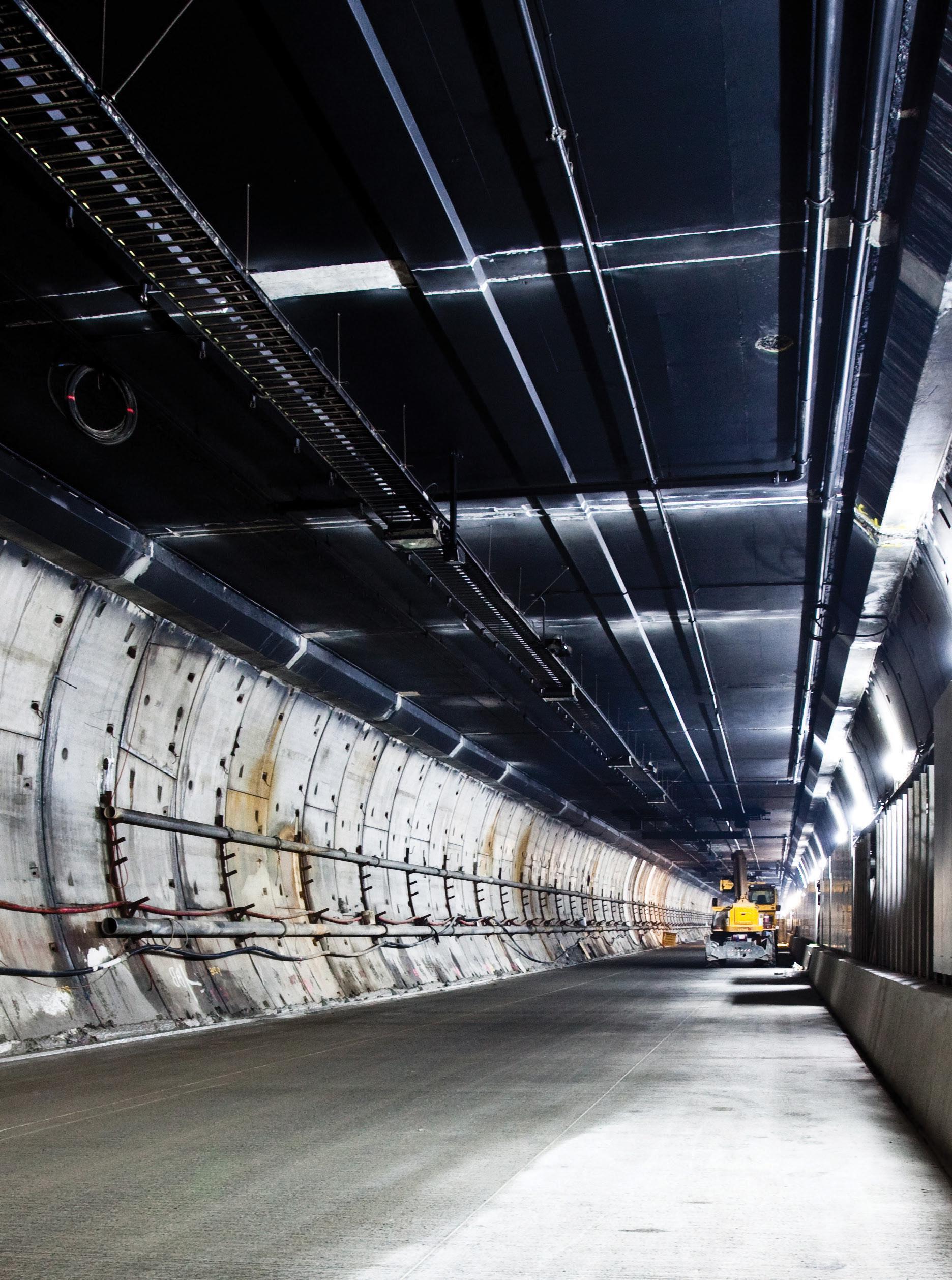
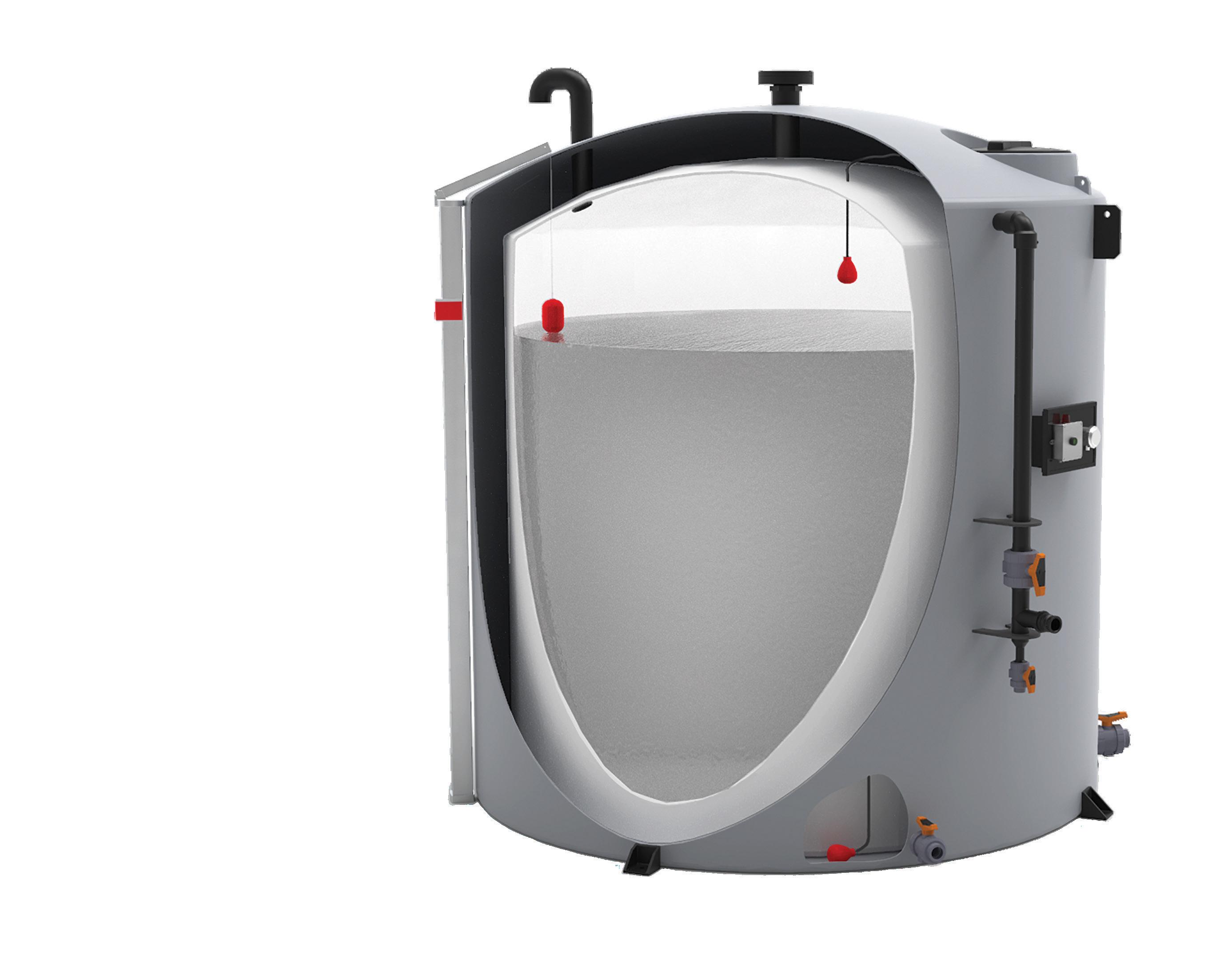
1300 062 064 | polymaster.com.au 25 YEAR DESIGN LIFE
our range
See
HOW SOUTH EAST WATER
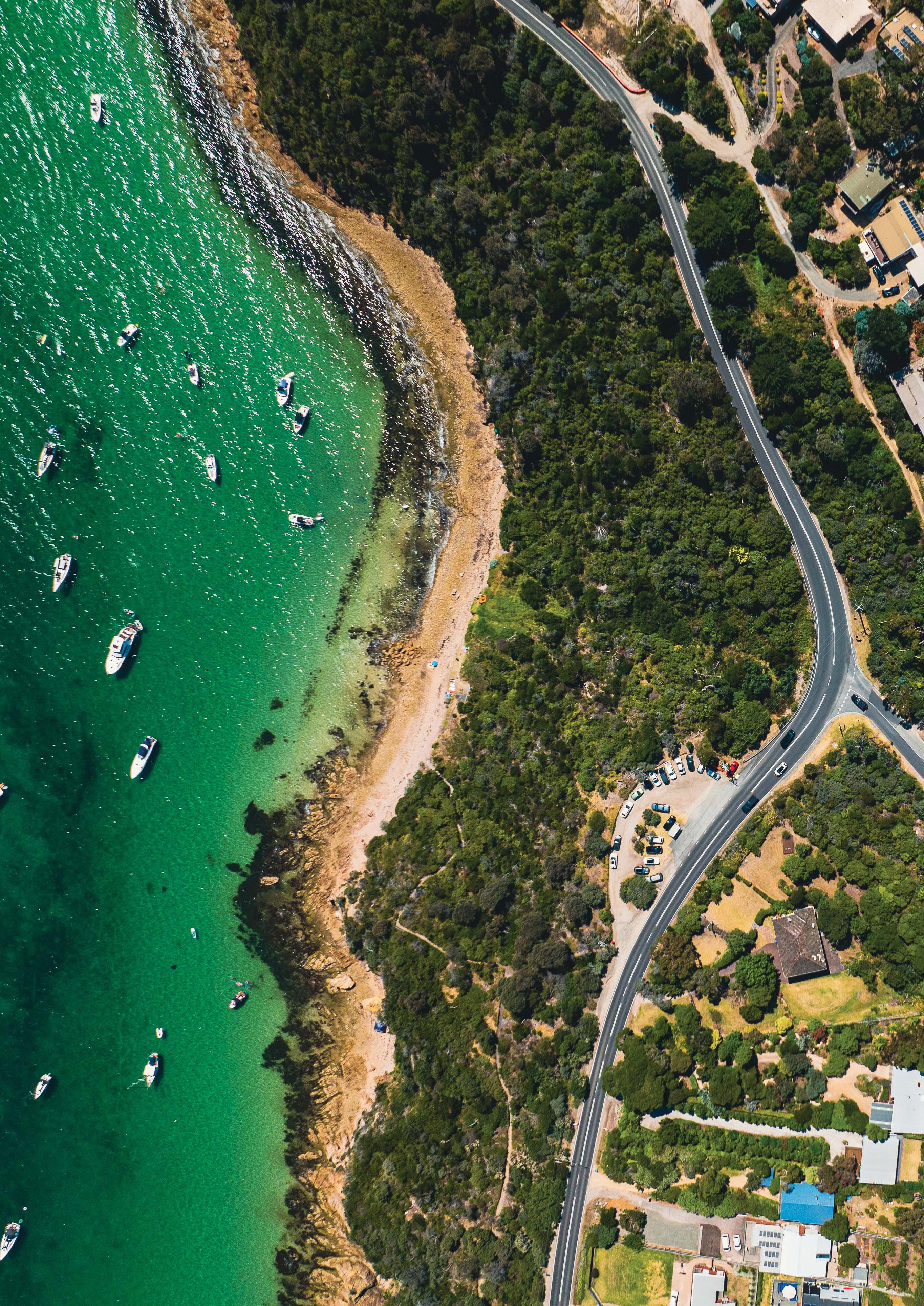
IS
REDUCING CUSTOMER WATER LEAKS AND BILL SHOCK
50 WATER OPERATIONS AND TREATMENT

South East Water has become one of Victoria’s most progressive utilities – particularly when it comes to the modernisation of its network. Since May last year, the 35,000 digital meters installed across its network have not only saved over 201 million litres of water, but by identifying leaks early it’s prevented an average of $150 of unnecessary usage charges being added to a customer’s next bill.
As the cost of living increases, customers continue to be conscious of their water bills and have higher expectations of utilities to keep them informed of their usage and any potential issues.
Here, Mikala Hehir, General Manager of Customer and Community at South East Water, explains how new digital meters and Internet of Things (IoT) platforms are helping to identify water leaks, saving customers water and money, and protecting a critical resource.
Recent research conducted by South East Water found that about five per cent of households have a water leak they're not aware of. Without intervention, these leaks can go from a small inconvenience to a major disruption, wasting our most precious resource and costing customers money.
For utilities, these water leaks can be expensive, disruptive and lead to dissatisfied customers. In a time where customer expectations are high, and there are increased demands for lower bills and more visibility of usage, this is a significant issue.
Ms Hehir said that traditionally utilities rely on analogue meters and bill quarterly, so often, by the time both the utility and the customer are aware of the leak, it can be quite a serious problem.
With this in mind, South East Water has been working to develop fit-for-purpose digital solutions to help reduce issues like water leakage. Innovative data-reading technologies like Lentic®, Sotto®, OneBox®, footprint® and Flow Lotic™ have been developed by its in-house R&D team, and then tested and proven in the network, for the benefit of customers, the environment and the utility.
EMBRACING DIGITAL
Digital water meters will be one of the most important tools in helping customers manage their water usage and avoiding bill shock.
South East Water is currently undertaking a large scale trial rollout of digital meters. There are around 35,000 digital meters already installed, with plans for an additional 65,000 to be deployed by the end of 2023.
The utility-developed IoT platform, Lentic®, performs data ingestion and validation on the data from digital meters, in unison with existing data from enterprise systems, to
WWW.UTILITYMAGAZINE.COM.AU
WATER OPERATIONS AND TREATMENT 51
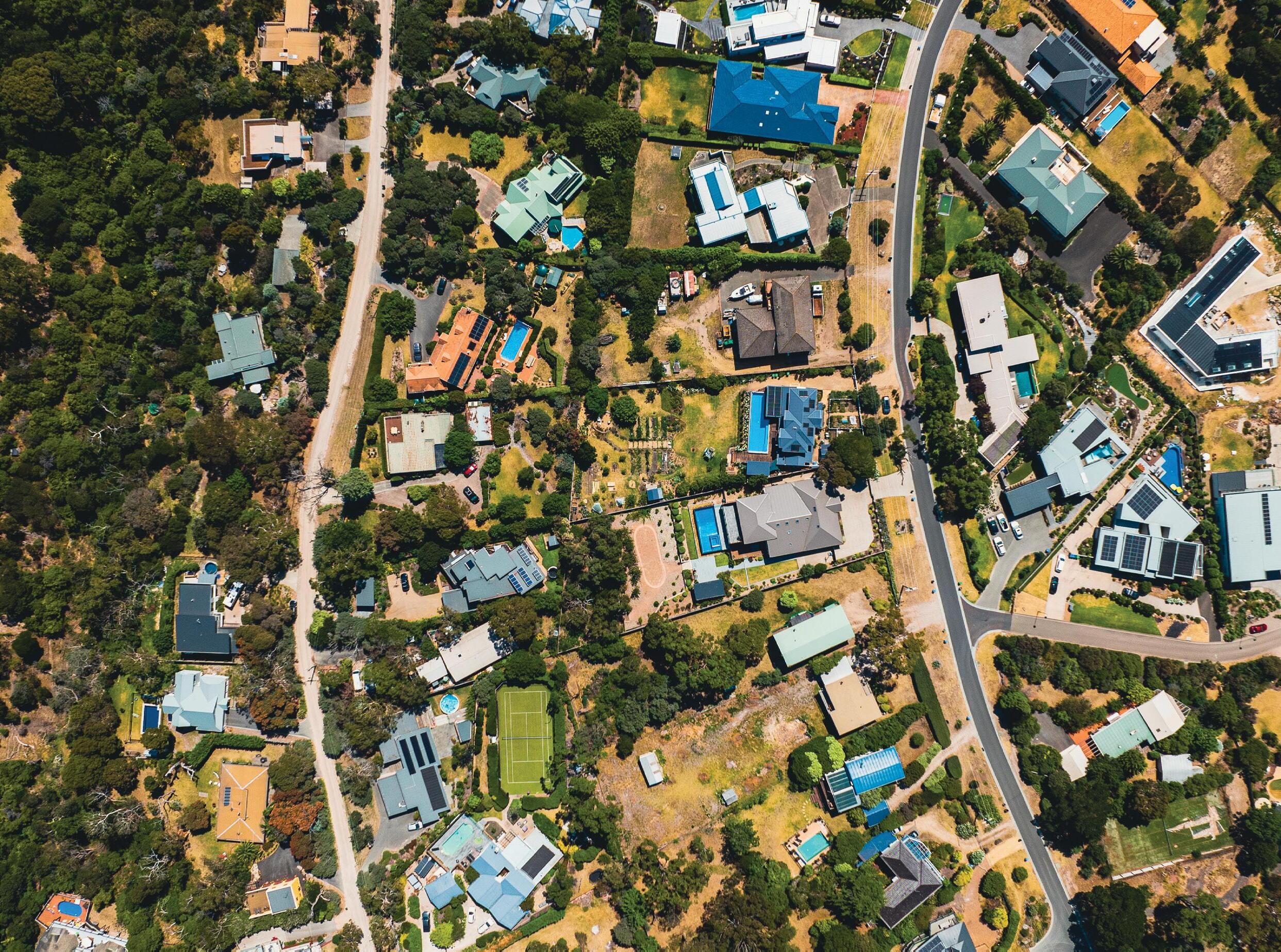
provide high quality and reliable insights for operational decision making.
“Lentic® integrates with our other enterprise systems like the CRM, allowing customers to track their water usage using the customer portal so they can identify unusually high usage early on, before it becomes a major issue,” Ms Hehir said.
“We've already set up an automated process so the contact details of the customer are in our Salesforce CRM system. From there, we can send out a communication, like an SMS message, to automatically warn them about their usage.
“In just under 15 per cent of the houses that have digital meters, we were able to notify them of leaks -- some were aware of these, some not -- and have been able to help the customers save money.”
NEAR-REAL TIME VISIBILITY AND INSIGHTS
A simple SMS, alongside the portal’s daily updates, has unsurprisingly been received well by customers.
In one recent example, a customer was in the process of building a house, but was not present at the site, and therefore unaware of a substantial leak of close to 30,000 litres over a 24-hour period.
The builder was also unaware of the leak, but because South East Water’s customer service team was alerted to the leak – via the Lentic® system linking the digital meter to the network command centre -- it was detected quickly and
fixed early. If the customer waited 85 days for their next bill, the leak could have cost around $10,000.
As South East Water and its commercial arm, Iota. continue to create, develop, manufacture and license new technology for their communities to combat some of these pressing water sector issues, they are also listening to their customers to outline the next steps.
In fact, talking to its customers is critical for South East Water. Over the last 12 months – as part of its 2023-2028 Price Submission – it formed a 40-member community panel made up of a cross-section of customers from across its network, to better understand what water services are the most important. Across the variety of public workshops, one:one interviews, focus groups and surveys, it was clear that digital, and digital metering, is a key focus for most.
South East Water’s deployment of digital meters, plus its central platform that operationalises the data, has had a number of positive customer and environmental outcomes.
For customers, the platform allows them to access their own data and detect unusual usage early on which creates a much more positive experience and increases engagement. While environmentally, the detection and prediction of future disruptive events allows for the world’s most precious resource to be preserved.
For more information, visit iotaservices.com.au
UTILITY • AUGUST 2022 WWW.UTILITYMAGAZINE.COM.AU 52 WATER OPERATIONS AND TREATMENT


The IoT platform, fit-for-water. iotaservices.com.au

FLOOD RECOVERY TOOL IMPROVES SEQ RESILIENCE

A new flood impact tool was created in early 2022 to aid in South East Queensland's February flood recovery, enabling rapid disaster recovery assessments and applications for affected residents.
Created by not-for-profit environmental organisation Healthy Land & Water, South East Queensland residents used the online form to upload local information and photos to help the organisation better understand flood impacts to natural areas and project sites.
The flood impact tool enabled Healthy Land & Water to build an image of the level of impact in each area and the rectification that may be required even before the flood waters had receded. As a result, the organisation was able to quickly assess the affected areas.
Unexpectedly, the tool also started to show that project sites where works had been undertaken fared better during the extreme weather events.
This was much-needed good news at a time when the flooding had caused widespread devastation throughout the region, including tragic loss of life and extensive damage to homes, businesses, infrastructure and the environment.
The tool was needed time and time again over the months that followed, as more extreme rain events caused further damage to already vulnerable sites.
The tool clearly showed the environmental impacts of the floods, including erosion, habitat loss, weed dispersal, and the release of harmful pollutants. Queensland’s coastlines were also inundated with ‘white spill’ – tiny polystyrene beads from the breakup of Brisbane River pontoons which came adrift during the floods.
CREATING A DURABLE REGION
The increasingly observable impacts of climate change are set to intensify and become more frequent over the coming decades, which will have widespread implications for Queensland’s environments.
The recent flooding events, so close to the devastating fire events in recent years, were a stark and timely reminder that something needs to be done.
Many have voiced their frustration, as strategies to help lessen the impact of future floods were identified after the 2011 floods, but have never been actioned.
The most recent floods have been a stark reminder that more proactive resilience work is needed throughout the
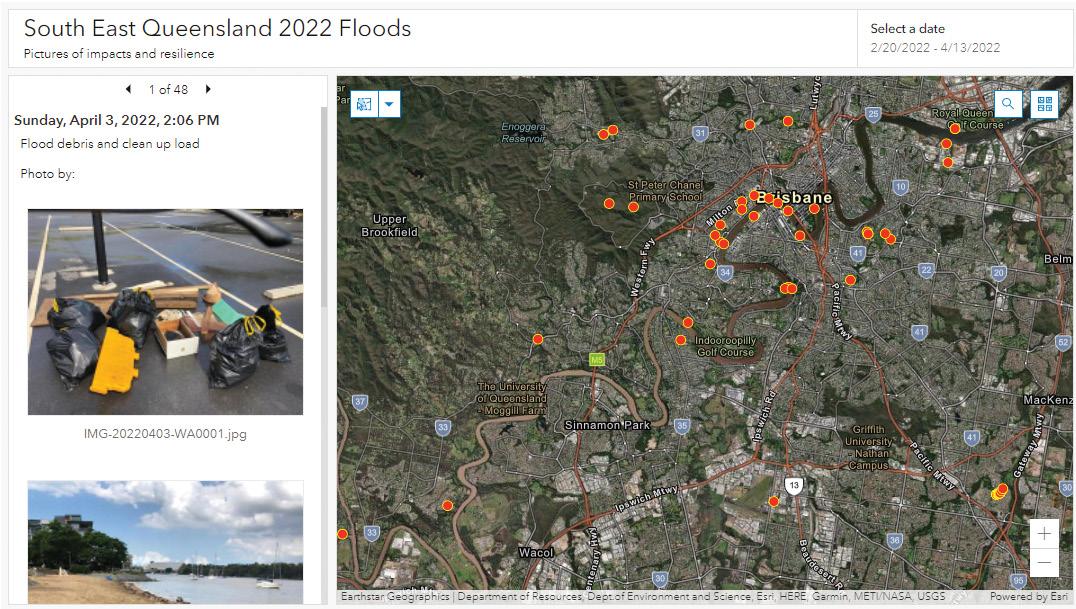
UTILITY • AUGUST 2022 WWW.UTILITYMAGAZINE.COM.AU 54
STORMWATER
FLOOD IMPACT TOOL

region, rather than the current reactive system of activating disaster funding after the fact.
Healthy Land & Water said that ensuring Queensland remains disaster ready and improving climate change resilience will require large-scale leadership and collaboration.
CEO of Healthy Land & Water, Julie McLellan, said, “To create disaster resilient regions, we must have proactive investment in on-ground projects that increase resilience, reduce flood risk and enhance waterways and landscapes, rather than governments simply pouring millions into clean up and recovery after the event.
“Healthy ecosystems can help boost the resilience of our communities and support our region’s ability to adapt to a changing climate. There is a growing body of evidence for nature-based solutions for climate change mitigation and adaptation.
“We know that active and targeted investment in flood preparedness could greatly increase resilience and reduce the impact of future extreme events.”
COST EFFECTIVE STRATEGIES
Healthy Land & Water estimates that investing in measures that reduce flood risk by building ecosystem resilience is three to five times more cost effective than trying to repair damage and impact after an extreme flood event, like South East Queensland’s February floods.
“We have 20 years of data from our monitoring program for the region and evidence from the many thousands of projects we’ve deployed which are giving us clear sign-posts of what needs to be done to make our region more resilient to extreme events,” Ms McLellan said.
“The missing piece is the large-scale proactive investment to make it happen. This needs a complete turnaround in thinking - and that’s going to be a hard conversation because our governmental systems are not set up that way currently - but the potential benefit for the region makes it essential to achieve, and the sooner the better.”
Channelling investment into resilience is not just an economically sound approach, it will also have untold positive social, environmental and cultural benefits. The learnings can be applied nationally and globally.
The flood impact tool can be accessed here: https://survey123.arcgis.com/share/ cb27c4ce9b6545b7ab287b6ad59726c3
For more information, visit https://hlw.org.au/.
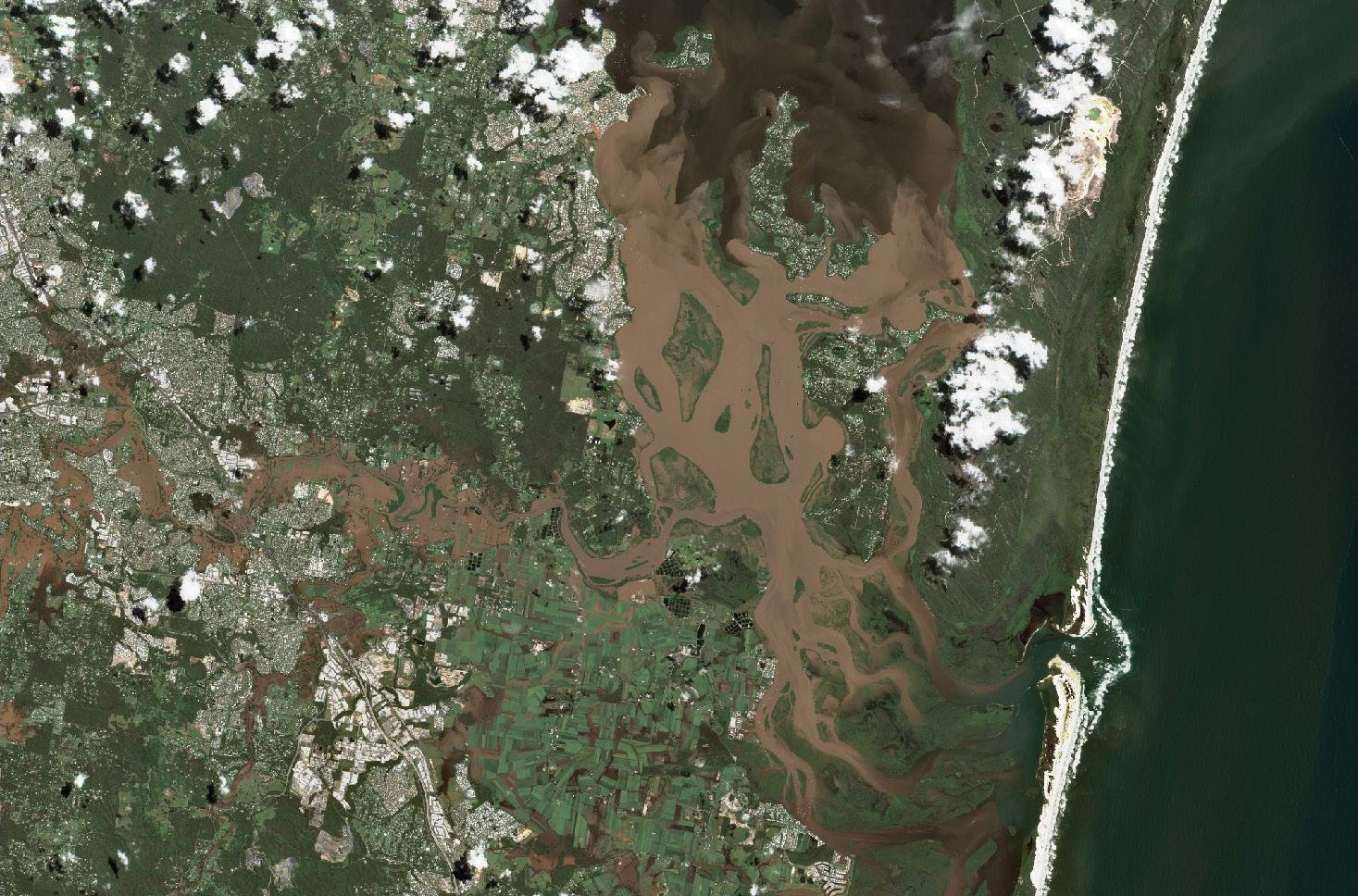
UTILITY • AUGUST 2022 WWW.UTILITYMAGAZINE.COM.AU 55 STORMWATER

AFTER THE STORM: what the floods have taught us
There is no such thing as a one-size-fits-all solution to the flooding crisis experienced yet again in Australia. But there is a common approach that can help mitigate risk and prepare for the future.
Conversations following recent flood events have been about how stormwater infrastructure can cope with the levels of water that parts of Byron Bay, Lismore, Brisbane and Sydney experienced.
John Weaver, Contracts Manager at leading pipeline infrastructure company, Interflow, said there is no single solution for these issues, and it’s a mistake to assume all areas have the same problems and should be taking the same approach.
He said it depends on local conditions and challenges such as the age of the area, population growth and ground type.
STORMWATER MANAGEMENT IN THE FUTURE
Mr Weaver said the secret to success is actually one that can be shared between water managers everywhere – using recent events to create greater awareness around stormwater infrastructure and the condition of underground assets.
Success also involves the utilisation of modelling to plan future developments of water infrastructure, residential and commercial buildings.
Mr Weaver said we should look to New Zealand for a good example of preparation for the effects of climate change on water infrastructure, as it is doing a lot of modelling and making sure that future land developments or growth corridors fit into what’s predicted to happen in the future.
PRACTICAL SOLUTIONS FOR CURRENT INFRASTRUCTURE
Outside of emptying dams and preparing communities, there is little that can be done in the way of an emergency response to such dramatic flood events.
Mr Weaver said the focus should instead be on developing greater awareness around the current state of existing infrastructure and putting in place management plans that extend its useful life and improve performance.

“In Australia, our focus has been on water security, on getting ready for the next drought. It’s correct to focus on water security, but at the same time, increasingly regular and extreme rainfall events also deserve attention, as the recent floods proved,” Mr Weaver said.
“There are two sides to innovative and successful asset management, one is building new assets and the other is deciding what to do with existing assets,” Mr Weaver said.
“For example, a major authority that we work with is about to embark on a huge renewal program. We’re working with them and other contractors to come up with options to renew their assets without increasing the chances of flooding.”
Gradually, all stormwater assets are deteriorating, but if water managers constantly monitor those assets they will know exactly when they require maintenance.
“The most powerful insight a water manager can have is the real-time, current condition of their infrastructure,” Mr Weaver said.
Such insight means custom solutions can be developed well in advance of them becoming catastrophic, such as Interflow’s bespoke renewal of the stormwater drainage culvert running beneath the bustling Brisbane Corso.
Interflow’s unique structural relining of the culvert, which was exposed to the Brisbane River’s rising tides, meant costly cofferdam construction could be avoided whilst all structural requirements were met.
For more information and advice from Australia and New Zealand’s leading provider of pipeline infrastructure, please visit www.interflow.com.au.
UTILITY • AUGUST 2022 WWW.UTILITYMAGAZINE.COM.AU
56
STORMWATER | Sponsored editorial









CHOOSING THE RIGHT CHECK VALVE FOR YOUR WATER NEEDS
In late 2021, a Brisbanebased utilities company approached Fluid Control Sales and Installations for a check valve solution on a sewer overflow structure they were reconditioning for the local council.
The company’s requirements were for a check valve that could be mounted on the outside of a 30” reinforced concrete pipe and fit within the space of a precast pipe culvert. It also needed to work reliably in an outlet with mud and mangroves, have a low opening pressure to compensate for the lack of gradient and would need no maintenance after installation.
After investigating solutions from various manufacturers, Fluid Control decided on a 30” Proco ProFlex™ Style 731 low-slope duckbill check valve made from a Neoprene elastomer with 316SS retaining clamps.
A duckbill check valve was chosen over an in-line or flap gate valve for its inherent ability to self-clean and discharge in an environment with tidal muds and mangroves. If the lower bill area on a duckbill check valve is blocked with mud or sand, the top half of the valve may still open and discharge the upstream water.
As this upstream flowing water continues to drain, it will erode the mud and sand that sits on the downstream side of the valve, clearing away the restriction and allowing the valve to return to function at full capacity.
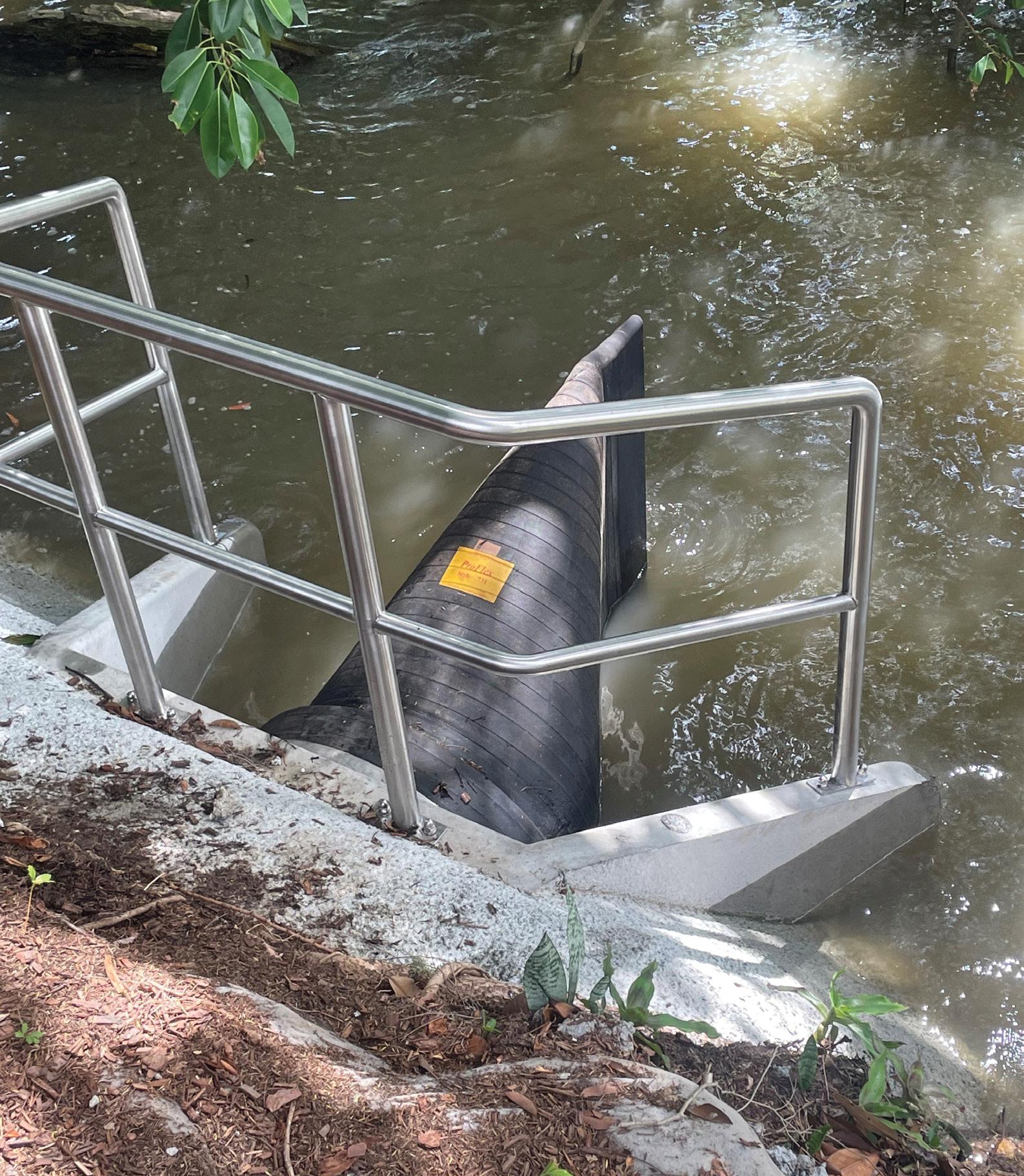
The design of the low-slope duckbill means that any standing water inside the valve can drain away, preventing mosquito or vermin growth. The base of the valve would not contact the bottom area of the pipe culvert, which would inhibit the ability of the valve to seal shut on pressure reversal.
Fluid Control Sales and Installations worked around the Christmas and New Year shutdowns to supply this
30” Proco check valve on time for installation in early 2022, just before the Brisbane floods.
The experience Proco Products has with the production of elastomer materials means that the duckbill check valve has a design life of 35-50 years and is fitted with a barnacle and algae resistant coating that will not degrade with UV exposure.
UTILITY • AUGUST 2022 WWW.UTILITYMAGAZINE.COM.AU 58
STORMWATER | Sponsored editorial
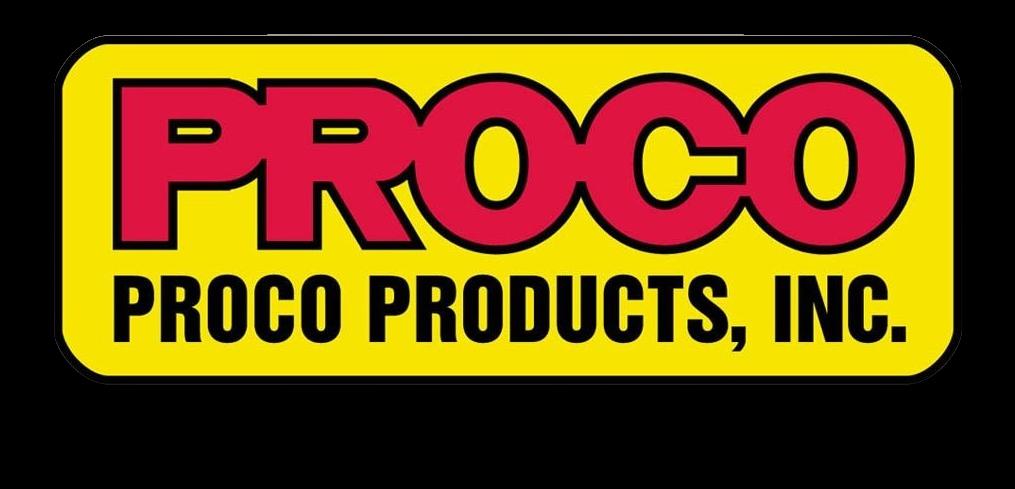



Represented Locally by: Brisbane ~ Perth ~ Melbourne ~ Sydney ~ Adelaide The ProFlex™ Patented Style 711/731 Check Valves Eliminate Standing Water
in
and
Advantages of the Low-Slope Check Valve Design: An excellent choice for manholes and outfall installation
sealing from rubbish and small solids
Slope-Bottom design ensures 100% drainage Installs in flat outfall designs Available
both flanged
slip-on design Unique
Ensures
Balancing current needs
WITH FUTURE NETWORK DEMANDS
by Mikayla Bridge, Journalist, Utility Magazine

During his presentation at the 2022 Critical Infrastructure Summit, Joshua Thomas, Manager Asset Management Framework at Essential Energy, explored the utility’s asset management capabilities and network asset class strategies.
ASSET MANAGEMENT
60
Mr Thomas has more than eleven years of experience across the asset management landscape in sectors such as defence, mining, education and utilities, and has worked at Essential Energy for over four years.
Essential Energy is a regional electricity distributor that owns, maintains and operates the distribution networks through urban and rural New South Wales, operating across 95 per cent of the state. The utility recently achieved its three year accreditation certification for ISO 55001 for its asset management system.
Due to varying environmental conditions, Essential Energy has had to develop unique approaches and asset management systems to meet customer needs and suit external environments.
Mr Thomas explored four case studies that demonstrate how Essential Energy is tackling these issues and optimising asset management, through a range of risk-based management strategies, value frameworks, investment strategies, inspection programs, condition identification processes, and field resourcing.
THE FUTURE NETWORK
With the impact of climate change rapidly shifting Australia’s environments, networks and customers are requiring customised approaches for their asset management. This leads to the future network.
“Future network is really trying to look at the future and the ways customers are actually using and generating their own electricity now,” Mr Thomas said.
“We need to ensure that our network is built and established together to be able to meet those future network demands.”
Mr Thomas outlined Essential Energy’s four corporate objectives when it comes to meeting future network demands:
1. Strengthen the core and enable the network
2. Drive connections and load
3. Facilitate electric vehicle adoption
4. Enable smart communities and new customer solutions
“The last three [objectives] really start to look at the future and the complexities, especially one standout being facilitating an electric vehicle adoption, which is quite a large challenge for us as an organisation,” Mr Thomas said.
Mr Thomas said that Essential Energy has gone through a large transformational change over the last few years. New asset management systems have been developed to ensure customer needs are being met and different functions work together seamlessly.
“The teams across Essential Energy work quite closely to ensure that we're not missing any value as we go through and implement new processes, practices and software products to really manage our data.”
Two of these new systems, rolled out in parallel, are Essential Energy’s ERP and EAM systems.
“Even just rolling out one of those is quite a large change, but at Essential Energy, we've been doing them together.
“It has been quite challenging, quite exciting though to be a part of. Out of all this, there's been lots of great lessons
learned, but also lots of innovative things that we've been able to achieve as an organisation. Ultimately, that benefits the customers, which is really what we are here to do,” Mr Thomas said.
Mr Thomas highlighted a number of key case studies to demonstrate the front end of Essential Energy’s new asset management systems. He presented four case studies which go through Essential Energy’s framework of developing new asset management strategies, from risk-based decision-making to end-goal technology.
ASSET CLASS STRATEGIES
The first case study delved into Essential Energy’s asset class strategies. Commencing three years ago, this study looked to revamp how the company developed strategies for its network assets.
“Ultimately, what we embarked on was developing risk based asset management strategies to inform future things that we need to do on our network and our assets,” Mr Thomas said.
“We based our process off what is known as the SALVO process.”
The SALVO process, undertaken in the UK, looks to standardise the approach of developing risk based asset management decisions or strategies across the utility sector.
“We started with that as our framework. We then applied a lot of risk-based decision making steps.
“We undertook some detailed consequences of failure modelling, probability of failure modelling, and turned that into monetized risk models. We recognised pretty early on that this was going to be a very iterative approach.
“We had to then go and do pole top models, and then take a step back and join the models together. It was very iterative, very engaging across the business, but it really helped us to understand a baseline risk across all of our assets, and then the network as a whole.”
Mr Thomas presented a data sheet that represented a number of scenarios the company had considered over a 20 year period that looked at Essential Energy’s three core systems: overhead network, underground network, and substation network.
The point of this accumulated data was to deduce a monetised risk. The company then broke that risk up into different regions across New South Wales.
“This started to enable us to make much more granular decisions on where we should be potentially investing in the future. It's really quite exciting. We're moving to a much more predictive risk-based decision-making approach, rather than that reactive approach that we've seen in the past across the utility sector,” Mr Thomas said.
He said this hasn’t come without its challenges, estimating that approximately 70-80 per cent of the company’s time and effort was spent cleansing, validating and calibrating data.
“The next challenge, as we are rolling out our enterprise asset management system, is to then integrate what we’ve come up with over the last three years into our EAM system.”
UTILITY • AUGUST 2022 WWW.UTILITYMAGAZINE.COM.AU 61
ASSET MANAGEMENT
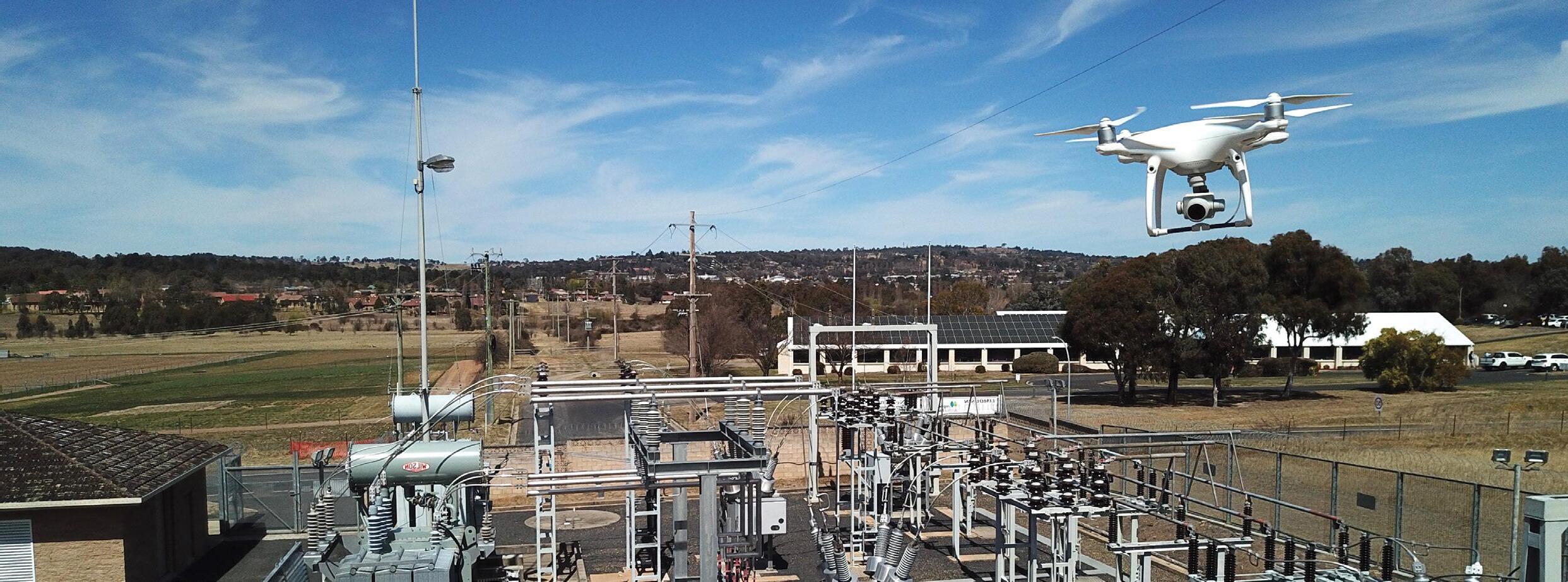
INVESTMENT OPTIMISATION
Mr Thomas’ second case study looked at Essential Energy’s investment optimisation. This was the company’s next step towards developing a new asset management system, after developing asset strategies.
“This is using a software product from a company called Copperleaf, which looks to optimise the investments that we've come up with or identified through the strategy process,” Mr Thomas said.
“Within the product itself is embedded what we call our value framework.”
Mr Thomas said Essential Energy is refreshing its current value framework, which the company used for the past four years.
“It's something that continually improves as we gain a better understanding and knowledge of the risk and customer's willingness to pay for certain levels of performance. The tool looks to enable that replicable consistent approach to applying value to our scenarios or options that we would like to invest on the network.”
Mr Thomas said the process helps the company narrow their focus in terms of projects and options, to ensure that every dollar counts.
RISK VALUE WORK
Risk value work involves applying a risk-based approach to work that has previously been identified through inspection programs and has returned to the system.
“It’s looking to really create a consistent approach to how we value the work coming through the pipeline, rather than a subjective approach that we have seen in the past. When an asset inspector inspects an asset on the network, it’s a very subjective approach,” Mr Thomas said.
“They’re identifying a condition, and it's really up to their personal experience, knowledge and understanding of that condition and the impact of that condition as to how they might value it.”
This largely affects the end result that is packaged and pushed through for completion in the field.
“This approach is being embedded within both our strategy space, but also within our EAM solution space, so that when we have our EAM up and running and works coming back into the system, this will be an embedded process within the system.”
Mr Thomas said that, though this is exciting, it also comes with its own set of challenges, particularly involving field resourcing.
“[These challenges] opened up a whole new world of how we can be innovative in our approaches, especially taking in the expert knowledge and understanding from our field crews into the front end of our decision making,” Mr Thomas said.
DIGITAL ASSET MANAGEMENT
The fourth case study looked at Essential Energy’s efforts to develop and create its digital twin through digital asset management.
“[The digital twin] enabled us as an organisation to apply a lot of things that have been previously in standards, policies and procedures onto that digital model of the network,” Mr Thomas said.
“This program, or digital twin, is enabling us to make more informed decisions, especially within the design teams and the planning teams. Should we be using the same material when we go and replace this asset? If this bit of equipment fails, what's the impact to the surrounding areas that it's operating in? Lots of things like that.”
Mr Thomas said there were ongoing discussions around digital twins and what they can provide for Essential Energy’s future asset management.
MOVING FORWARD
Essential Energy has recently implemented a range of transformational business changes across the organisation. This includes the company’s certification to ISO, which it achieved in December 2021. The certification, as well as other achievements, affect the investments and decisions around the company’s network and assets.
“[The ISO certification] was quite an exciting recognition of how far we have come as an organisation,” Mr Thomas said.
“Seeing all these things on one page is really just testament to the great work the organisation is doing in really trying to take leaps forward in how we make decisions on the network and our assets for the benefit of our customers.”
Moving forward, Mr Thomas said Essential Energy plans to become more agile to better cement the network’s resiliency in the face of climate change.
UTILITY • AUGUST 2022 WWW.UTILITYMAGAZINE.COM.AU 62
ASSET MANAGEMENT Register for free to watch Joshua Thomas’ presentation at the Critical Infrastructure Summit on demand by visiting www.critical-infrastructure.com.au.
WHY SECURITY SEAL NUMBERING MATTERS
To ensure the security of your company’s seal, Harcor has developed a custom seal numbering system that can relieve any concerns of your seal’s compliance and authenticity.
Being Australia’s first dedicated security seal supplier with the unique capacity of local seal printing has provided Harcor with insights into the importance of seal number management.
If an issue occurs, being able to prove that a seal’s number was issued only to your company, is unique, and cannot be easily procured again, is vital.
How can you determine if your supplier can produce documentation to assist you? The reason for Harcor’s leadership in this area is the Exact and Track system, developed for this specific application.
It was crucial that Harcor establish a seal numbering system that can demonstrate its assurance to conformity and regulatory requirements. That is why the developer's ISO certification was a prerequisite.
Harcor's custom serial management solution was developed in conjunction with Exact Software. The Exact Software management system conforms to NEN-EN-ISO

9001:2015. The NEN-EN-ISO 9001:2015 certificate specifically includes custom solutions in the scope.
Harcor uses the system to verify that the seal’s number is unique and has been supplied to its customer. In addition, the current NEN-EN-ISO 9001:2015 certificate can be supplied.
If you are purchasing security seals, the unique number aspect should not be overlooked. Having this professionally managed, is the reason that Harcor is the oldest and most relied upon security seal supplier in Australia. For
Meter security seals


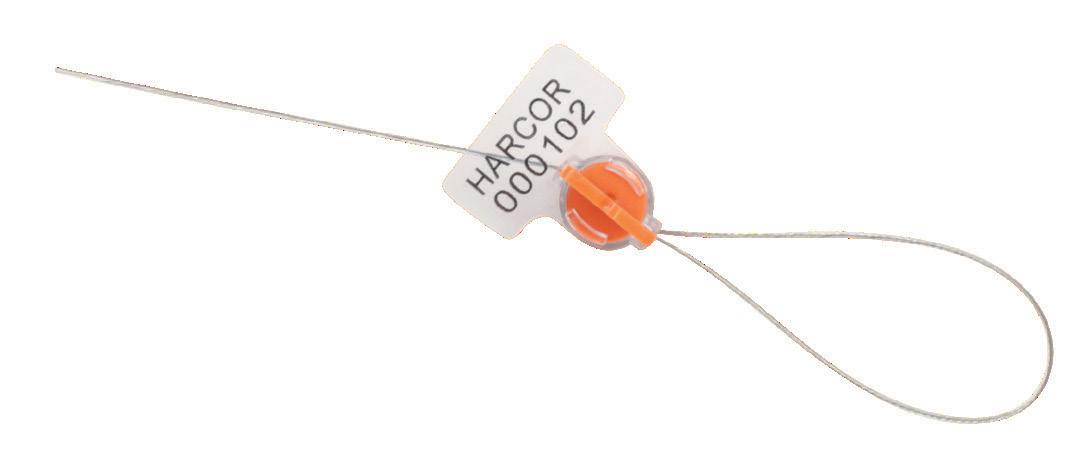



WWW.UTILITYMAGAZINE.COM.AU 63 MASTER SECURIT LICENCE No. 407319937 sales@harcor.com.au www.harcor.com.au
Trackable Serial Numbering Expose Unauthorised Access Sponsored editorial | ASSET MANAGEMENT
more information,
visit harcor.com.au or email sales@harcor.com.au
USING MACHINE LEARNING FOR BUSHFIRE PREVENTION IN AUSTRALIA
Machine learning approaches are proactively mitigating the risk of bushfires caused by powerlines, ensuring the safe and regular supply of power to business and communities.
Altavec has been the trusted partner of Australian utilities for more than 30 years, delivering excellence in geospatial services via advanced geoanalytics. With a technology platform to empower bestpractice asset management, complex data is simplified to provide informed and actionable insights.
Previously known as Geomatic, the new brand name Altavec reflects the provenance of past AusNet ownership and embraces the new ownership by Tech Mahindra.
Victorian-based energy network operator AusNet chooses to partner with Altavec to mitigate bushfire risk through proactive vegetation management. Helping to manage 54,000km of AusNet powerlines across the state of Victoria, Altavec uses AWS Machine Learning on the Amazon SageMaker platform to improve and scale its vegetation classification and analysis process.
Since 2009, Altavec has been capturing light detection and ranging (LiDAR) data – a remote-sensor method also known as laser or 3D scanning. This feature-rich data is used to create a 3D model of the entire AusNet network, helping to identify vegetation growth that needs to be trimmed for bushfire safety.
Automating the process of LiDAR classification has been an area of development undertaken by Altavec over the past 12 months, to deliver scale, speed, and accuracy improvements.

AUTOMATING LIDAR DATA CLASSIFICATION
Partnering with the Amazon Machine Learning Solution Labs team, Altavec and AWS used Amazon SageMaker to build deep learning models to automate the classification of the LiDAR data in five specific vegetation management categories. This resulted in 80.53 per cent accuracy of classifying data across these categories, saving Altavec customer AusNet, an estimated $500,000 in annual labour costs.
The highly sophisticated innovative solution developed by the joint Altavec and AWS delivery team significantly reduces the hours spent manually correcting data points by up to 80 per cent, allowing vegetation classification and analysis outcomes to be achieved faster and at a much greater scale.
Nathanael Weldon, Machine Learning Specialist at Altavec, presented these recent machine learning advancements at the AWS Summit Online Australia and New Zealand in May 2022, with
the session ranked in the top two attended by data scientists. Altavec now welcomes the invitation to present at Amazon’s Re-invent conference later this year in Las Vegas.
Already supporting power companies Ausgrid, Horizon Power and others across Australia, Altavec is preparing to expand its solutions across APAC and the world. It is working with energy providers in New Zealand, Europe and the US to provide innovative solutions that keep networks compliant and communities safe in an ever-changing operating environment.
Altavec provides end-to-end services for asset assessment including capture of LiDAR and imagery, identification of defects, field management systems including auditing and compliance, digital twins, and locational data services. All with the aim of keeping critical infrastructure, customers, and communities safe. Altavec is delivering the digital future to utilities now.
ASSET MANAGEMENT | Sponsored editorial UTILITY • AUGUST 2022 WWW.UTILITYMAGAZINE.COM.AU 64
For more information, please visit www.altavec.com or contact Andrea Powley, Head of Sales at Altavec on 0427 166 551 or solutions@altavec.com.


RENEWABLE ENERGY INFRASTRUCTURE
– AN OPPORTUNITY TO DRIVE BUSINESS TRANSFORMATION?
As the world looks to reduce its reliance on fossil fuels and move towards clean energy sources, new energy networks are being built to support this transition. Geospatial systems can play a vital role in the planning and construction of these new networks, providing the locational intelligence needed to ensure their smooth operation.
The Paris Agreement, signed by nearly 200 nations in 2016, was a landmark moment in the fight against climate change. The agreement committed signatories to reducing their carbon emissions in an effort to prevent global temperatures from rising more than two degrees Celsius above pre-industrial levels.
Since then, we have seen a number of countries make great strides in implementing clean energy infrastructure and electric vehicles as part of their commitment to the Paris Agreement. Solar energy has become one of the fastest-growing industries in the world, with China and the US leading the way in terms of installed capacity. Electric vehicles are also on the rise, with sales doubling in 2021 to a new record of 6.6 million.
There has been a significant increase in investment in renewable energy globally in recent years. This is in part due to the Paris Agreement and the need to meet emissions targets, but also because renewable energy is becoming increasingly cost-effective.
In the UK, the government has invested £2.5 billion in clean energy, with companies such as BP pledging to invest up to £18 billion in the UK energy system by 2030. This is a huge commitment from both the public and private sectors, and shows that renewable energy is seen as a viable option for powering the country.
Australia has traditionally been committed to coal-powered electricity stations, however, over 15 per cent of the country's electricity now comes from renewable sources. This is expected to increase in the future as legislation drives more investment in this sector.
Energy utilities face the challenge of maintaining current network assets, whilst undertaking significant planning and investment to meet the emerging demand for clean energy infrastructure.
With the new network planning and build, there is now an opportunity to deploy best practices for future network asset management with the geospatial information system (GIS)
becoming the single source of network location intelligence. This will help improve decision-making around network planning, operations and maintenance. Ultimately, it will also enable more effective and efficient use of resources, leading to improved service delivery for energy customers.
As AI continues to develop, it will help utility companies manage their network infrastructure using predictive analytics to identify potential network problems before they occur, automatically route repair crews to the location of outages, and will help with optimal scheduling of maintenance and upgrades. Virtual models of infrastructure, use of digital twins, IoT and smart metering data, will simulate different scenarios and test solutions for optimal outcomes.
As geospatial data becomes more accurate and widely available, it will play an increasingly important role in business applications and processes. This includes network planning and engineering, network asset management, field services and operations, safety and compliance, and customer service with real-time communications.
By integrating geospatial data into other systems, businesses will be able to improve collaboration, make better decisions, and support digital transformation.
It will then make sense to apply this best-practice use of geospatial data to legacy network assets.
Industry experts predict geospatial data will become a critical part of business operations in the future. Those who adopt best-practice GIS systems now will be wellpositioned to take advantage of the opportunities that next generation network asset management and digital transformation brings.
In conclusion, with Deloitte’s Global Industry Survey 4.0 showing 95 per cent of energy leaders believing digital transformation must be a top priority, the demand for new clean energy infrastructure is an ideal opportunity to fund and bring forward those initiatives.
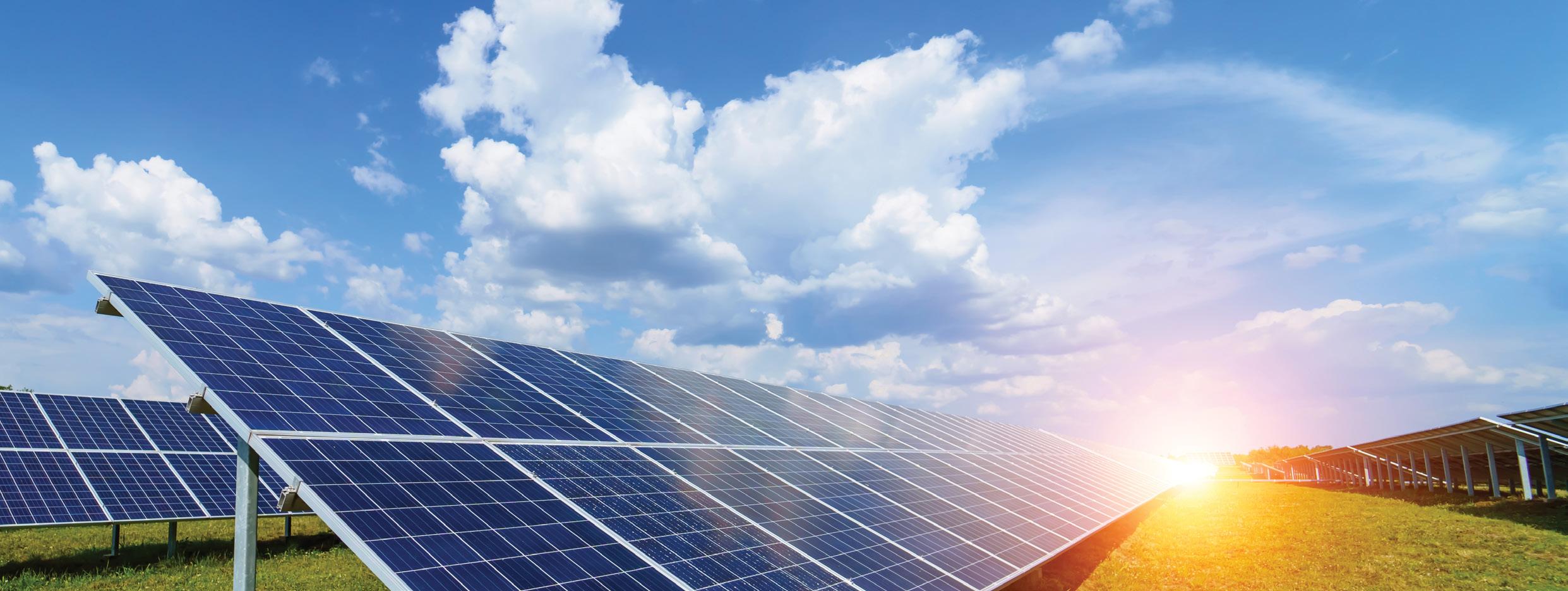
ASSET MANAGEMENT
66

WE DO SPATIAL I.T. SOLUTIONS. WE DO CONFLATION SOLUTIONS.

CELEBRATING OVER 25 YEARS IN THE GIS SECTOR


we-do-IT are a leading technology partner in spatial systems and data enablement. We help utilities harness the power of location intelligence.
MELBOURNE • BRISBANE • AUCKLAND • DENVER • LONDON • HAMBURG • HYDERABAD • SINGAPORE CONTACT US NOW TO DISCUSS YOUR NEXT GIS PROJECT. +61 3 9098 8617 INFO@WE-DO-IT.COM WE DO GIS CONSULTING. WE DO GIS DATA ENGINEERING.
HOW DIGITISATION IS PREPARING UTILITIES FOR THE FUTURE
By Stephanie Nestor, Journalist, Utility magazine
At Digital Utilities 2022, three utility leaders from the water and energy sectors spoke about digitisation and how planning ahead will be instrumental to implementing new technologies and overcoming current network challenges.
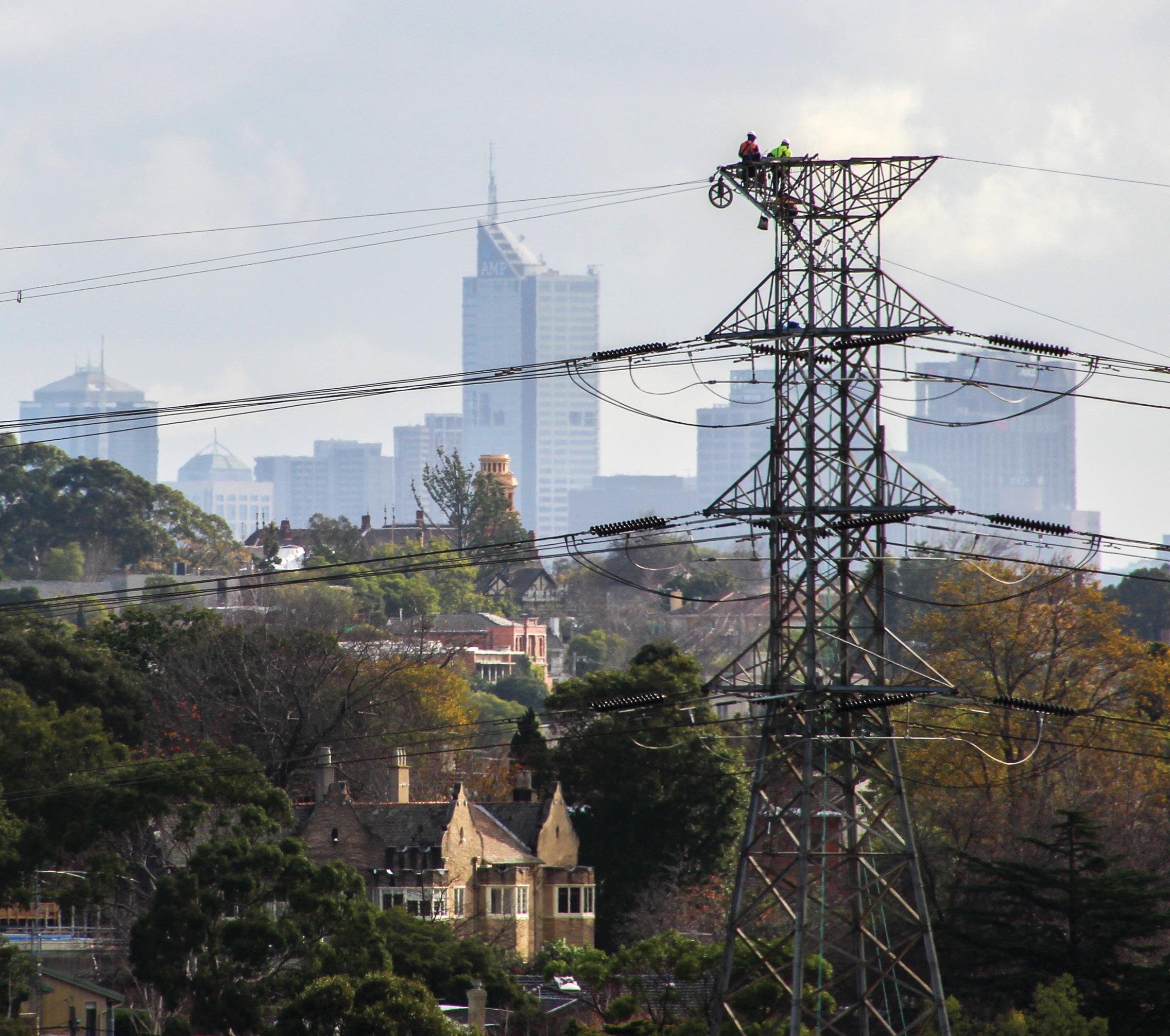
GRIDS 68
SMART
The digital transformation of utilities has seen the energy and water sectors incorporate new technologies into their operations, but with more advances and changes in the future, this transition will require more than just innovation.
The panel Enhancing grids for a smart, connected utility future discussed this in detail with featured panellists Shaun Nesbitt, Chief Digital Information Officer, Urban Utilities; Marie Jordan, Executive General Manager of Networks, Transgrid; and Ash Vesali, Director Commercialisation, Iota Services.
CHALLENGES FACING THE ENERGY AND WATER SECTORS
Australia’s energy and water sectors have both been impacted by recent changes in policy and environmental issues, with the three panellists agreeing that providing a sustainable future was the top priority.
Ms Jordan said the biggest challenge for the energy sector is moving from fossil fuel power to a renewables-based sector.
“Our biggest challenge, actually for the whole of Australia, is this transition that we're making from coal-fired, gas-fired, with a small amount of renewables, to really having renewables lead the portfolio of energy for the whole nation in the years to come,” Ms Jordan said.
Key planning is needed to ensure Australia’s transmission system can handle renewables.
For the water sector, Mr Nesbitt said environmental concerns, such as
climate change and unprecedented weather events, will make it harder to provide reliable and secure water to much of the country.
“It’s become obvious that we've got to do more with what we've already got, which is somewhat challenging.”
“Overlay that with global warming and our inland regions are going to get hotter. Severe heat is going to get more extreme, and the frequency and duration of severe weather events are going to increase, as demonstrated by the recent floods,” Mr Nesbitt said.
For Mr Vesali, one of the challenges facing the water sector is that it has been reluctant to share data which would otherwise ensure improved connection and consistency across organisations.
“Most of the infrastructure is interconnected more and more by the internet these days, and we are producing a lot more data,” Mr Vesali said.
“But, one challenge we are seeing is, how do we use that data and do we have the right data governance across the organisation?”
ALLEVIATING GRID PRESSURE
When speaking about the challenges facing the energy sector, Ms Jordan said that looking forward and investing in new control room technologies will be key for future development.
She said Transgrid is currently attempting to model if its network can take on 100 per cent renewable energy by 2025, even if the Australian energy system isn’t powered by 100 per cent renewables, there are times during
the day where for an hour or even minutes, the system could be 100 per cent renewable.
“If we look at the forecast coming out of the Australian Energy Market Operator (AEMO), it's going to be there. There will be points in the day, most likely at minimum demand, that we can supply New South Wales with 100 per cent renewables,” Ms Jordan said.
Ms Jordan said projects such as grid-forming batteries, synchronous condensers and hydro power would be key to ensuring system security.
INTRODUCING NEW TECHNOLOGIES
In the energy sector, implementing new technologies is all about having enough information to make informed and instantaneous decisions.
“If you look at the technology and where you're headed, operating our power system, at the centre and core of that is not only making it reliable, but making it predictable and safe,” Ms Jordan said.
These technologies, such as databases, security systems, and digital 3D modelling open up utilities to new possibilities.
At Urban Utilities, Mr Nesbitt said technologies such as IoT, robotics and virtual reality (VR) are playing key roles in the future of the water sector.
“We've got our traditional SCADA and OT technologies, which I don't think they're going to be replaced anytime soon, but I think the shift we're seeing is around IoT,” Mr Nesbitt said.

UTILITY • AUGUST 2022 WWW.UTILITYMAGAZINE.COM.AU 69
SMART GRIDS

“This concept of being able to blanket the network with sensors that provide us with, not limitless data, but as much data as you can consume.
“The game changer for us is then using that data in a secure way to start visualising and planning our networks and our assets in a way that we've never been able to do before.”
Mr Nesbitt said VR allows the community to connect more with what it is trying to achieve in delivering its services, and robotics are also having a major impact.
“Robotic process automation allows us to find ways of automating menial tasks or automating tasks that allow our people to lift into the high-order thinking, planning and strategy as well,” Mr Nesbitt said.
ROADBLOCKS TO IMPLEMENTATION
However, with these new technologies also comes challenges around bridging older and newer generations of workers, protecting data, and scalability.
“Technology plays a really critical role in helping to skill the next generation of our workforce,” Mr Nesbitt said.
“We're using technology now to allow people to interact with the built
environment in a way that's safe so that when they get to a particular environment, they've got the skills they need to complete the job.”
As more organisations use digital solutions to create databases and systems to share information, the need for standardisation and increased security to protect the data becomes more apparent.
Ms Jordan said that having come from the US just months ago, there were a lot more system technologies and protocols on real-time information sharing in control rooms, especially with the grid so interconnected and the generation so diverse.
“We do have some protocols in Australia for information sharing with AEMO, and the transmission service provider,” Ms Jordan said.
“So I think, because of the nature of electricity flows across states, what is generated in New South Wales could easily be delivered in Queensland, Victoria or South Australia, we do need to have a lot more real time control room tools to understand the stability and strength of the systems as the coal and gas fired generation retires.
“We've seen that in the greening of the grid, it will become even more
important to have real time situational awareness to manage the system.”
But for Mr Vesali, the standardisation of the industry and these technologies isn’t as straightforward as it seems.
“You cannot standardise because the technology is moving so fast, but you can standardise some elements like how we capture and govern data across different IoT devices, and how we create more resilient security posture,” Mr Vesali said.
In terms of scalability, it’s imperative that utilities are equipped to handle the implementation of new technologies if they are to see the benefits of them.
“There's no point in picking up a new technology if we don't have the right capability or we cannot scale it, as that will set us up for failure. Success in implementing technologyled intervention requires greater collaboration within the industry to achieve synergies and access to a broad pool of digital talent,” Mr Vesali said.
Ms Jordan agreed, highlighting the need for planning ahead when implementing digitisation and automation.
“I would say my prioritisation is control room situational awareness for our operators and using digital
UTILITY • AUGUST 2022 WWW.UTILITYMAGAZINE.COM.AU 70 SMART GRIDS
INDUSTRY PANEL – ENHANCING GRIDS FOR A SMART, CONNECTED UTILITY FUTURE. LEFT TO RIGHT: UTILITY EDITOR JESSICA DICKERS, ASH VESALI, SHAUN NESBITT AND MARIE JORDAN
twins – making sure that you have that capability to model variable renewable generation into the future,” Ms Jordan said.
MOVING FORWARD WITH DIGITISATION
The energy and water sectors can significantly benefit from new innovative technologies, but addressing the challenges around implementation requires a shift in mindset.
“The whole concept of digitalisation is in need of a bit of mindset shift, because if you look at it, utilities, whether it’s water or electricity, have been initially built to safeguard their assets and infrastructure, and minimise new risk,” Mr Vesali said.
“Digitisation is about increasing agility to sense opportunities and mobilise the team to respond through new innovations.
“Having the right tools and technology is all good, but we need to have that mindset for our talent to adapt and embrace digital ways of working and to utilise those technologies. This needs executive-led cultural shift across the organisation
Mr Vesali said that the second focus area should be on ensuring utilities have the right modular architecture and have modernised their cloud environment to enable effortless onboarding of new emerging solutions, as they transition in their digital journey.
Finally, Mr Vesali highlighted the importance of starting small but having big ambition in mind. He said the digitisation needs to cover the entire organisation, however we can start on our digital ways of working in a single business domain where the shift could provide high value and cost saving to showcase.
DEALING WITH CHANGING ENVIRONMENTS
As Australia and the world deals with climate change, transitioning to renewable energy, and emissions reduction efforts, there is both risk and
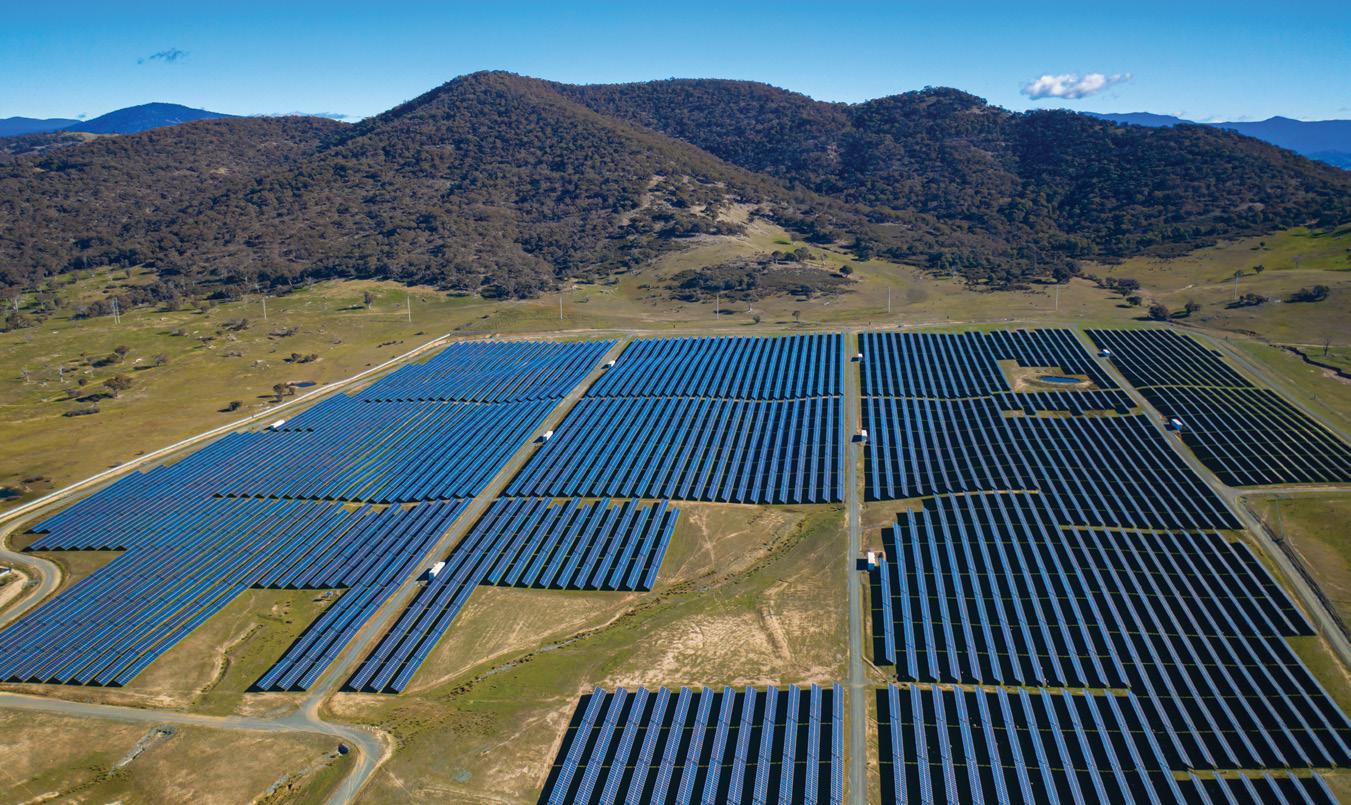
enormous opportunity for energy and water utilities.
“I think we're going to be challenged around the carbon neutral side of things,” Mr Nesbitt said.
“Sewage treatment is quite an emitter, there's a lot of methane gas and others that are bought off there.
“But at the same time, it's a great opportunity because a lot of the outputs of that treatment can become inputs into other industrial processes.
“At Urban Utilities, we’re embracing the circular economy and constantly exploring new opportunities to close the loop.”
For the energy sector, it’s not just about developing renewable energy projects, but also about setting up transmission infrastructure so all areas can benefit from the transition to net zero and emissions reductions.
“The most important thing we can do is look at things like what New South Wales is doing with renewable energy zones, bringing a variety of renewables, planned and thoughtfully into different regions, and then getting the transmission infrastructure built to meet this rapid change,” Ms Jordan said.
“We don't have the luxury of doing things in small scale little pieces, because, really, to make renewables work, you need to be able to cover a lot of geography for diversity and delivery.
“So when it's raining in one area, you've got sun in another. Snowy
Hydro spinning its turbines and then wind energy coming off the New England Coast, all of that feeds into this portfolio approach to how to deliver a reliable renewable network.”
WHAT DO FUTURE GRIDS LOOK LIKE?
With priorities for digitisation revolving around forward-thinking and embracing innovation, the panellists hope the future of utilities will be more open and information-driven.
“To be in a position to simplify the mechanics of buy, sell or exchange data across the ecosystem, that can really help us to make better decisions and reduce our physical asset investments,” Mr Vesali said.
Mr Nesbitt said data is the new asset as Urban Utilities looks to open data-sharing in its future.
“Rather than spending money on capital, we're actually using information to drive a lot of those decisions,” Mr Nesbitt said.
For energy, Ms Jordan said the sector should prioritise making good plans and delivering reliable, flexible and green energy, even if it takes longer than expected for the renewable transition.
“I know we can't do it in six to 12 months, but the next six to 12 months can set us up to be able to do it in a cost-effective way,” Ms Jordan said.
UTILITY • AUGUST 2022 WWW.UTILITYMAGAZINE.COM.AU 71
SMART GRIDS Register for free to watch the Enhancing Grids for a Smart, Connected Utility Future panel at Digital Utilities 2022 on demand by visiting www.digitalutilities.com.au.
WHO WILL DRIVE VEHICLE-TO-GRID?
by Dr
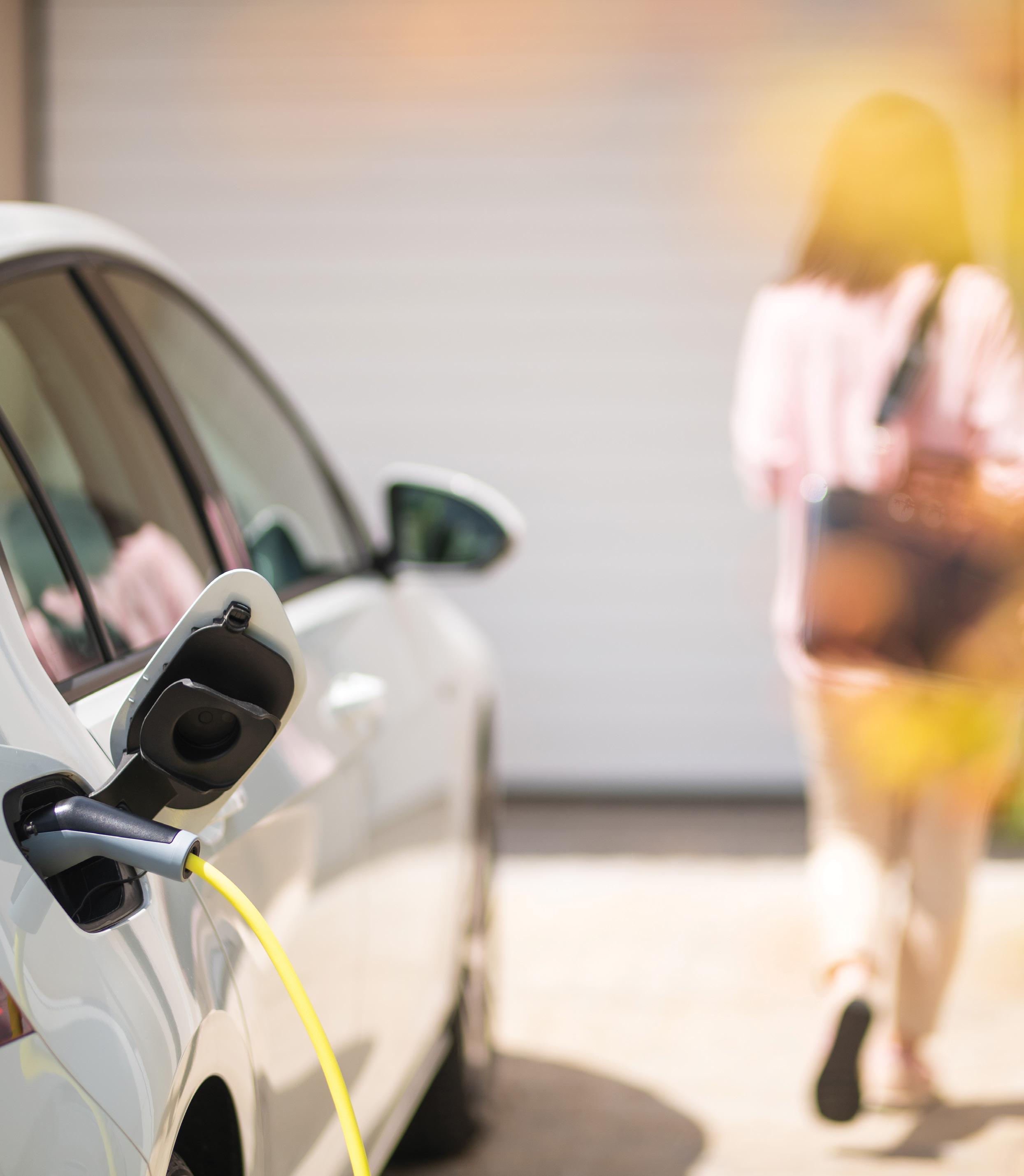
Vehicle-to-Grid technology presents a huge opportunity by making the batteries in electric vehicles available for grid services, but who will this benefit and who will drive uptake of the technology?
The energy sector is working hard to be more customer-centric, see for example the article Customers at the centre of the energy sector in the February 2022 issue of Utility magazine.
We are very supportive of this shift, but wish to raise the provocation that some innovations, such as Vehicle-to-Grid (V2G), offer primarily “grid wide” or public benefits.
Where this is the case, we believe it should be acknowledged. This enables a shift in focus from making
private financial value propositions to disinterested customers to realising system wide benefits that flow to all customers. This is particularly important where value can be realised with minimal impact to customers.
In many cases, including that of electric vehicles (EVs) and V2G, this means reasserting the grid as a common resource and establishing systems that lead customers to act as good grid citizens by default.
UTILITY • AUGUST 2022 WWW.UTILITYMAGAZINE.COM.AU 72
SMART GRIDS
Bjorn Sturmberg, Dr Kathryn Lucas-Healey and Laura Jones, Battery Storage and Grid Integration Program, Australian National University
This may be achieved using standards, incentives or connection conditions that make participation as seamless and low-impact as possible, rather than relying solely on market mechanisms where customers opt in on the promise of financial returns.
This discussion is analogous to appliance standards. Standards set a base level of performance all appliances must meet. Customers can of course still opt for higher again through purchasing decisions.
This provocation is informed by our experiences in REVS, Australia’s first fleet-scale trial of V2G technology. REVS brought together seven electricity and transport sector organisations (ActewAGL, the ACT Government, ANU, Nissan, SG Fleet, JET Charge and evoenergy) and as a result has provided practical insight across all facets of V2G. REVS received funding support from ARENA. Further details can be found on the ARENA website at arena.gov.au/projects/ realising-electric-vehicle-to-grid-services/.
VEHICLE-TO-WHAT?
Bi-directional charging technology enables vehicles to discharge as well as charge their batteries. This requires bi-directional EVs and chargers.
The technology goes by many names depending on how it’s used: “Vehicle-to-grid” when used for grid services, “Vehicle-to-home” (V2H) or alternatively, “Vehicle-to-building” when used behind the meter of a home or building, or “Vehicle-to-load” (V2L) when used as a standalone power supply.
From the customer’s point of view there is a categoric difference between V2G and other use cases. V2H and V2L directly speak to customers’ needs: energy independence, resilience, and cost reduction. V2G in contrast solves grid challenges – things customers often don’t understand or care about.
This is akin to the difference between using stationary batteries for private purposes and enrolling them into a Virtual Power Plant (VPP) to serve grid or market needs – and indeed many of our conjectures can be translated from V2G to VPPs.
FOR THE GRID
To grid managers, the risks posed by mass EV uptake and the value proposition of V2G are as clear as they are sizable.
Early analysis from the RACE for 2030 project suggests that unmanaged charging of EVs could double local peak demand by 2030, bringing with it a new wave of costly network upgrades.
The batteries in electric vehicles, on the other hand, present an enormous pool of fast, flexible energy storage distributed across the grid, just waiting to resolve peak demand issues and contribute to system security.
If all of Australia’s 19 million vehicles (including buses and trucks) were to be electrified, their batteries would be five times the capacity of the planned Snowy 2.0 scheme. This storage capacity would benefit all energy users by providing reserves that help manage unexpected disturbances as well as long periods of low wind and solar generation.
While V2G presents clear benefits to the grid, the same cannot necessarily be said for customers. From the perspective of EV owners, V2G presents a potential risk to
the longevity of their asset and its availability when needed for mobility, while the primary benefits accrue to energy users collectively.
This risk is, in practice, minimal. Many V2G use cases – such as the grid stability use case we’re developing in REVS – deliver most of their value by the batteries being on call, and only require very short use of the battery (a 7.2 kW maximum power rating of an average home charger is tiny compared to the vehicle’s engine) on rare occasions. In other cases, the V2G behaviour can be tightly controlled to keep batteries within their optimal range for mobility and battery health.
This notwithstanding, the challenge remains to develop approaches that correctly calibrate EV owners’ perception of the risks and persuade them to participate – through mandated and/or market means.
BY THE GRID?
If V2G is primarily “for the grid” then it follows that it should be made to work “by the grid”. Currently, grid standards and processes are barriers to V2G, rather than aids.
The Australian grid connection standard (AS4777), Australian Energy Market Operator’s (AEMO) specifications, and Clean Energy Council (CEC) classifications are misaligned with one another and with international norms. And distribution network connection agreements impose further restrictions.
Resolving these barriers (detailed in our REVS reports for ARENA) is a crucial first step, which is squarely the responsibility of grid actors.
Once these are resolved we must have an inclusive discussion to decide which aspects of V2G are best left as customer choices and which should be an expectation of good grid citizens and perhaps be made a requirement of grid connection. The former may be well served by tariff and VPPs offerings. The latter is better suited to standards and incentives.
A good example of an incentive is the UK’s Electric Vehicle Homecharge Scheme. Under this scheme chargers are only eligible for subsidies if they respond to energy system needs (through dynamic “smart” charging, not V2G). Australia meanwhile almost had an EV demand response standard in 2019 as part of the Greenhouse and Energy Minimum Standards (GEMS) Act. Whilst this stalled (as it was deemed outside of the act’s powers) there is no reason why an appropriate process cannot be established in the future.
THE ROAD AHEAD
Looking ahead, V2G is on the horizon as an attractive (arguably essential) feature of a clean and coupled transportenergy system.
There is however still a long road to travel, and fortunately there are still many open choices. One non-negotiable is that V2G will only be realised through alignment of the energy sector, the transport sector, and society.
Our experience to date suggests that V2G may stand to be of greatest attraction “for the grid” and that there is much to be done “by the grid” to accelerate this innovation becoming a seamless part of the EV experience.
UTILITY • AUGUST 2022 WWW.UTILITYMAGAZINE.COM.AU 73 SMART GRIDS
CRITICAL FAULT CLEARING IN CLOSED TRANSITION SWITCHING
Quick, effective closed transition switching is crucial for any site or application that relies on a backup power supply from a generator to ensure power is not lost.
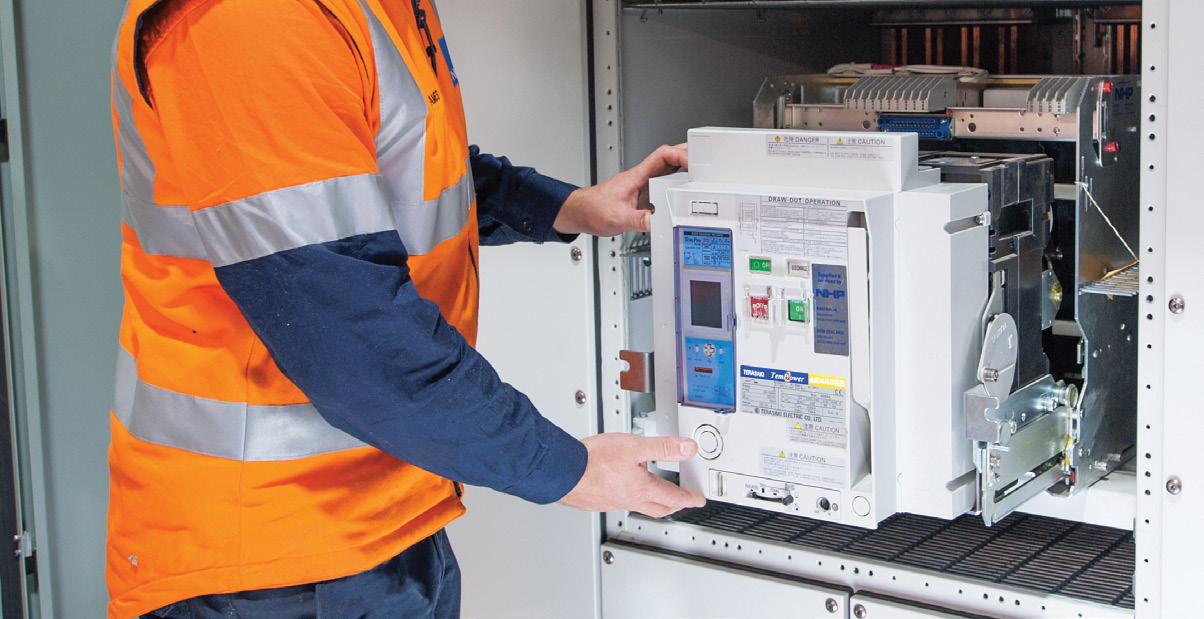
Aclosed transition transfer switch is designed to seamlessly switch between two power supplies, often using make-before-break switches, and a controller that senses if the supplies are synchronised, before allowing switching.
Closed transition switching is very common in hospitals, data centres and other critical facilities with loads sensitive to momentary power loss between two supplies, such as during periodic testing.
For any site reliant on a backup generator supply, it is mandated that frequent tests are performed to ensure the operation of that supply in an emergency event. Generators must be tested several times a year, and in the case of many hospitals, a test must be performed monthly.
Without closed transition transfer switching, during each of these test periods there is typically a short interval where power is lost.
Closed transition switching allows for testing of the emergency power system without interruption of power to critical loads, as well as maintaining continuity of power when transferring back to utility supply. Since the power to load is maintained, testing can be completed without most users even knowing it’s occurring.
CONSIDERATIONS
In most applications, the backup supply comes from a generator. When switching back to the mains supply, there is a period where both supplies are connected as part of the seamless changeover, and the generator effectively becomes a power generation source feeding into the utility mains supply.
One mode of failure of a closed transition transfer switch can be where both sources become connected permanently, leading to equipment damage on the grid, which is why strict requirements are necessary.
While specific requirements vary from state to state, any fault when both supplies are connected must be cleared quickly before any protection devices on the utility network have time to respond and cut power to a wider area of users.
On average, utility circuit protection will begin to react to a disturbance within 50-60ms, so it is critical for downstream protection to react to a fault at a much faster rate.
RAPID FAULT CLEARANCE
Thanks to Terasaki’s patented double break contact technology, TemPower 2 Air Circuit Breakers (ACBs) are proven to provide superior fault clearance times of less than 30ms (a figure applicable for all models except a 5000/6300A frame size).
This makes it the preferred option for many utilities, as it will disconnect from their network long before their protection systems can engage. This rapid fault clearance also minimises thermal and mechanical stress on busbars and reduces arc flash energy during a fault, meaning that it’s not only much safer but has a much longer service life.
TemPower 2 ACBs also have a breakthrough self-monitoring temperature system for checking the condition of the main contacts and conductive path, known as ‘3C Technology’. The status and wear of the contacts is determined by direct temperature measurement using integrated thermistors, and alarms can be set to notify of required maintenance before it becomes critical. This real time temperature data can be exported to any SCADA or BMS.
SERVICING YOUR ACB
Servicing the ACB is simple with NHP’s certified service technicians. All serviceable parts in TemPower 2 ACBs are available for inspection once the body is racked out, so the average time of repair is dramatically reduced to 15 minutes or less in some applications. For critical infrastructure, these figures are invaluable.
Terasaki TemPower 2 ACBs from NHP are a trusted essential for any critical facility sensitive to momentary power loss during scheduled testing, providing protection, performance and peace of mind for both electrical utilities and facility managers alike.
For more information, please call 1300 NHP NHP or email nhpsales@nhp.com.au.
UTILITY • AUGUST 2022 WWW.UTILITYMAGAZINE.COM.AU 74
SMART GRIDS | Sponsored editorial
Future
proof your protection system with NHP ACB retrofitting services
■ Increase system safety and reliability
■ Minimise production downtime
■ Reduce operational costs
NHP’s Services and Solutions team can customise solutions to suit specific requirements or work within your existing switchboard environment to provide a cost-effective solution, engineered according to relevant Australian standards and recognised industrial practices.
Find out more

nhp.com.au | nhpnz.co.nz
1300 NHP NHP | 0800 NHP NHP
nhpservice@nhp.com.au | sales@nhp-nz.com


LINKING THE APPLE ISLE TO AUSTRALIA'S FUTURE ELECTRICITY NETWORK
By April Shepherd, Editor, Monkey Media
Marinus translates to marine in Latin, or ‘connected to the sea’ – which is exactly how the Marinus Link project plans to bring Tasmania’s abundance of renewable energy to Australia's future electricity grid. The project’s proposed 1500MW underwater interconnector will provide the network of the future with ample storage and energy, straight from the pristine apple isle to the Latrobe Valley in Victoria.
As the National Electricity Market (NEM) begins its slow eradication of coal to be replaced by clean energy, the worries of storage, supply and possible shortages take centre stage.
One of the solutions to possible shortages is increasing storage capacity and availability of renewables; which are abundant in the island of Tasmania, known for its pristine environment and natural resources.
Marinus Link, a subsidiary of TasNetworks, is a proposed 1500MW capacity undersea and underground electricity interconnector, aiming to link Tasmania and Victoria as part of the country’s future energy grid; running from North West Tasmania to the Latrobe Valley in Victoria.
The 1500MW capacity can supply 1.5 million Australian homes with electricity at any given time, with the project aiming to unlock savings of at least 140 million tonnes of CO2 by 2050.The project features approximately 255km of undersea High Voltage Direct Current (HVDC) cable and 90km of underground HVDC cable, and will be supported by transmission network developments in the North West Tasmanian electricity network.
TIMELINE: THE PROGRESS SO FAR
The project began in 2017 with the first phase, the Feasibility and Business Case Assessment, completed in late 2019.
Three years since its inception, Marinus Link is currently progressing through the design and approvals phase, which involves cost analysis, deciding route options and undertaking surveys of the local areas.
The next step is the construction phase, which will follow a final investment decision expected in late 2024.
The top priorities of this stage include:
• Refining the route in consultation with landowners, traditional owners and communities
• Refining technical and power system design and specifications
• Completing land/sea survey works and environmental referrals
• Continuing important community and stakeholder engagement to build social licence and maximise benefits for the community
• Progressing revenue setting and pricing frameworks that ensure a fair cost allocation outcome
UTILITY • AUGUST 2022 WWW.UTILITYMAGAZINE.COM.AU 76
SMART GRIDS
The construction phase is set to last four to six years, and once operational the interconnector will contribute to Australia’s National Electricity Network for around 40 years.
Like many other infrastructure projects across Australia, COVID-19 lockdowns and associated restrictions impacted the Marinus Link project’s ability to conduct surveys and other critical works over the past two years, particularly in Victoria.
The Australian Energy Market Operator (AEMO) has acknowledged that several transmission projects experienced schedule adjustments due to COVID-19 and other factors, including supply chain issues stemming from the “long-running and accelerating global boom in infrastructure investment”.

AEMO: MARINUS LINK PROJECT A MAJOR PRIORITY
The AEMO discussed the challenges of transforming Australia's energy network in its 2022 Integrated System Plan (ISP), and found that Marinus Link is a project to be prioritised.
The 2022 ISP states that Marinus Link should be delivered as soon as possible to deliver clean energy for the national grid.
Marinus Link CEO, Bess Clark, said, “This report highlights that Marinus Link will unlock Tasmania’s incredible clean energy resources for the benefit of all Australians and play a critical role as we transition to cleaner energy at lowest cost.
“Australians from Hobart to Cairns, and right across the NEM, will be better off with Marinus Link.”
The ISP also recognises that Marinus Link will provide increased security and reliability for the national grid.
“With recent cold conditions along Australia’s east coast and other supply-chain challenges, Australian energy consumers have been faced with potential black-out conditions,” Ms Clark said.
“The construction of Marinus Link will enable the mainland to access Tasmania’s abundant renewable energy and deep
storage, ensuring that we can help keep the lights on right across the country.”
Marinus Link is expected to create approximately 2,800 direct and indirect jobs in Tasmania and Victoria during its construction and operation, and attract $7.1 billion worth of additional economic activity.
The project will support the renewable energy industry, that in turn supports jobs well beyond the interconnector’s construction phase.
The Marinus Link project aims to aid in Australia’s decarbonisation and allow for downward pressure on power prices across the NEM.
The Marinus Link interconnector will also provide ongoing jobs as it operates the power system, connects new customers, manages vegetation along the proposed route and conducts maintenance tasks that support a project of this magnitude.
COST BENEFIT ANALYSIS
Marinus Link has undergone a rigorous cost benefit analysis (CBA), taking into account multiple variables, assumptions and future scenarios.
In order to determine these costs and benefits, AEMO takes into account several principles and steps that must be undertaken as set out by the CBA guidelines published by the Australian Energy Regulator (AER).
Total customer benefits are difficult to estimate precisely, especially as energy market policy settings continue to evolve.
However, the overall robustness of the net market benefits provided by the Marinus Link to the NEM, is substantiated with the publication of the Project Marinus Project Assessment Conclusions Report (PACR), which demonstrates that, despite the continual evolution of inputs and assumptions, the Marinus Link will provide significant benefits to the NEM.
KEEPING PRICES LOW, AND ENERGY ABUNDANT
From Cairns to Hobart, the Marinus Link plans to help deliver low-cost, reliable, secure, clean energy to millions of Australians across the NEM; by unlocking Tasmania's abundant, low-cost wind resources and pumped hydro storage facilities.
Tasmania is in a unique situation where it already produces more renewable energy than is needed locally, so the Marinus Link will deliver the state’s surplus clean energy to the mainland to keep emissions down, increase grid reliability and ensure electricity affordability.
Like other interconnectors across the NEM, Marinus Link is largely about harnessing the increasing diversity of energy generation in Australia, which includes wind, solar and hydro energy sources.
Marinus Link will access the existing spare and refurbished dispatchable capacity in the Tasmanian hydro-electric system for the first stage of the link, and enable the development of long-duration pumped hydro facilities with the second stage of the link.
This will minimise market volatility, which suppresses energy price rises from more expensive solutions; reducing reliance on coal and peaking-gas alternatives.
UTILITY • AUGUST 2022 WWW.UTILITYMAGAZINE.COM.AU 77
SMART GRIDS
SMART GRIDS
WHY NOT JUST BUILD MORE BATTERIES IN VICTORIA?
Independent modelling by AEMO, CSIRO and Ernst and Young suggests the NEM will experience periods of minimal solar and wind generation. These periods typically last between 36 to 48 hours and are commonly referred to as ‘renewable droughts’, which occur at least three to four times a year.
This modelling suggests Tasmanian long duration energy storage would cost less than half the amount of equivalent battery storage technology on mainland Australia.
The reason for the lower cost comes down to the longer depth of charge and longer asset life of a pumped hydro energy storage system compared to a battery energy storage system. Cost-effective batteries are best suited for meeting the shorter duration super-peak demand (typically evening time) while long duration pumped hydro provides seasonal shifting of energy.
Batteries and the Marinus Link can work together, in unison, to create a more sustainable NEM for Australia.
In fact, the majority of future power system studies highlight the complementary nature of short and long duration storage. Both are needed to operate the power system in a cost-effective, reliable and clean manner, and both will be required as part of Australia's rapid energy transition.
Marinus Link modelling forecasts that more than 75 per cent of new storage deployed will be battery technology, while the cost of batteries will reduce by up to 70 per cent in the next decade.
This modelling also shows that it would still cost at least twice as much for batteries to deliver the same storage benefits as pumped hydro, based on a shorter technical life requiring batteries to be replaced and a shallower depth of charge.
AEMO has also confirmed that even in a situation where there is significant uptake of battery storage, as much as 10,000MW of batteries, Marinus Link is still needed to support lowest cost customer outcomes.
This is because a portfolio of up to 19,000MW of varying storage technologies will be needed to manage grid reliability, stability and affordability as the energy market transitions over the coming decades.
Batteries are important as short-term responders by facilitating 'day shifting' of energy, which is storing excess solar energy throughout the day for use at night time.
Hydro storage offers both day-shifting and longer-term seasonal-shifting of energy (the storing of excess energy for longer periods of wind and solar droughts), which means stored energy can be dispatched for days on end.
As coal-fired generators continue to retire at an accelerating pace, additional interconnection will be needed to fill the gaps. Marinus Link aims to ensure that all

78
customers across the NEM will have access to low-cost, clean and dispatchable energy to fill the gaps left by retiring fossil-fuel generators.
ENGAGING COMMUNITY PERSPECTIVES
Marinus Link is prioritising protecting the environment throughout the project, working with local communities through ongoing land surveys, regular engagement and listening to community perspectives.
The Marinus Link team invites feedback from the community, which will continue to help inform project design, construction considerations, development of environmental, cultural heritage and social and economic impact assessments.
As the original proponent of the project, TasNetworks started engaging with key stakeholders and industry about Marinus Link back in 2018, with a focus on raising awareness about the project and supporting various studies into the project's feasibility and business case.
In Victoria, Marinus Link established a Gippsland Stakeholder Liaison Group (GSLG), which provides a forum for regular face-to-face communication and engagement between the Marinus Link Project Team and key stakeholders from the Gippsland region.
Marinus Link’s ongoing work and engagement with communities across Tasmania and Victoria is a fundamental part of the project’s development.



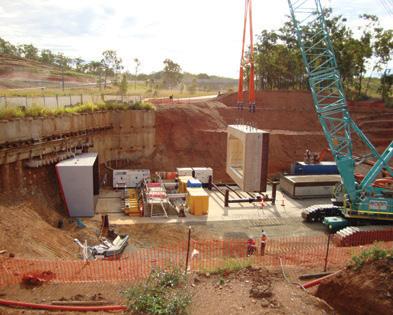
GUIDED BORING SPECIALISTS
ABOUT US
Edge Underground is a precision microtunnelling contractor that operates in Australia and the USA. With a focus on innovative technology and expertise, Edge Underground designs and enhances the performance of trenchless equipment. OUR SERVICES
• Microtunnelling
• Pipe Jacking
• Thrust Boring
• Laser Tunnel Boring
• Box Culvert Jacking
• Canopy Tubes
quotes@edgeunderground.co 8 www.edgeunderground.co ( JACKED 1300 522533
*
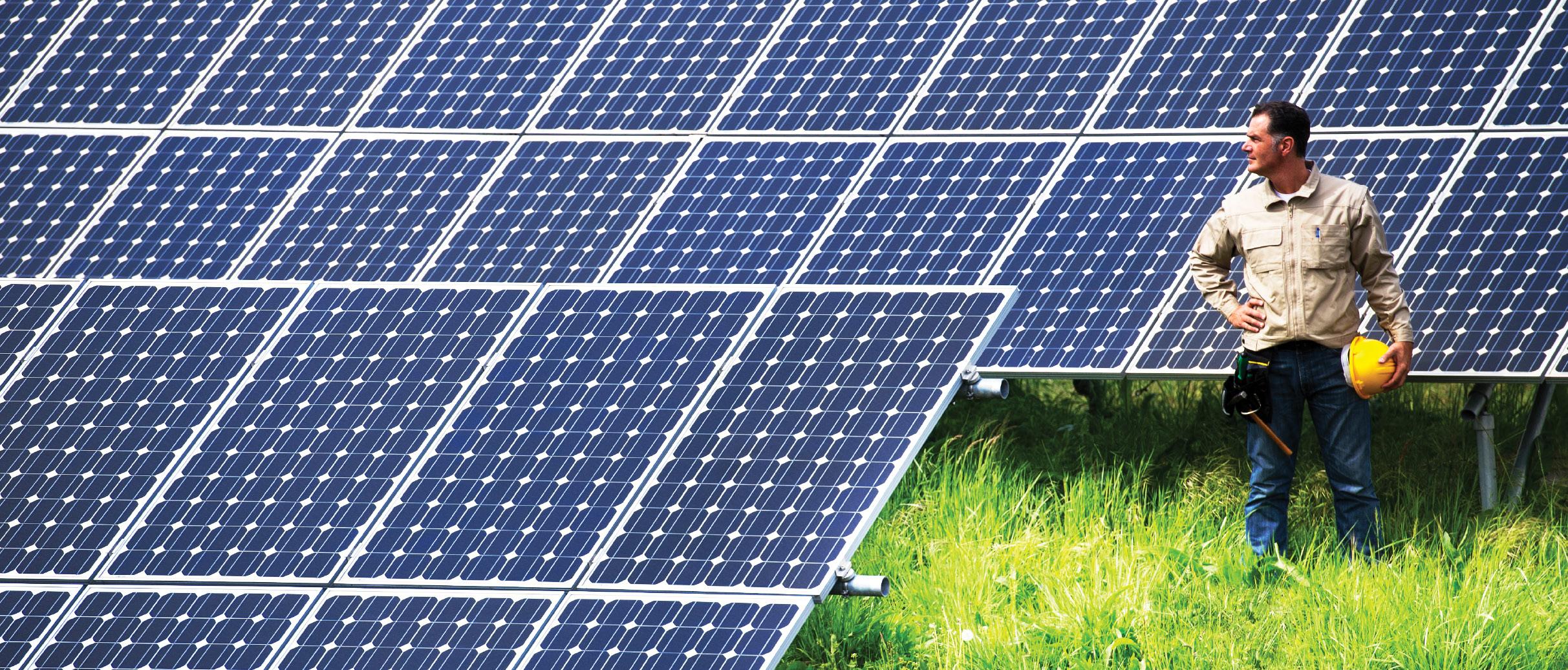
SOLVING REAL-WORLD PROBLEMS AT THE EDGE OF THE GRID
With the increase in renewable technologies such as rooftop solar and battery storage installed on the consumer’s side of the meter, the challenge now becomes how to balance demand, frequency and the inherent instability of renewable energy resources. Here, we explore how to support utilities when implementing distributed energy resources (DERs) and create better intelligence at the edge of the grid.
Smart meters are now complex devices with amazing processing power, but by only returning interval data, they’re missing the opportunity to actually solve problems at the edge of the grid.
Nick Phillips, Head of Technical Sales – APAC at Itron, a global company supporting utilities to better manage energy and water, said that’s where he sees smart grids moving. He said solving problems at the edge of a grid not only removes data processing barriers, but it solves issues quicker.
“I think frequency response is a good example because only by controlling that and having visibility will you be able to have significant penetration of renewables without having to rely on base load,” Mr Phillips said.
Mr Phillips said we’re now seeing increased interest in the impacts of climate change, which means some of the oldfashioned ways to maintain stability in the network need to be enhanced, such as changing the phase angle on inverters to be able to inject energy appropriate to the local need.
“It really is a matter of understanding how we take base load generation out and introduce more dynamics, and more importantly, control the dynamic instabilities inherent in things like wind and solar,” Mr Phillips said.
INTELLIGENCE WHERE IT’S NEEDED
When looking at how we can enable better outcomes as we move forward into five-minute settlement and the next regulatory tranche of work, Mr Phillips said a key aspect is how we can distribute data for third party providers to be able to make sense of it and create meaningful programs that engage consumers.
“Rather than extracting vast quantities of data from meters, with edge devices and DI-enabled meters within the AMI network, problems are solved at the grid-edge and only the results of calculations will be transported to the individual VPP Aggregator/Agents. With this approach, it would eliminate the complexity of ‘clearing house’ for data, but also hasten calculations in real-time. Therefore,

as opposed to trying to pull all the data out, you could apply edge intelligence and be able to deploy real-time service applications.”
For example, once a meter detects a drop in frequency, which could be a consequence of the increasing load in the home, an immediate load balancing would be triggered to rectify the imbalance. If every meter on the grid did this, you would have gone a long way to solving the problem of loading balancing for the entire fleet of meters.
“You don't need to go up to the macro level if you could actually have a DER agent on the meter and locally control the generation and load balancing system,” Mr Philips said.
CHANGING BEHAVIORS LONG-TERM
By leveraging edge intelligence, it accelerates the deployment of real-time service applications which will engage and potentially transform the behavior of the consumers. In that aspect of enhancing the digital experience of the consumer, Mr Phillips said the core factors are to address efficiency, conservation, and sustainability. Efficiency is about providing information to the consumer concisely so that they can do something to gain a short term benefit. Conservation is about fundamentally changing more long term behaviors.
“If you present information in bland numbers it can be efficient, but if you actually want to make meaningful change, you need to make sure that the consumer, even if they don't realize it, is changing their behavior to aid you,” Mr Phillips said.
“For instance, load shifting is nothing new, but if we can present it in a different way that truly engages people, then that changes long-term behavior. Sustainability is then about making sure that any behavioral change doesn't slip and we maintain enthusiasm.”
Itron, with its open, interoperable network connectivity, has the agility and flexibility to meet the needs of utilities in their journey to integrate DER into their grid.
For more information, please visit www.itron.com/apac.
UTILITY • AUGUST 2022 WWW.UTILITYMAGAZINE.COM.AU 80
GRIDS | Sponsored editorial
SMART
Solving for the aftermath. Before the aftermath.
Smart grid technology, intelligent devices and an industrial IoT network to connect it all. Not only is this the best way to prepare your grid for a storm, but it’s the best way to bounce back afterward. Reduce outage minutes, restore service efficiently and recover quickly. We can’t predict the weather. But we can be ready for it.
More intelligence. More possibilities.

Itr on.com/possibilities
© Copyright 2021 Itron. All rights reserved. Itron and the Itron logo are registered trademarks of Itron, Inc.
PROJECT SYMPHONY: WESTERN AUSTRALIA’S ENERGY FUTURE
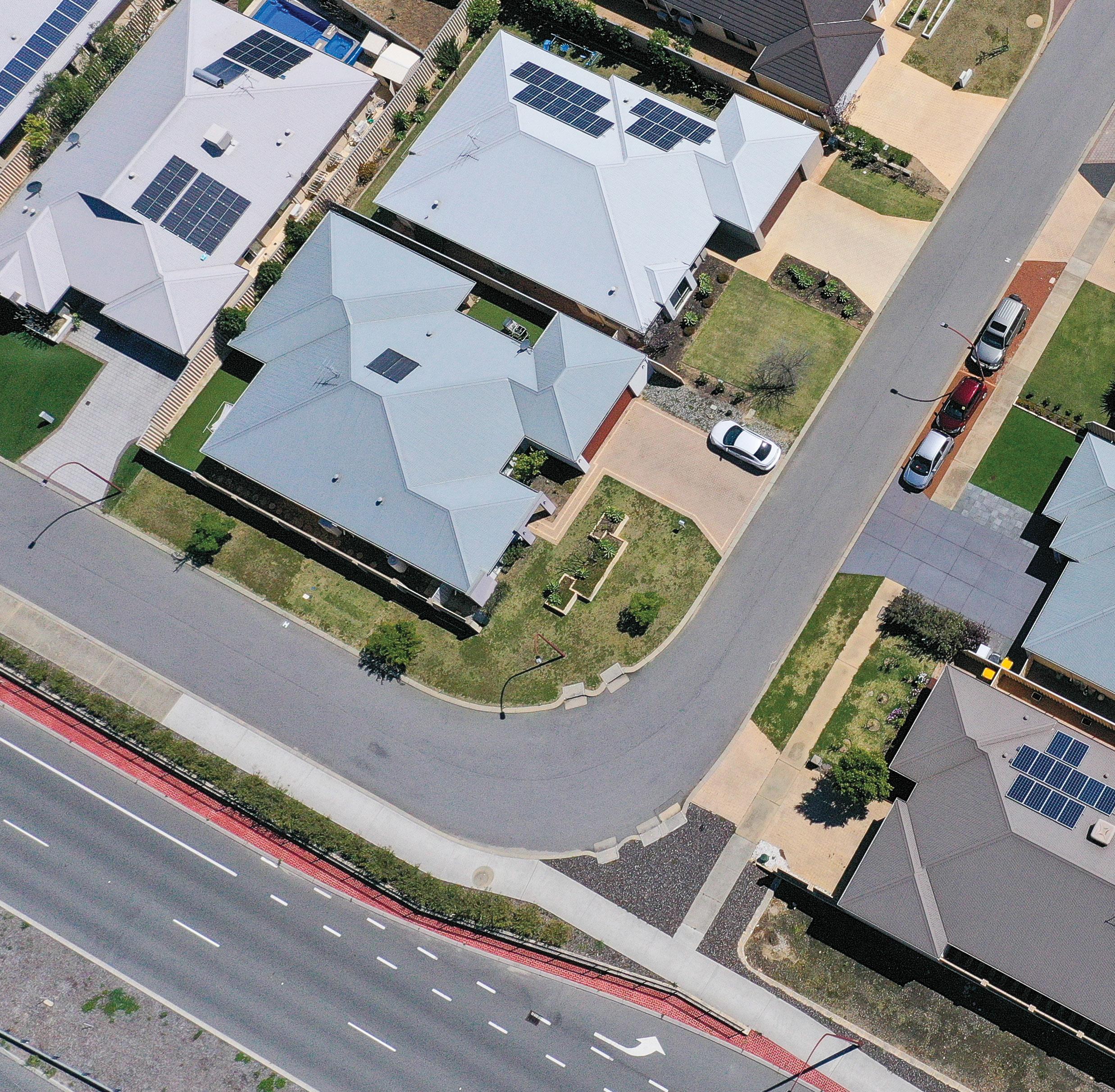
The way energy is generated, managed, and consumed is rapidly changing. Driven by near perfect solar conditions and consumers’ desire for cleaner, lower cost energy, Western Australia now has one in three households with rooftop solar.
In energy terms, this is equivalent to almost 2GW of renewable energy, collectively representing the largest and cleanest source of electricity generation on the South-West Interconnected System (SWIS).
In response to the rapidly changing sector, the Western Australian Government has been delivering on its Distributed Energy Resources (DER) Roadmap, with Project Symphony key to its delivery.
The innovative pilot project has been designed to ‘orchestrate’ approximately 900 DER assets across 500 homes and businesses in the Southern River area of Perth, into a VPP.
Delivered in collaboration between Western Power, Synergy, the Australian Energy Market Operator (AEMO) and the Western Australian Government, the project aims to understand how the opportunities and challenges of
increasing DER can be managed through orchestration of VPP’s by piloting a version of the `Open Energy Networks’ (OpEN) hybrid model.
The hybrid model defines roles and responsibilities for transitioning to a two-way power grid, enabling better integration of customer DER. It also outlines three key roles for Project Symphony partners: Distribution Systems Operator (Western Power), Aggregator (Synergy), and Distribution Market Operator (AEMO).
While ensuring the energy system can respond to challenges during times of peak distributed solar generation, Project Symphony is also aiming to deliver more value to customers from their assets, enabling them to participate in future energy markets and services.
Recently, the project achieved a significant milestone with the successful testing of the intelligent systems that are required to simulate a market which orchestrated the first package of customer energy over a bi-directional balancing market trading interval.
The system integration testing saw seven organisations, including technology partners and project partners across five

UTILITY • AUGUST 2022 WWW.UTILITYMAGAZINE.COM.AU 82
SMART GRIDS
Project Symphony is providing a glimpse into Western Australia’s energy future, with the Virtual Power Plant (VPP) pilot aggregating its first package of residentially generated energy, and then successfully participating in a simulated bi-directional Wholesale Electricity Market (WEM).
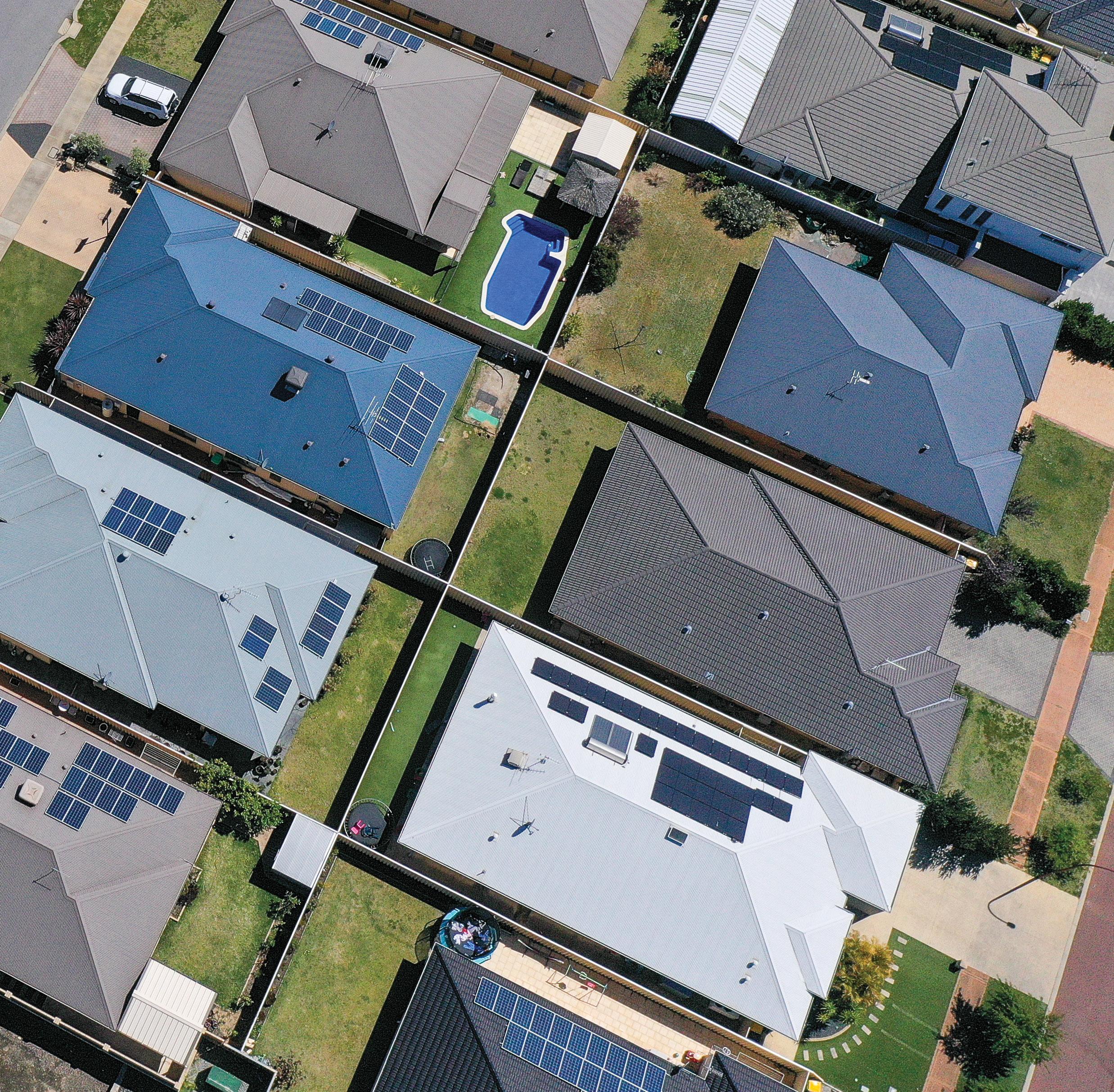
different time zones, conduct 20 integration tests over five days. Of the test scenarios conducted, 19 were successful with a single relatively minor issue to be rectified as part of future testing.
The testing involved the partners’ platforms communicating with each other, providing both instructions and responses that support real electron flow changes to and from DER, whilst engaging with a simulated market environment.
This included Synergy registering a facility comprised of aggregated DER determining its available facility capacity for a trading interval, and incorporating a basic Dynamic Operating Envelope (DoE) at the National Metering Identifier (NMI) level, published to Synergy by Western Power so the aggregator can prepare and provide a market submission to AEMO.
Synergy also managed customer assets from load to generation, to meet AEMO’s dispatch instructions. Western Power monitored the network during the scenario.
Project Symphony Program Manager, Andrew Blaver, said the successful integration was a critical milestone for Project Symphony and in planning for the future of the Western Australian energy system.
“This is exciting for the project and for the people of Western Australia, as it marks the beginning of the Western Australian electricity system understanding how households and businesses could experience broader financial
and environmental benefits from their energy assets,” Mr Blaver said.
“Central to the success of Symphony is its customers. As owners of distributed energy assets, their willingness to participate in the project is essential.
“Customers who have signed up to participate are investing in clean energy systems and utilising their systems to participate in a VPP. They are paving the way to a more sustainable energy future with benefits for the broader community.”
Further testing is already underway, and the focus will be on improvements in automation between the integration layers of the systems, including enabling the aggregator to receive automatic dispatch instructions from AEMO and then set an automatic dispatch of the aggregated facility into the market.
Project Symphony will continue to integrate more customers, including third party aggregators, and test different use case scenarios until the VPP system's ‘stability period’ commences, currently planned for October 2022.
Project Symphony has received support from the Australian Renewable Energy Agency (ARENA) as part of ARENA's Advanced Renewables Program and the Western Australian Government.
For more information on Project Symphony visit Synergy’s landing page and search ‘Project Symphony’.
For more information, visit www.synergy.net.au/Our-energy/For-tomorrow/Project-Symphony
UTILITY • AUGUST 2022 WWW.UTILITYMAGAZINE.COM.AU 83
SMART GRIDS
THE CHALLENGES OF REMOTE MONITORING OF ASSETS
Despite the challenges facing the remote monitoring of water utility assets, new Internet of Things (IoT) solutions provide economical and durable operational means of remote monitoring.
The fundamental challenges that hinder a water utility’s ability to monitor its assets are sparsity of infrastructure and inherent budget limitations.
Many key functional devices in the treatment and distribution of both water and wastewater operate unsupervised. The outcome is a non-proactive approach to asset health and fault event management.
For the utility, the result is felt in elevated maintenance costs, recurring plant failure replacements and frequent unwanted events such as overflow in the wastewater collection line. More broadly for the community, such breakdowns and events spell a significant impact to the state of the surrounding environment as well as the function of the water services they pay for.
The continued emergence of low power IoT solutions, such as LoRaWAN, into the industrial sector gives operational teams a new means of remote monitoring of assets that is both cost effective and highly scalable.
In recent years, Shoalhaven Water has developed a robust LoRaWAN architecture including a network of over 15 gateways covering the Local Government Area (LGA) from Berry in the North to Lake Tabourie in the South, as well as back-end data flows which include cloud access data analysis tools, such as Grafana and SCADA integration for real-time alarming.
Shoalhaven Water continues to undertake innovative LoRaWAN-based remote monitoring projects to address sewer manhole blockage, Pressure Reducing Valve (PRV) pressure issues and smart rubbish bins.
A significant challenge for Shoalhaven Water is managing overflow events in the sewer collection network caused by blockages or ‘choking’ in the pipeline. Choking may occur in both ‘dry’ and ‘wet’ scenarios, meaning it may be caused by an accumulation of debris in the pipe or excessive infiltration of water into the system during rain events.
Of particular concern for Shoalhaven Water the coastal town of Culburra, whose protected bay hosts an important oyster growing trade. The sewer line that runs adjacent to the bay is prone to overflow, particularly in periods of heavy rain. An overflow into the river system incurs a mandatory shutdown of the local industry for three weeks.
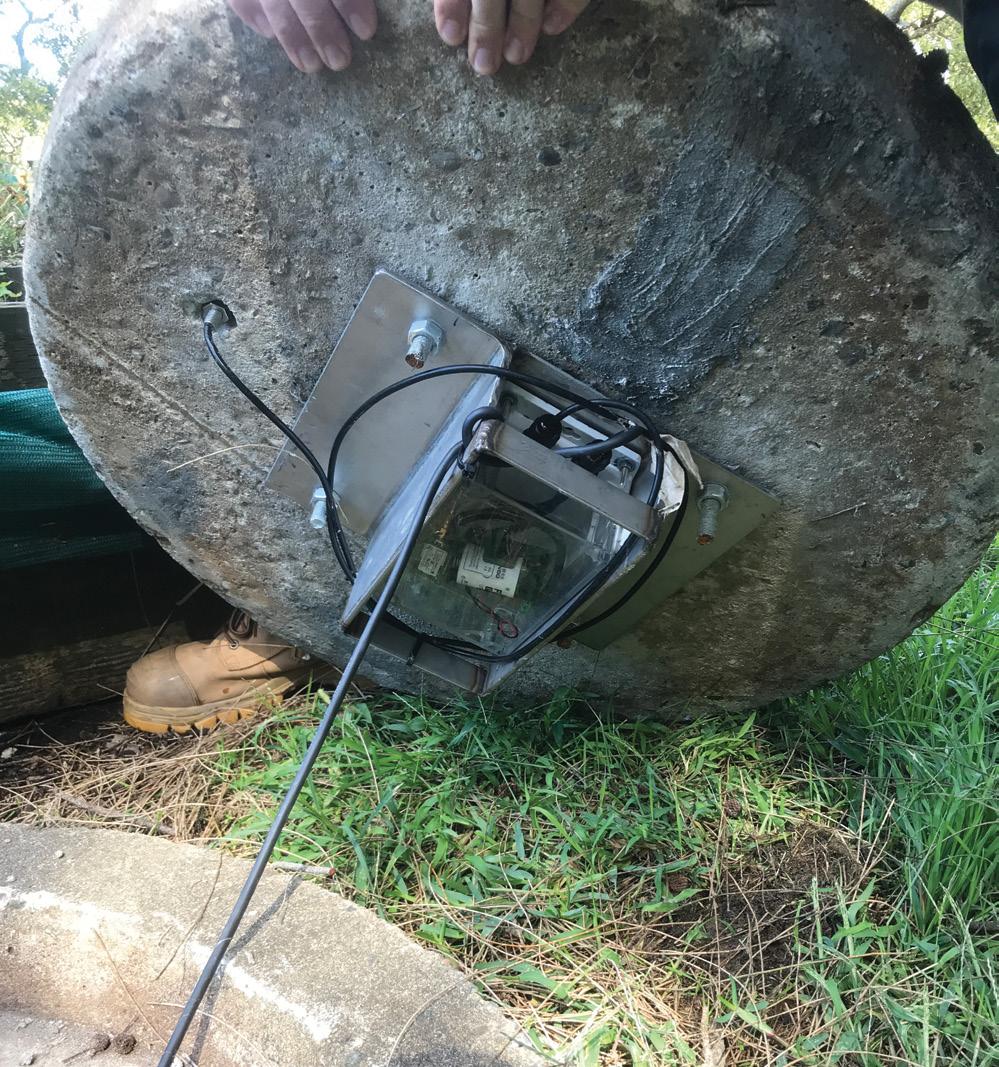
Additionally, such events are in breach of environmental regulations and naturally are of concern for the wellbeing of residents. The remote monitoring solution Shoalhaven Water employed is to hang a float switch in manholes of concern connected to a LoRaWAN device which relays data through a special antenna through the concrete lid of the manhole.
The attendant is notified when the water level in the manhole reaches the height of the float switch indicating that a blockage issue may have occurred. The monitoring method is simple and cost effective, totalling around $350 per site. Integration of IoT data into the SCADA network enables real-time alerting via SMS and email.
Shoalhaven Water is able to take a preventative, rather than reactive, approach to overflow management. Additional benefits - from an operational perspectiveinclude the capability to network interactions between assets along the line, building a holistic understanding of wastewater collection.
UTILITY • AUGUST 2022 WWW.UTILITYMAGAZINE.COM.AU 84
IOT AND SCADA
MANHOLE SEWER FLOAT SWITCH
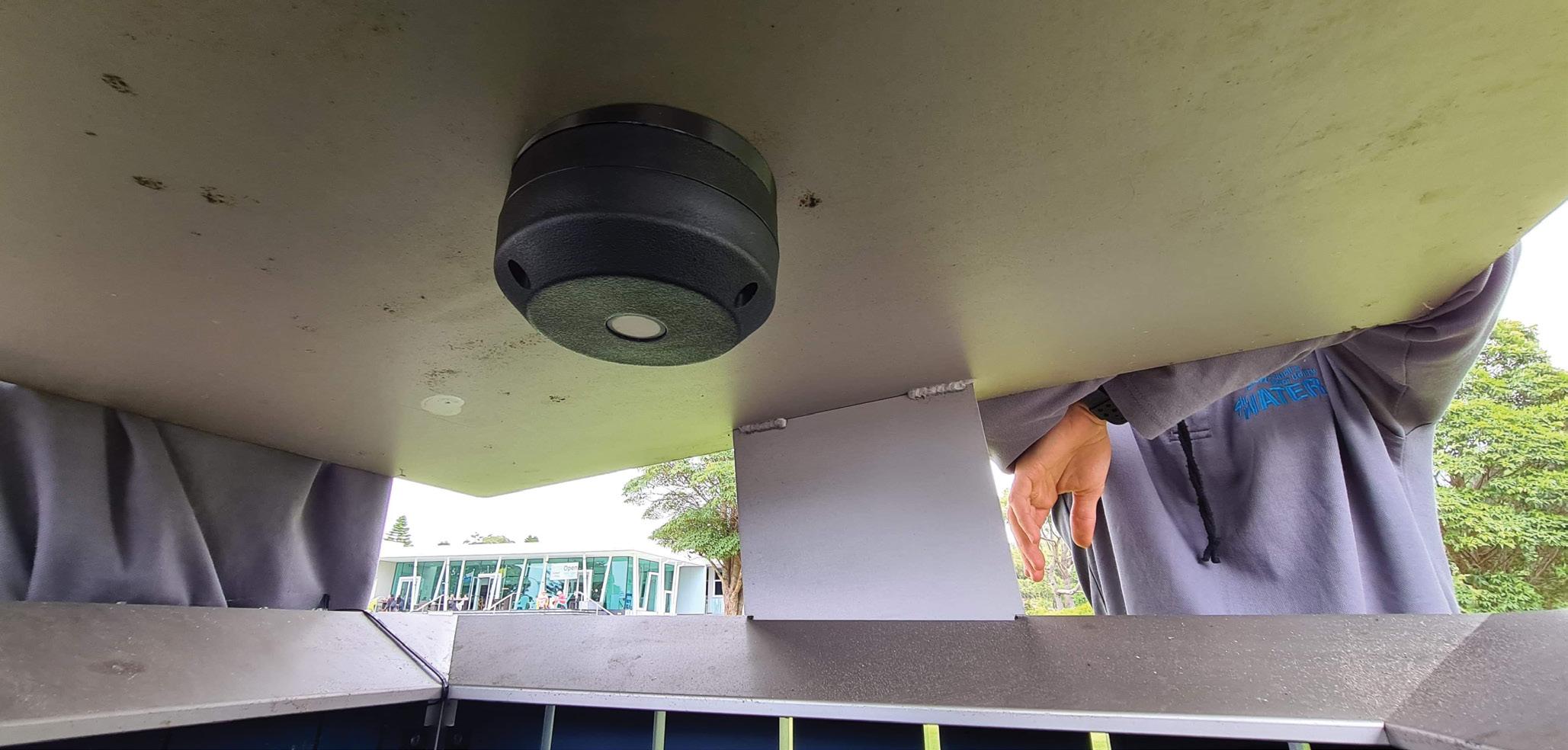
One of the more critical assets in freshwater distribution is Pressure Reducing Valves (PRV). To maintain reliability of supply for consumers, the consistent operation of these valves may now be upheld using remote technology.
By using LoRaWAN-based pressure logging devices that tap-off the water main, Shoalhaven Water can monitor the pressure fluctuations as well as differential pressure across the upstream and downstream sides of the valve. The data provides supplementary measurables that indicate asset health.
The key concept that the pressure logging project addresses is the ability for proactive maintenance in the event of deterioration of the valve or variation in the conditions of the supply to the valve.
The smart rubbish bins project is an initiative that is part of a broader council interest. Using ultrasonic distance sensors secured to the underside of the bin lid, the level of rubbish in the bin is constantly monitored throughout the day. The level measurement enables data analysis of key statistics including frequency of filling and time-of-day usage.
In response to major vulnerabilities highlighted by the 2019 Black Summer Bushfires, Shoalhaven Water continues to innovate, rolling out several solar recharged battery backup systems to our telemetry sites.
The batteries provide redundancy of power during fires for remote sites with low voltage plants, such as valve actuators. Fire deluge sprinkler systems are also being introduced to protect many treatment plants in the event of fire.
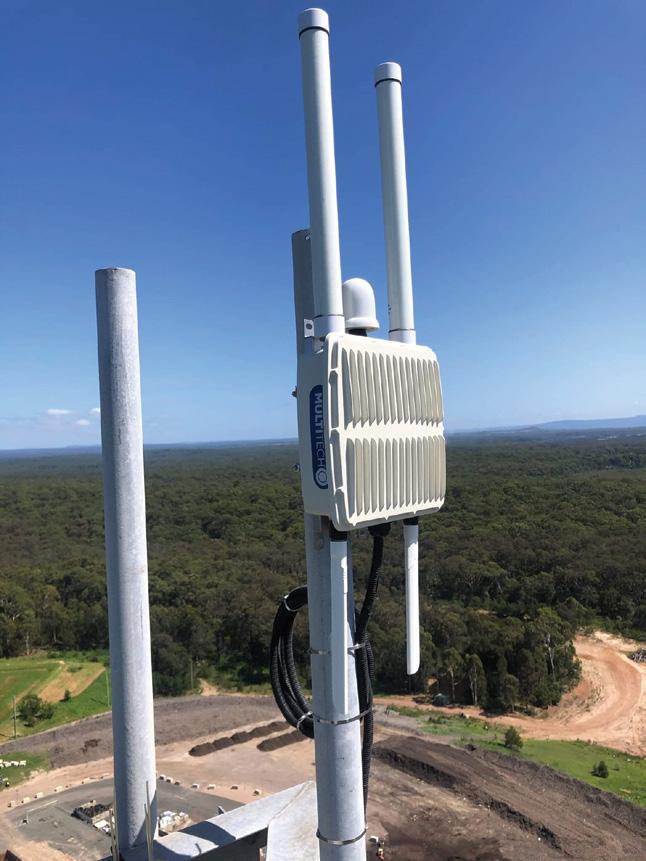
Through remote monitoring technology, what was formerly an infeasible asset to monitor, now allows Shoalhaven Water to make informed decisions surrounding rubbish collection routing and problem areas. Thus, enhancing efficiency of the collection process and providing a cleaner environment for the community.
The LoRaWAN network is, by nature, only complimentary to Shoalhaven Water’s recently overhauled radio telemetry network, which remains the backbone of critical asset monitoring and control.
As Shoalhaven Water’s remote monitoring systems continue to build, several key challenges begin to arise, particularly in terms of operational reliability. LoRaWAN coverage is an ongoing challenge with the hilled terrain and dense bushland in the region.
Cyber security is fast becoming the major concern for IT in water utilities, and IoT networks are at the focal point in terms of how they fit into best practice. Providing an accessible and useful data interface for users is a developing issue that relies heavily on competent device management.
A primary challenge that many utilities will face in their IoT journey is the elongation of battery life and replacement planning as devices reach their end-of-life on a large scale.
The future focus for Shoalhaven Water is to expand current projects, in particular the sewer manhole network, enhance their LoRaWAN coverage through added gateways, further integrate IoT into broader IT cyber security strategies and improve device management and data flow through consultation and development of operational standards.
For more information, visit shoalhaven.nsw.gov.au or email water@shoalhaven.nsw.gov.au.
UTILITY • AUGUST 2022 WWW.UTILITYMAGAZINE.COM.AU 85
IOT AND SCADA
SMART BIN – ULLADULLA CIVIC CENTRE
IOT GATEWAY
INTELLIGENT SCADA SIMPLIFYING THE JOURNEY TO AUTONOMY
By Daniel Watson, Automation Solutions Innovator, Yokogawa

Thanks to the digital revolution, we are suffering from information overload, with the mentality of ‘there’s an app for that’ being accepted as the norm. Studies show that on average there’s more than 100 apps and websites an employee needs to interact with on a regular basis. But what is the impact of this?
SCADA solutions have been around for decades and have been one of the many apps and programs used by operators, engineers, and maintenance personnel. They are seen as an essential part of the automation toolkit, but can often become a point of contention when it comes to data accessibility, interoperability, or data quality.
A utility’s SCADA solution is critical to the operations of its business, not only is it used to ensure proper plant operation, but it’s the vital link between processes in the field and obligatory reporting requirements. The latter is only going to increase, especially as the shift to renewables becomes more stringent.
With the introduction of IIoT, there are now even more apps and integrations to manage as many IoT solutions come with their own cloud platforms (and a cost). An IT expert is almost a mandatory requirement to help manage the data flows and different platforms and it’s not uncommon to have different teams with different objectives each seeking their own solutions.
MORE SYSTEMS = MORE PROBLEMS
With many disparate systems there’s more risk of errors, and more areas where information could slip between the cracks. Unfortunately, we then see redundancy put in to compensate for this blurred boundary, which then introduces additional costs and overhead.
The logical solution is to have the SCADA platform as the data aggregation tool. All information from the field should be fed into the SCADA platform and then it can be shared with other systems as needed. This provides a central repository with all information available.
VISION IN THE CLOUD
Yokogawa’s CI Server has a vision for the future which includes autonomy and reduced complexity. CI Server is a SCADA solution with DCS grade HMI and IT/OT convergence tools at its core, and this was pivotal in the move of a major New Zealand District Council utilising CI Server for their water infrastructure. This installation utilised the CI Server Cloud Subscription which gives easy access anywhere anytime via mobile friendly HTML5 graphics.
The solution has the flexibility and scalability to grow with the council, and the native IOT integrations were critical in bringing data from the pumping and treatment sites via secure MQTT protocol. Through the combination of the Cloud CI Server and the Yokogawa Edge processor, the data integration to existing Omron PLCs was seamless and the data presented where and how it is needed. It’s a solution that can be easily maintained with the existing workforce.
As the world shifts to more technology don’t let the abundance of disparate solutions become a burden on your staff day to day. Consider a single platform which you can make work for you.
For more information, please email au.enquiries@yokogawa.com.
UTILITY • AUGUST 2022 WWW.UTILITYMAGAZINE.COM.AU 86
IOT AND SCADA | Sponsored editorial

Digital Transformation Without Compromise

Wireless IoT sensing for industrial processes from the benchmark for quality & reliability
Phone: +1300
965
email: AU.sushisensor@yokogawa.com website: www.yokogawa.com/au
558
HOW LIDAR AND AERIAL IMAGERY HELP THE UTILITY SECTOR
Utility companies are some of the most advanced users of spatial data, requiring high-quality information delivered at a large scale. Aerometrex has built a strong reputation with its utility clients through its expertise and diversified product.
Multiple large-scale utility customers trust
Aerometrex’s LIDAR solutions and aerial imagery, delivered via MetroMap, as their spatial data sources for planning and ongoing asset management.
Whether you need a regional corridor mapped for pipeline planning or high-quality imagery for utility site management, MetroMap will deliver the quality data you need.

LIDAR – QUALITY AT SCALE
MetroMap LIDAR data is a popular choice with utility customers because of the data quality captured at scale.
Utility clients commission surveys for long-distance delivery infrastructure, spanning hundreds of kilometres through remote and regional areas.
Fixed-wing aeroplanes allow Aerometrex to cover substantial distances required by large utility clients. The LIDAR capture team frequently maps regional corridors up to 500km-long for pipelines and power delivery projects, and regularly covers areas over 100km2 per day in favourable capture conditions.
Such quality and scale within a short time frame is not achievable with alternative aerial captures from drones, satellites, or terrestrial vehicles.
Once captured, Aerometrex derives numerous products from the raw LIDAR point clouds according to end-user needs. Basic Digital Terrain Models (DTM) have removed vegetation and manufactured features to give the truest representation of the bare earth surface.
Digital Surface Models (DSM) are georeferenced regular grid datasets representing the first reflected surface detected by the sensor and will include surface features such as vegetation and man-made objects.
Less common, derived products include mosaics, tree canopy cover, contours, and even stockpile volumes.
showing existing infrastructure and plans for future development.
Survey Manager at Future Generation JV, David Ibbotson, explained the value that MetroMap brings to the project.
“MetroMap has provided a cost effective solution to managing our aerial imagery. Prior to using the product, communication was difficult and time-consuming as prints were distributed manually, over email,” Mr Ibbotson said.
“The ability to progressively combine our drone imagery, underground services surveys and aerial data in one place has been invaluable.

SNOWY 2.0 AND METROMAP
MetroMap is the chosen aerial imagery of one of Australia’s largest utility providers, Future Generation JV, who is part of the delivery consortium of Snowy 2.0.
Future Generation JV consumes MetroMap aerial imagery into its own WMS to combine it with its other datasets. MetroMap’s high-resolution imagery and spatial accuracy make it an ideal visual context for the Snowy Hydro team to add in further data layers
“The platform is stable and simple to use, detailed training to end users is not required as the viewer and mark-up tools are intuitive. This has meant we are able to roll it out quickly to end users that have little or no knowledge of spatial data. That’s a big advantage to a remote project with several otherwise disconnected sites.
“The flexible and unlimited data usage has enabled us to share the data over API keys to many third parties users, all can leverage the data for an overall advantage.”
For further information, please visit https://metromap.com.au/.
UTILITY • AUGUST 2022 WWW.UTILITYMAGAZINE.COM.AU
IOT AND SCADA | Sponsored editorial
88

INSPECT ASSETS FROM THE COMFORT OF YOUR DESK INSPECT ASSETS FROM THE COMFORT OF YOUR DESK
• Manage your infrastructure reliably with frequent captures
• Respond efficiently to maintenance requests
Scan to access free trial
• Measure confidently with high spatial accuracy
• Flexible access via web-application or your own GIS
• Overlay rich cadastre and building insights
metromap.com.au

AUSTRALIA’S PATHWAY TO 100 PER CENT RENEWABLE GAS
By Jordan McCollum, National Policy Manager, Australian Pipelines and Gas Association (APGA)
Delivering renewable gases through new or repurposed gas infrastructure has attracted increasing interest across Australia, due to its lower cost pathway to gas use decarbonisation.
In the report Gas Vision 2050: Delivering the pathway to net-zero for Australia – 2022 Outlook, the Australian Pipelines and Gas Association (APGA) and Energy Networks Australia (ENA) draw on work produced by DNVGL to consider the steps required to enable the delivery of renewable gases to domestic gas customers.
Gas networks and pipelines are preparing to deliver renewable and decarbonised gases. The report by DNV-GL lays out actions that industry and governments need to take to achieve domestic gas decarbonisation.
While all pathways to net-zero gas require the introduction of hydrogen or a similarly abundant renewable gas, biomethane offers the most technically simple and cost effective early emission reduction opportunity.
Biomethane also has the advantage that it is designed to comply with today’s natural gas standards. This means it is able to be used in the natural gas infrastructure and appliances of today.
On the other hand, current appliance testing regimes in Australia only consider up to around ten per cent hydrogen,
and while some infrastructure is hydrogen ready, other infrastructure may require upgrades to enable 100 per cent hydrogen uptake in the future.
Instigating a ten per cent hydrogen blend in today’s gas networks is still an important first step to developing 100 per cent renewable gas networks. This is because delivering hydrogen in a ten per cent blend can help solve the ‘chicken and egg’ problem of developing early hydrogen supply capability by providing early producers a large, receptive market.
This in turn can contribute to hydrogen production cost reductions and investor certainty. Importantly, customer choice is at the centre of all gas use decarbonisation pathways, protecting the rights of energy customers to choose whether gaseous or electrical energy sources are best suited to their individual needs.
Orderly transition towards net-zero gas in Australia requires three key steps to occur. DVN-GL has considered the actions required for each step using the five tenets of customer
UTILITY • AUGUST 2022 WWW.UTILITYMAGAZINE.COM.AU 90
GAS PIPELINES
focus; safety; security of supply; market development; and supply chain development.
The first step enables blending of at least ten per cent renewable and decarbonised gases into natural gas by 2030. This will help get the carbon neutral gas production industry on its feet.
Considering a blend of both renewable hydrogen and renewable methane, this percentage could be even higher, as only the percentage of hydrogen in gas networks is limited for use in gas appliances.
The next step in enabling a net-zero gas system is the development of 100 per cent hydrogen suburbs. Creating a mosaic of individual suburbs where hydrogen can be used in household hydrogen appliances will help develop the market for these appliances.
Individual suburbs and even individual households could use 100 per cent renewable sources of methane without the need for bespoke infrastructure or appliances as these renewable gases require no changes in infrastructure or appliances.
Individual hydrogen suburbs could then be used to build outwards, converting adjacent natural gas networks to hydrogen once supply can be developed. This leads into step three, which encompasses the ultimate goal: enabling 100 per cent renewable and decarbonised gas adoption.
We do not yet know whether the end solution will be 100 per cent zero carbon hydrogen, 100 per cent zero carbon methane, or a mix of the two. In any case, the necessary changes to networks and appliances will be most seamlessly delivered in a staged manner, ensuring safety and reliability is maintained at each step of the transition.
If sufficient, cost-effective sources of renewable methane are able to be developed, the above pathway for gas use decarbonisation could become substantially simpler, reducing the need to change infrastructure or appliances.
While some progress has been made on this pathway, remaining actions to enable 100 per cent net-zero methane are identified as requiring increased focus, in part due to the significant focus that hydrogen has received despite its greater technical complexity.
However, the pathway to enable 100 per cent renewable or decarbonised hydrogen requires many more actions to achieve each of the three industry development goals. While significant progress has been made with a solid work plan under way, other aspects require increased focus.
DNV-GL identifies the development of 100 per cent hydrogen or hydrogen ready appliances in Australia as receiving limited attention to date. This aspect requires significant focus for successful 100 per cent hydrogen market development, and a lack of attention in this area could jeopardise a future domestic hydrogen industry in Australia.
A range of cross-cutting activities have also been identified within the report. Customer engagement and government regulatory activity will require focus to enable either net-zero gas pathway.
From market access and certification to environmental and technical regulation, more work is required to enable this burgeoning industry to achieve its 2030 goals.
The most notable cross-cutting actions yet to be taken include the development of a Renewable Gas Target to support renewable gas develop in Australia. Having benefited greatly from a Renewable Electricity Target it is surprising that the Australian Government is yet to pursue a Renewable Gas Target as part of its emissions reduction policy agenda.
Ultimately, the market will decide on the least costly solution to gas use decarbonisation. However, the pace of renewable gas market development will have a significant impact on whether the opportunity of a lower cost renewable energy pathway is available at any point in time.
The DNV-GL report shows that the industry is already choosing to develop a net zero gas industry, but more work needs to be done.
It is hoped that by detailing the actions required through this report, the gas industry will act on the tangible actions which are outstanding, and both politicians and customers will see a clear pathway to carbon neutrality through the uptake of renewable and decarbonised gases.

GAS PIPELINES For further information, please visit www.apga.org.au or email apga@apga.org.au. 91
AUSTRALIAN-FIRST ROBOT TRENCHLESS TECHNOLOGY
In an Australian-first, Urban Utilities has trialled new robotdelivered trenchless technology which makes water main renewal more efficient, benefitting customers and the environment.
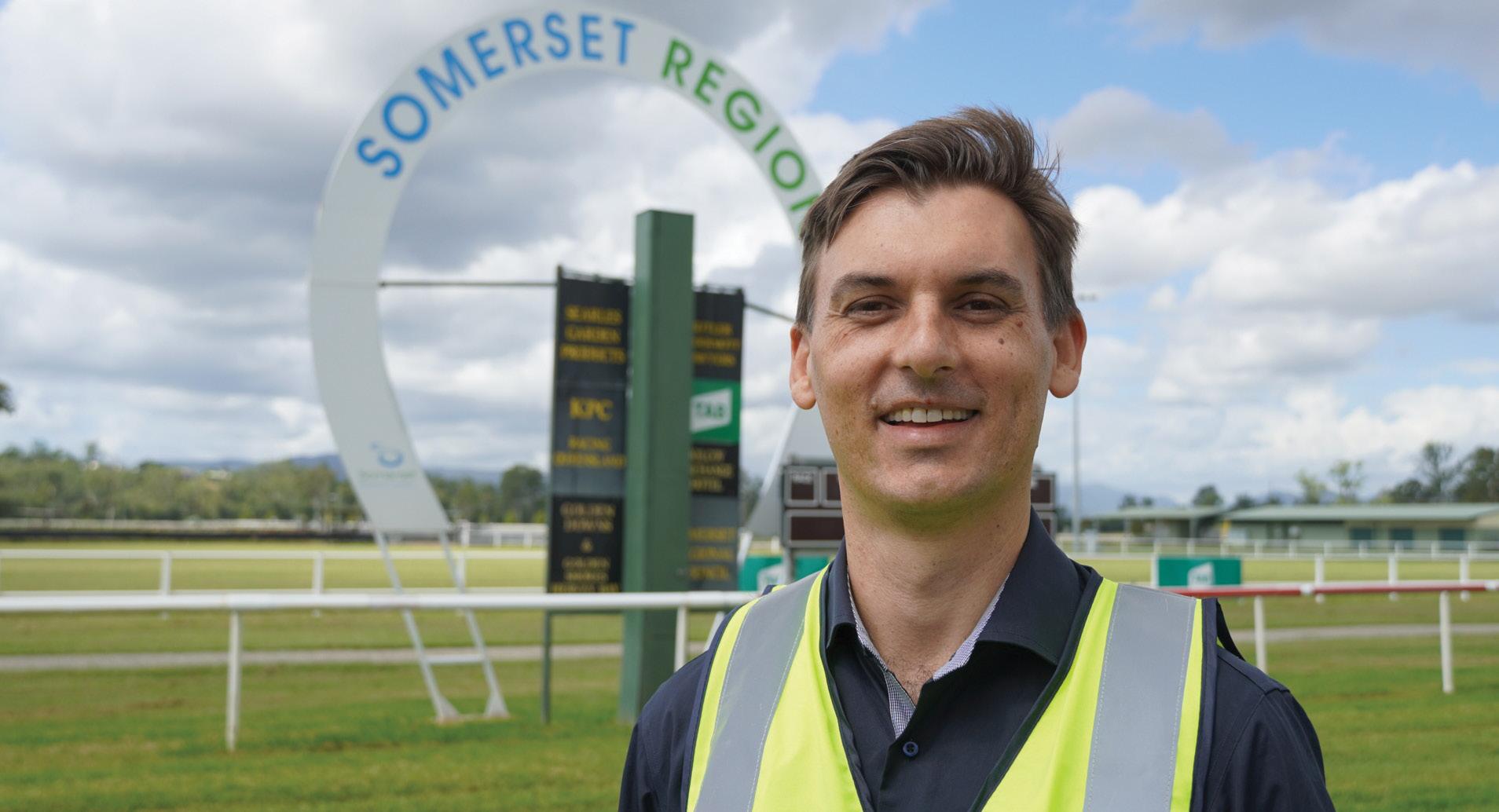
The state-of-the-art Resiline technology sprays a rapidcuring lining inside the pipe, relining it underground and removing the need for a traditional ‘lift and lay’ pipe excavation.
Urban Utilities completed the trial with project partners Downer, WSP and Wilsons Pipeline Solutions, rehabilitating a 90m section of underground pipe in Somerset in South East Queensland.
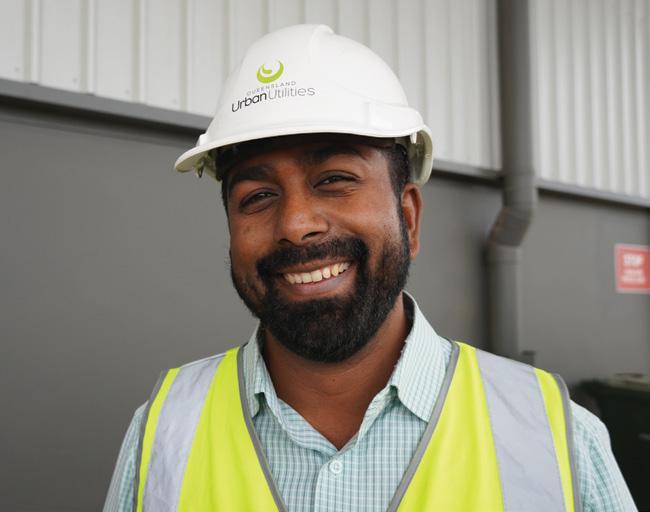
Urban Utilities’ maintenance innovation lead Senthil Kumar said the new trenchless technology had the potential to provide multiple
benefits for customers, operations and the environment.
“With this new trenchless technology, works that would have traditionally taken weeks can be completed in just a few days,” Mr Kumar said.
“This helps reduce our overall carbon footprint and can make essential works more cost efficient.
“The technology also has great potential to benefit our customers, particularly those in busy CBD or popular community areas, by allowing us to upgrade vital infrastructure underground without a need to excavate large sections of footpaths or roads.”
Urban Utilities’ water program manager, Jonathan Farrell, said Urban Utilities would investigate how the technology could be used as part of its existing pipeline renewal program following the successful trial.
“We’re responsible for maintaining a network of 9,000km of water pipes that supply water to more than 1.5
million people across South East Queensland and we’re always looking at ways we can improve outcomes for our environment and our customers,” Mr Farrell said.

“This technology is a great example of Urban Utilities’ commitment to innovation and we’re proud to be part of this Australian-first trial.”
UTILITY • AUGUST 2022 WWW.UTILITYMAGAZINE.COM.AU 92
TRENCHLESS TECHNOLOGY For further information, please visit urbanutilities.com.au THE RESILINE TECHNOLOGY SPRAYS A LINING INSIDE THE UNDERGROUND PIPE, ADDING UP TO 50 YEARS TO ITS SERVICE LIFE
URBAN UTILITIES MAINTENANCE INNOVATION LEAD, SENTHIL KUMAR
URBAN UTILITIES' WATER PROGRAM MANAGER JONATHAN FARRELL AT THE SITE OF THE AUSTRALIAN-FIRST TRIAL IN SOMERSET IN SOUTH EAST QUEENSLAND
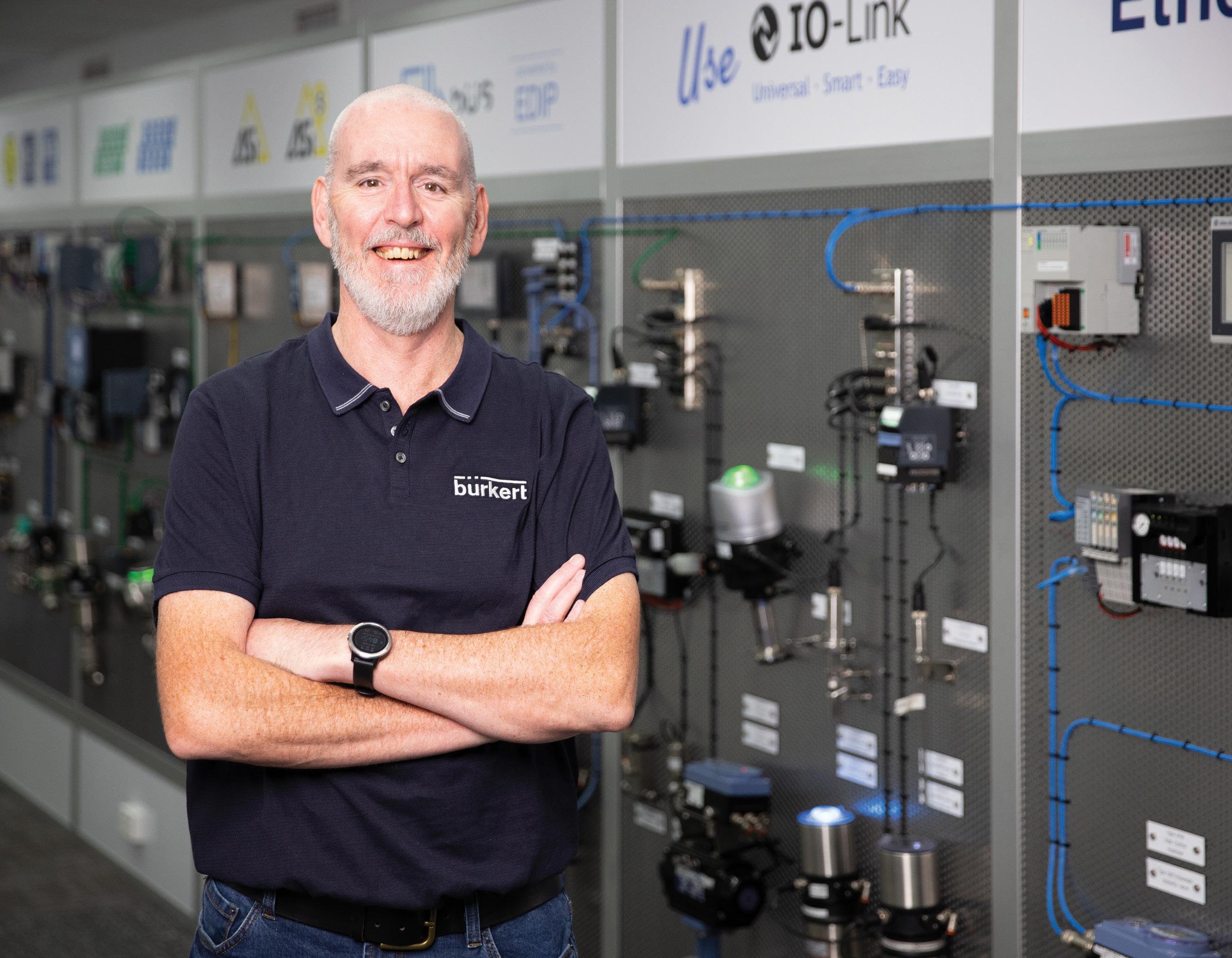


Type 8653 AirLINE Fieldthe valve island optimised for process automation. New diagnostic
at the LC display,
in clear text and as symbols.
these figures are based on average figures, individual results may vary.
Industrial water prefers to partner with Bürkert
functions can be visualised
both
Make the switch > Save on installation costs > up to 40% Improve ongoing operating costs > up to 20% Flexibility of production processes > 100% *
NEW HORIZONTAL DIRECTIONAL DRILL PACKS A PUNCH
Vermeer Australia’s newest addition to its horizontal directional drill line up – the D100x140 S3 – is both versatile and powerful, designed as the perfect addition for utility contractors working in trenchless or pipeline projects.
Nserviceability, durability, versatility, and strength of the drill is what makes it stand out from the crowd, while also meeting emissions standards.
“The D100x140 S3 comes with a Tier 4 engine, focusing on fuel efficiency, while also providing 100,000 pounds of thrust/pullback, 14,000 foot-pounds of rotational torque and 215 rpm, so it’s powerful and fuel efficient at the same time,” Mr Dobier said.
“When it comes to versatility, the drill comes with a 4.5m rod option which is useful for job sites that need
a machine with a smaller footprint. For contractors looking for max on-board rod footage, they can choose the six-metre rod.”
Mr Dobier said both rods have onepiece construction, and stackable rod

TRENCHLESS TECHNOLOGY | Sponsored editorial
“The display has real-time location information, allowing the operator to better monitor drill performance. The drill’s InSite asset management system, available as an option, also provides real-time machine data that can be delivered to your tablet or mobile device,” Mr Dobier said.
“And when it comes to servicing, a pivoting swing-out door allows for easy access to the drill’s hydraulic components, plus a flip-up panel to access the engine bay makes service time simple.
“When you purchase the D100x140 S3, you’ll be backed by the full service and support of the Vermeer Australia team. Our parts, service and sales reps are ready to support our pipeline customers with any guidance or advice they need when looking to expand or upgrade their fleet.”
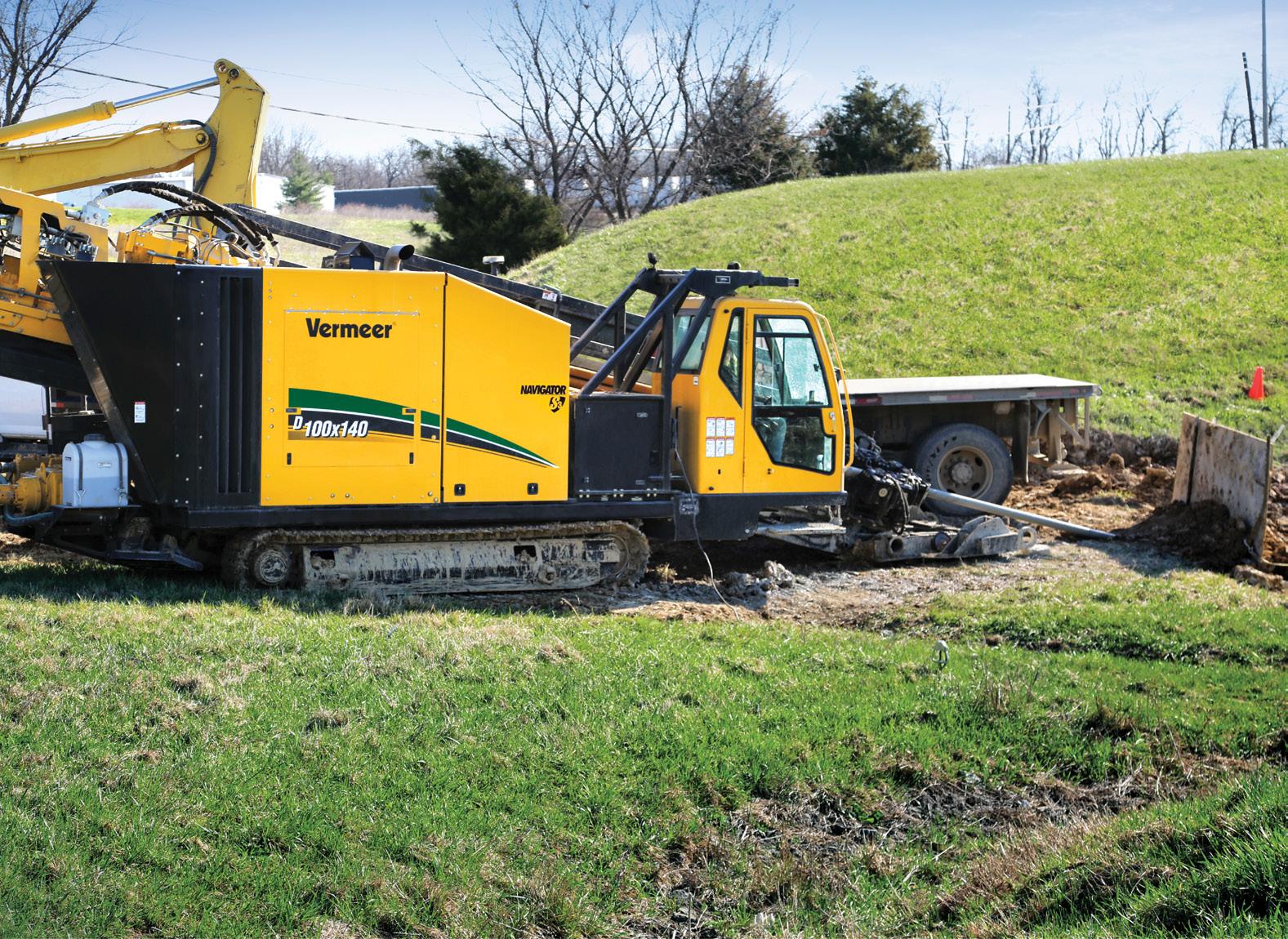
To find out more about Vermeer’s D100x140 S3 Horizontal Directional Drill, head to www.vermeeraustralia.com.au or call 1300 VERMEER

Sponsored editorial | TRENCHLESS TECHNOLOGY
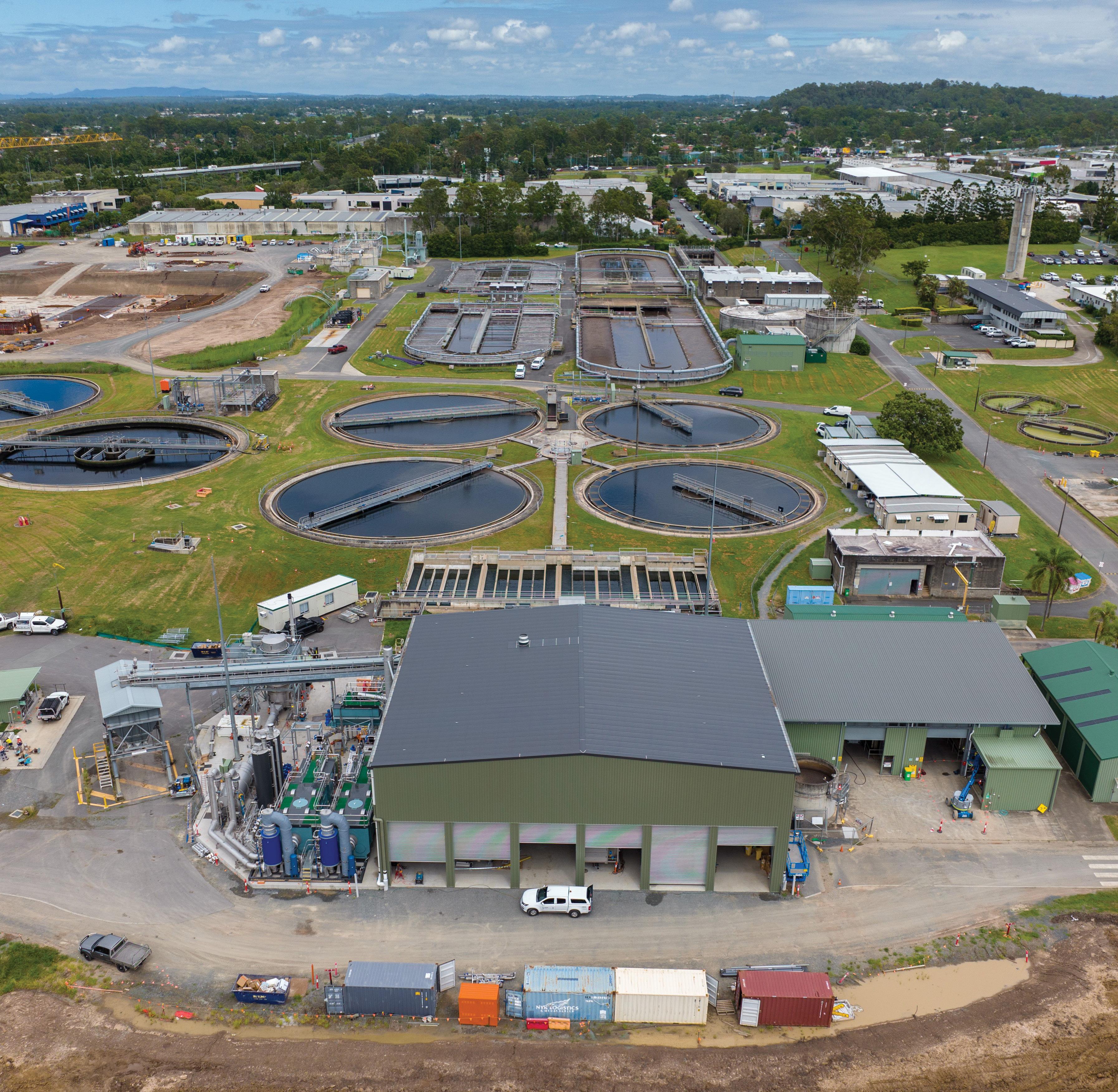
Biochar innovation
PAVES THE WAY TO NET ZERO
Australia’s first biosolids gasification facility is expected to play a major role in sustainably managing the wastewater of the City of Logan’s growing population.
UTILITY • AUGUST 2022 WWW.UTILITYMAGAZINE.COM.AU
WASTE MANAGEMENT 96
The City of Logan, located south of Brisbane in South East Queensland, has a population of 348,000, but it is forecast that half a million people will call Logan home by 2040.
Logan City Council, and its water business, Logan Water, have been looking at innovative, progressive ways to handle the growth spike.
Loganholme Wastewater Treatment Plant, which processes most of the city’s sewage, is expected to play a vital role. Australia’s first biosolids (sewage sludge) gasification facility recently opened at the treatment plant.
It features a process that revolutionises the way municipal authorities manage wastewater.
The brainchild of a dedicated group of innovators at Logan Water, biosolids gasification essentially involves dewatering sewage sludge, drying it at high temperatures and transforming it into a product called biochar.
Biochar is a charcoal-like substance that can be used as a nutrient-rich fertiliser and an additive when making building materials like asphalt and bricks.
The process has a threefold benefit for Council and, importantly, ratepayers.
It reduces the amount of treated waste that has to be removed from the plant every day by about 90 per cent.
Currently, around six daily truck trips are needed to take waste 150km away to the Darling Downs, where it is used as a soil improver.
Under the new process, the gases created during the super-heating of the biosolids are captured and used as energy to dry the biosolids.
The remaining energy needed to produce the biochar is then offset by a 1MW solar array, making the entire process carbon neutral.
The gasification process destroys chemicals in biosolids, such as persistent organic pollutants and micro and nano-plastics.
Those contaminants are an increasing threat to terrestrial ecosystems and human health.
Logan Water worked closely with partners Pyrocal, Downer, WSP
and Stantec to deliver the biosolids gasification facility.
A $6.2 million funding grant from the Australian Renewable Energy Agency (ARENA) as part of its Advancing Renewables Program helped kick start the project.
Operational cost savings and carbon credits will return almost $1 million annually to the City of Logan, while a new revenue stream will be created from biochar sales.
Carbon emissions will be reduced by about 6000t per year.
City of Logan Mayor, Darren Power, said the gasifier is a game changer that has attracted global interest.
“We are the first local government to try something like this in Australia, so its evolution has been keenly watched,” Mr Power said.
“This innovation will benefit the city and the environment for generations.”
The complex construction of the permanent facility included installing two 34t, 18m-long industrial-strength dryers that were built in Germany by Dutch company ELIQUO.
The plant officially opened in April 2022.
Three more solar sites were announced in Council’s 2022/2023 Budget, cementing the organisation’s position as one of the leading generators of solar energy in the city.
Council is also a member of the H2Q Hydrogen Industry Cluster as part of the Queensland Hydrogen Industry Strategy
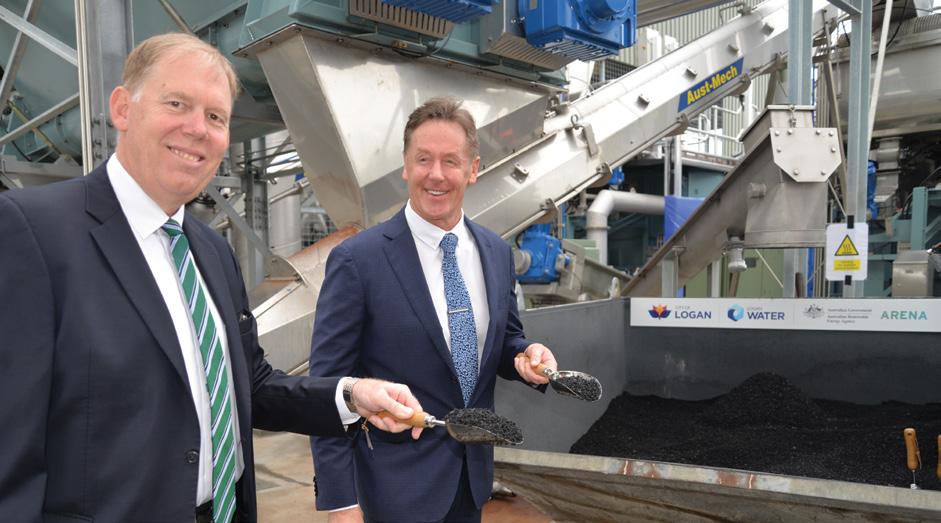
The new technology is just one of many initiatives Council has pioneered to drive down carbon emissions and be carbon neutral by the end of 2022.
The Carbon Reduction Strategy and Climate Resilience Strategy have so far seen more than 2.5MW of solar power installed on Council buildings.
Infrastructure Chair Councillor, Teresa Lane, said the gasifier could set the future standard for wastewater management.
“Disposing of human waste has always been costly and environmentally challenging,” Ms Lane said.
“The gasifier sets a new standard in the management of waste and, as an added bonus, will create a product that benefits our farmers and builders.
“To think this idea was hatched here in Logan is something we can all be proud of.”
A small-scale biosolids gasification demonstration plant was built on the site to prove the technology.
About 40km west of Loganholme is another major contribution to advancing the treatment of wastewater.
The Cedar Grove Environmental Centre is Queensland’s first wastewater treatment plant to benefit the environment through membrane bioreactor technology and constructed wetlands, to achieve record low nutrient levels, and offset remaining nutrients through catchment restoration.
The site is also a centre for research and a community recreation reserve.
The $53 million centre operates under the strictest environmental license ever granted by Queensland’s Department of Environment and Science.
Economic Development Queensland contributed funding to the project.
The project has been recognised with seven industry and Council awards.

For further information, please visit www.logan.qld.gov.au or email media@logan.qld.gov.au 97
WASTE MANAGEMENT
WAMURAN IRRIGATION TO DELIVER RECYCLED WATER
Work is underway on a major recycled water scheme that will provide year-round water security to turf and crop farmers in Wamuran, South-East Queensland.

IRRIGATION 98
IRRIGATION SCHEME
WATER TO LOCAL FARMS

IRRIGATION 99
Unitywater, the water and sewerage services provider for this region, is building the scheme through the Wamuran Irrigation Scheme Joint Venture, made up of contractor Pensar and two local growers – Twin View Turf and Pinata Farms.
The project is the biggest in the utility’s history and is a win for the community and the environment. While farms will have access to a reliable water supply at the turn of a tap, the project also sustainably manages wastewater from the Caboolture South Sewage Treatment Plant (STP).
DEVELOPMENT SIGNALS NEED FOR DIFFERENT SOLUTIONS
With population growth expected to boom in the region, and the resulting higher wastewater volumes forecast to stress the receiving environment if not addressed, Unitywater had an opportunity to provide an alternative option to traditional advanced treatment or ocean outfall solutions.
Unitywater Executive Manager Sustainable Infrastructure Solutions, Daniel Lambert, said the predicted population growth was the catalyst for the scheme.
“Unitywater has been exploring the Wamuran Irrigation Scheme as a viable project for a number of years and we’re thrilled to see it coming to fruition,” Mr Lambert said.
“It means we’re not constructing another steel and concrete plant, but an asset that benefits our growing communities and improves the water quality in our creeks and rivers which flow to Moreton Bay.
“It benefits local growers to improve crop yield and not rely so much on seasonal planning.”
In its first stages the scheme will deliver about 2.6GL of recycled water each year – the equivalent of 1051 Olympic swimming pools – to five farming operations in the region.
It will improve local water quality, diverting eleven tonnes of nitrogen and 1.8 tonnes of phosphorus away from the Caboolture River.
Mr Lambert said the scheme would provide tangible environmental, sustainability, economic and customer benefits.
“Our focus with this project is three-fold: to keep waterways as healthy as possible, to sustainably manage water demand in the region and to provide water security for our customers – the farmers,” Mr Lambert said.
“This innovative scheme will keep our waterways as healthy as possible by significantly reducing that nutrient load on the river. The recycled water will help us to sustainably and cost effectively manage water demand and it will provide water security for turf and crop farmers in Wamuran.”
HOW THE SCHEME WORKS
Mr Lambert said the scheme would use a combination of upgrades to existing infrastructure and newly constructed assets.
“Our contractor Abergeldie is delivering the new disinfection facility at the STP by converting and recommissioning the South Caboolture Water Reclamation Plant. These works are critical to the Wamuran Irrigation Scheme,” Mr Lambert said.
Pensar Managing Director, Karl Yunker, said Class A recycled water from the Caboolture South STP would be
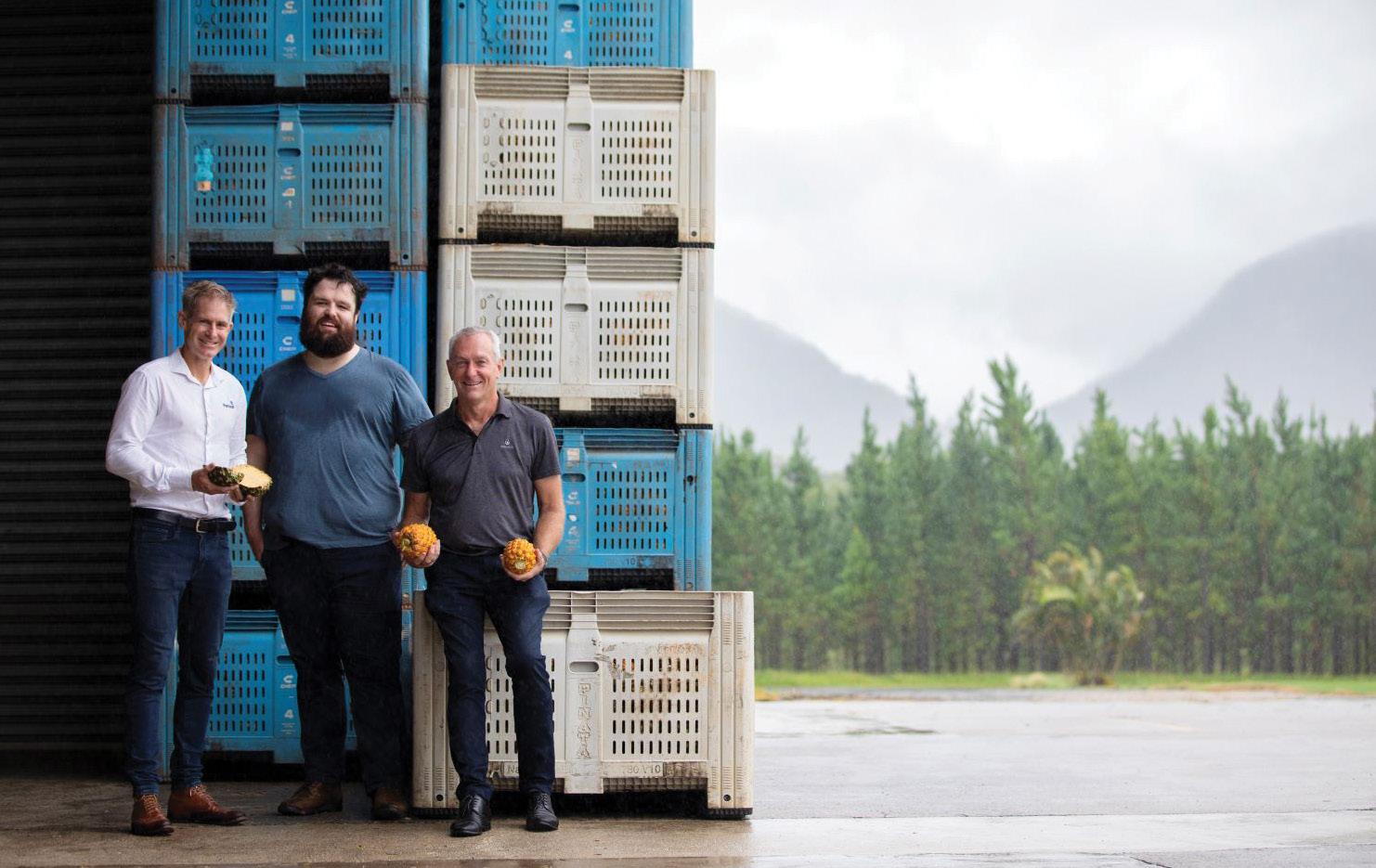
“Our focus with this project is three-fold: to keep waterways as healthy as possible, to sustainably manage water demand in the region and to provide water security for our customers –the farmers,” Daniel Lambert, Unitywater Executive Manager Sustainable Infrastructure Solutions
IRRIGATION
100
treated in a disinfection facility before being transferred via a 10km pipeline to Moodlu Quarry.
“The quarry acts as a storage tank and the water will pass through a water quality management facility when it arrives there,” Mr Yunker said.
“The benefit of using the old quarry is that the water can be stored there to meet seasonal demand. From the quarry, water will be delivered to farms through another 12km pipeline to be safely irrigated onto crops.”
A WIN FOR LOCAL FARMERS
Mr Lambert said the climate-independent irrigation was a win all-round.
“At Unitywater, we’re committed to delivering sustainable services and initiatives that support our focus on the environment,” Mr Lambert said.
“The Wamuran Irrigation Scheme is an innovative way to manage our wastewater, protect our environment and waterways and help local growers improve their businesses with a reliable water supply.
“They will be able to expand their operations and have positive flow-on effects for the local community.”
Pinata Farms Managing Director and third generation business owner, Gavin Scurr, said the scheme would significantly benefit the region.
“The Wamuran Irrigation Scheme provides water security, potential for greater crop production, and creates employment within the local region. The whole community benefits,” Mr Scurr said.
Twin View Turf General Manager, Lawrence Stephenson, said the Wamuran Irrigation scheme was critical for water security in the region.
“It will allow growers to build strong businesses that aren’t vulnerable to changes in weather events and patterns, building a solid foundation for the future,” Mr Stephenson said.
“The region has a number of long term agribusinesses including avocado, pineapple, berry and turf producers planning sustainable futures that span the next 30 years.
“The Wamuran Irrigation Scheme brings significant confidence to this local industry.”

WATER QUALITY ASSURANCE
Once the scheme is operational, and following a minimum 13-week water quality validation period, Unitywater must secure an approved Recycled Water Management Plan from Queensland Health and the Government’s Office of Water Supply Regulation.
“This approval will allow the scheme to safely supply Class A water to minimally processed food crops,” Mr Lambert said.
“Different crops are irrigated differently and this approval considers all of that. Prior to obtaining that approval, and to demonstrate that the water is safe and compliant with food crop requirements, the water will be provided to a turf farm.”
Mr Lambert said as the regional population grew, further stages of the scheme would follow.
“As the region grows and we produce higher volumes of recycled water through our STP, we’ll be able to open up the scheme to additional customers in this area,” Mr Lambert said.
“We’re really excited to be progressing this project and remain committed to sustainable development in our region.”
The first stage of the scheme is expected to be operational in mid-2024.
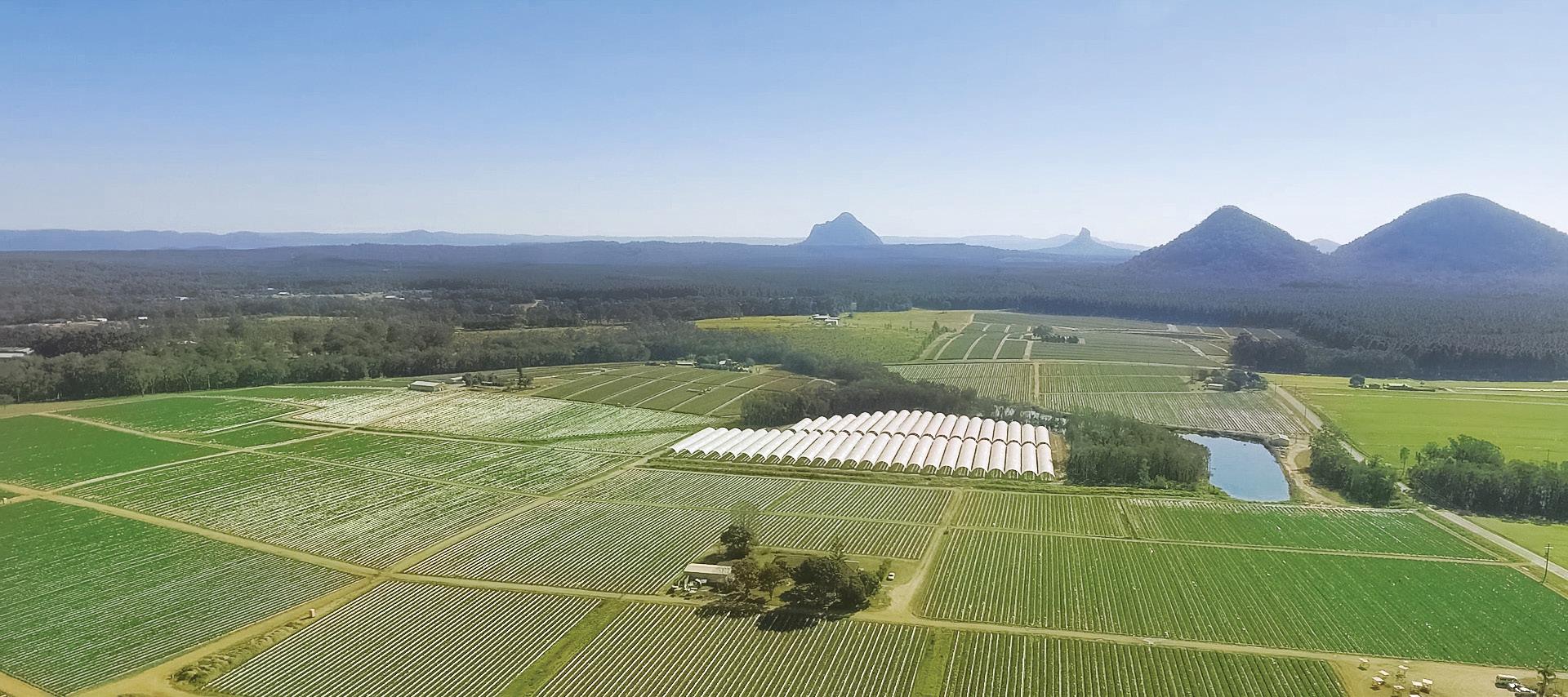
UTILITY • AUGUST 2022 WWW.UTILITYMAGAZINE.COM.AU IRRIGATION
101
more information, please visit www.unitywater.com/wamuran.
For
What are the benefits of utilising an air hammer drilling tool in microtunnelling?
In the past, very hard rock has posed a problem for microtunnelling machines, with most tooling struggling to successfully drill through it to install a pipeline to specifications. This means most contractors turn down projects where the geotechnical information has identified this ground condition or stop a job part way through when they unexpectedly hit very hard ground. A new drilling tool – an air hammer – has been designed and proven to work in very hard rock while maintaining accuracy, productivity and efficiency, and providing additional environmental and work health and safety benefits.
DRILLING THROUGH ROCK
The new technology was inspired by the increasing need for drilling rock on fine grades and a lack of options available to do so with high rates of success and/or time and cost efficiency.
This new drilling tool is based on a new pneumatic rock hammer – which uses air driven hammers (similar to vertical DTH heads) – that Edge Underground had just developed and proven on-site using prototypes to advance the capabilities of its AXIS laser guided boring machine. It is ideal for use in very high strength rock.
MAINTAINS ACCURACY
When using the new air hammer, a pilot line guides the head to maintain accuracy. It can be operated via the next generation AXIS drill rods with a power enhancing driver, and has been tested and proven with the extra heavy rods of the AdaptX – a new machine on the market with unparalleled capabilities, manufactured by Bournedrill.
ENVIRONMENTAL AND WHS BENEFITS
The new tooling also has environmental and workplace health and safety benefits. It enables small to medium size pipe diameters to be installed in hard rock faster, with a significant reduction in spoil removal and truck movements compared to open cut methods.
Furthermore, when used in conjunction with the ‘keyhole’ pipeline installation method – pioneered by and synonymous with Edge Underground – it further reduces the amount of excavation required for smaller diameters, which in itself greatly improves the health and safety outcomes on-site.
PROVEN IN THE FIELD
This technology’s ability to work in high strength rock was proven in a recent project in Donnybrook, Melbourne, where it was successfully used to install a pipeline in 250MPa+ basalt.
The project was for Yarra Valley Water (YVW), with Edge Underground and Diona contracted for the works. In order to meet all the technical requirements, Edge Underground needed to utilise many of the upgrades to its AXIS system. At the time, the upgraded system was untried. After many discussions, YVW, Edge, Diona and Bamser worked collaboratively and concluded this was a perfect opportunity to test the new concept.
This system was used to overcome the very difficult ground conditions. Without it, the only other option would’ve been to upsize from DN700 to DN1200 and install concrete casing pipe – a greater cost to the client.
The result was a great success, with the technology surpassing all client expectations; microtunnelling on average four times faster than a conventional system, avoiding the need to upsize to a far larger diameter, and saving time and money.
The air hammer is a new innovative technology to the microtunnelling market, and has been patented by Edge Underground.
ABOUT STUART HARRISON
Global microtunnelling pioneer Stuart Harrison is the Managing Director of Edge Underground, where he specialises in on-grade microtunnelling installations with millimetre accuracy.
Stuart is also the inventor of the AXIS Guided Boring system, and he is constantly working to improve the effectiveness of this and other trenchless systems used in the installation of gravity sewers.
To discuss your next microtunnelling installation, contact Stuart on 1300 JACKED or at stuart@edgeunderground.co
102 UTILITY • FEBRUARY 2022 WWW.UTILITYMAGAZINE.COM.AU

Want to reach utility industry decision makers?
In B2B, the sales cycle is long. You’ll always have people at different stages of the buying cycle, so your marketing needs to be always on.

Decision makers in the utility industry gain information from a wide range of sources. The team at Utility are able to provide a complete range of marketing solutions:
● Brand building
● Educating the market
● Generating leads
● Creating engaging content
● Managing your social media and SEO
● Setting up marketing funnels
We also have a team of editors, designers and marketing experts who specialise in the energy sector and can help make the most of your campaign.
Scan this code to learn how we can help you ensure your marketing is always on.
www.utilitymagazine.com.au

NOVEMBER 2022
MAY 2023
UTILITY • AUGUST 2022 WWW.UTILITYMAGAZINE.COM.AU SECTION 104
Advertisers’ index Aerometrex 89 Allight Sykes 21 Altavec 65 AMS Instrumentation & Calibration 22 AUSJET22 23 Bintech Systems 20 Boerger Pumps Asia 47 Burkert Fluid Control Systems 93 Clean TeQ Aromatrix 9 Compliance Quarter 35 Edge Underground 79 Enviroline Group 8 Fluke Australia IFC FMT-Field Machine Tools 33 GPS Trade Australia 31 Harcor 63 InEight 32 Interflow 57 Iota Services 53 Itron 81 KPMG 13 Kwik-Zip OBC Lanco Group 10 Metasphere Australia 15 Monkey Media 103 NHP Electrical Engineering Products 75 Pezzimenti Trenchless 11 Polymaster 49 Proco Products 59 Projex Group 12 Pulsar Measurement 45 Rimco 29 Steel Mains 39 Taggle Systems 48 Toolkwip Pumps 5 True Water Australia 41 VEGA Australia 25 Veolia Water Technologies (Australia) 14 Vermeer Australia 94-95 we-do-IT 67 WIOA IBC Yokogawa Australia 87 EVENT DISTRIBUTION (TBC) AUGUST 2023 MAJOR FEATURES WATER OPERATIONS AND TREATMENT STORMWATER ASSET MANAGEMENT SMART GRIDS SPECIAL FOCUS GAS PIPELINES TRENCHLESS TECHNOLOGY IoT AND SCADA WASTE MANAGEMENT IRRIGATION EQUIPMENT & MACHINERY PIPE & CONDUIT PUMPS, VALVES & FILTERS SALES DEADLINE 23 JUNE 2023 MAJOR FEATURES BIG DATA CYBER SECURITY SOLAR SYDNEY WATER SPECIAL FOCUS MAPPING, GIS & SURVEYING UTILITY LOCATION SEWER REHABILITATION EMBEDDED NETWORKS DISTRIBUTED GENERATION CUSTOMER EXPERIENCE EQUIPMENT & MACHINERY DRONES SWITCHGEAR FEBRUARY 2023 SALES DEADLINE 2 DECEMBER 2022 EVENT DISTRIBUTION (TBC)
EDITORIAL SCHEDULE
MAJOR FEATURES WATER MANAGEMENT DEMAND MANAGEMENT ENERGY NETWORKS SUSTAINABILITY SPECIAL FOCUS INSPECTION, CCTV & CONDITION ASSESSMENT MOBILITY VEGETATION MANAGEMENT ENERGY STORAGE FUTURE FUELS EQUIPMENT & MACHINERY SMART METERS MICROTUNNELLING SALES DEADLINE 31 MARCH 2023 EVENT DISTRIBUTION (TBC) EVENT DISTRIBUTION WIOA SA
MAJOR FEATURES RENEWABLES DISASTER MANAGEMENT CORROSION RETAIL, BILLING & CRM SPECIAL FOCUS LAND ACCESS TRANSFORMERS & SUBSTATIONS PIPELINE INTEGRITY & LEAK DETECTION SAFETY DAMS EQUIPMENT & MACHINERY HORIZONTAL DIRECTIONAL DRILLING (HDD) SALES DEADLINE 23 SEPTEMBER 2022
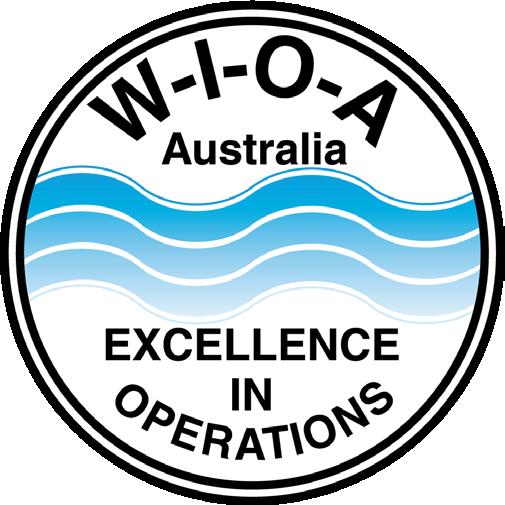
Water Industry Operations Conference & Exhibitions 2022
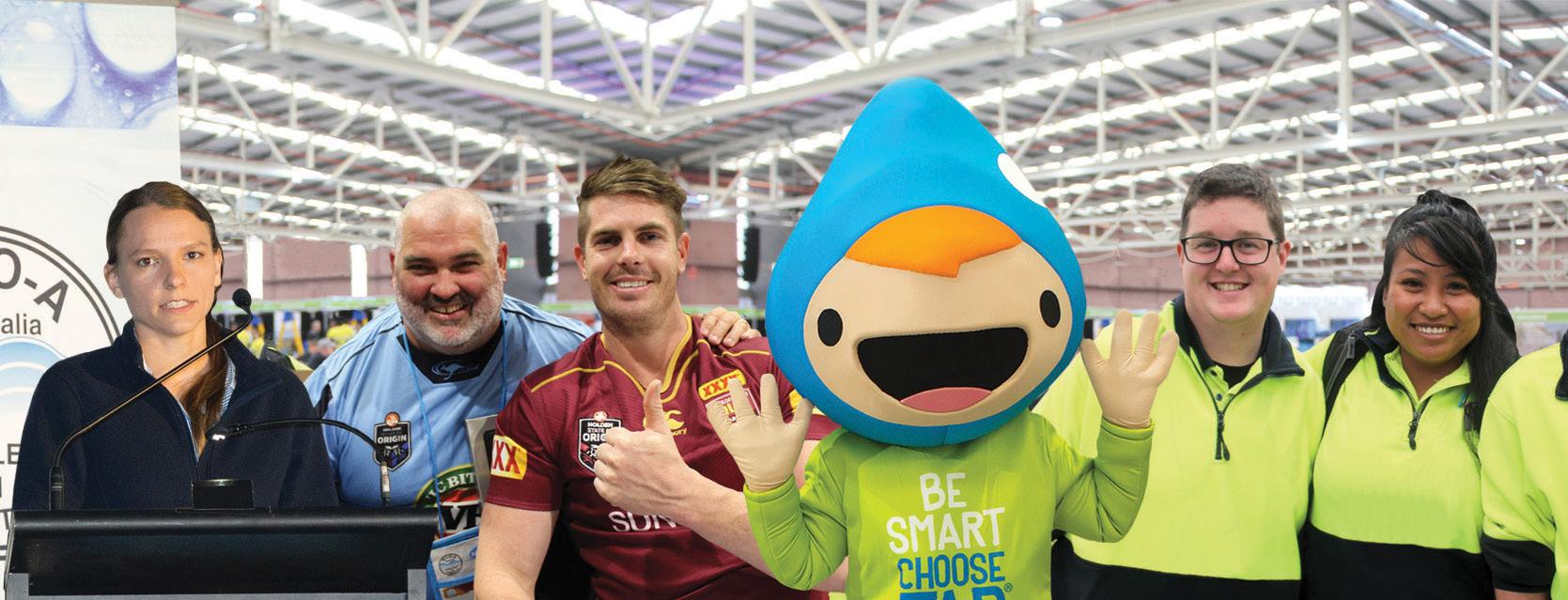
Personnel involved in the operation and maintenance water related infrastructure should attend these conferences. A great forum for all involved in water operations to:
• Listen and learn from the experience of others through the latest information
• View and discuss technical equipment, products and services with suppliers
• Update knowledge and skills through interaction with other water industry employees

QLD 3 & 4 August VIC 22 & 23 June SA 9 & 10 Nov NSW 6 & 7 April SAVE THE DATES www.wioaconferences.org.au info@wioa.org.au 03 5821 6744 BE COVIDSAFE REGISTER TODAY

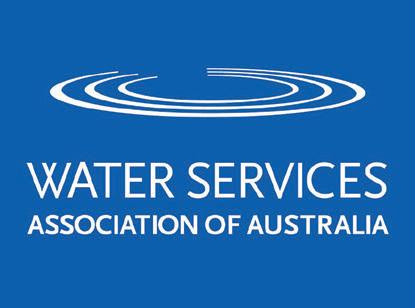
KWIK-ZIP’S HDX SERIES CASING SPACERS COMPLY WITH WSAA PRODUCT SPEC #324 – CASING SPACERS; REFER WSAA PRODUCT APPRAISAL REPORT #1523 Is your pipe spacer compliant? Call us for details on ordering P (08) 9725 4678 sales@kwikzip.com www.kwikzip.com












































































































 By Christopher Allan, Journalist, Utility magazine
By Christopher Allan, Journalist, Utility magazine














 ENGAGEMENT AND EDUCATION MANAGER AT URBAN UTILITIES
ENGAGEMENT AND EDUCATION MANAGER AT URBAN UTILITIES






































































































































